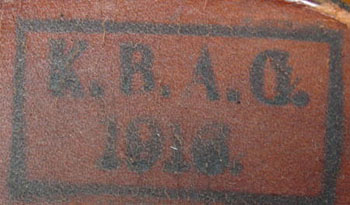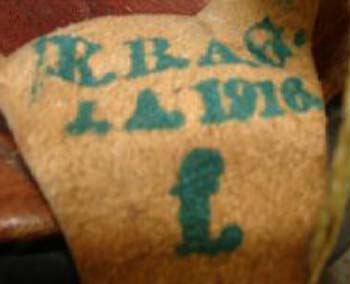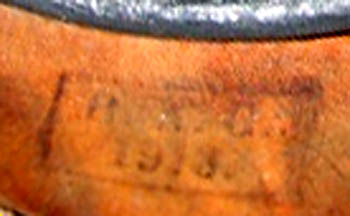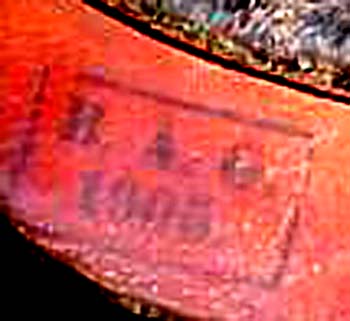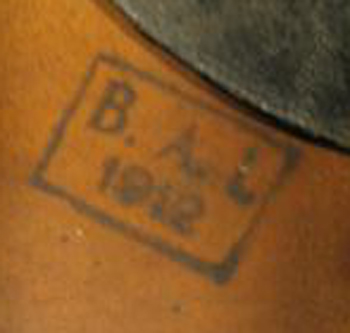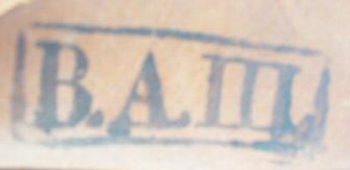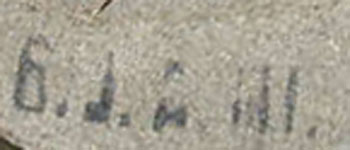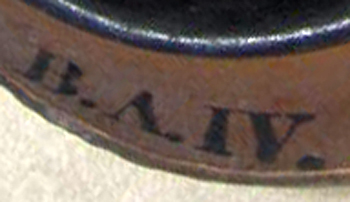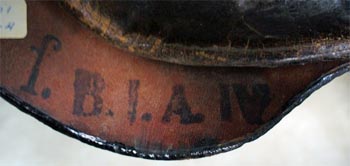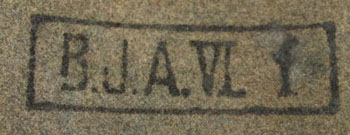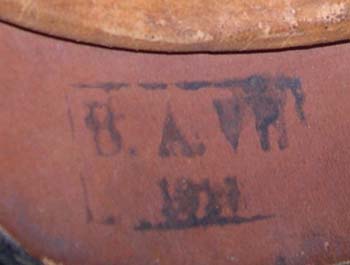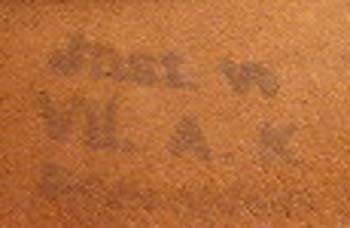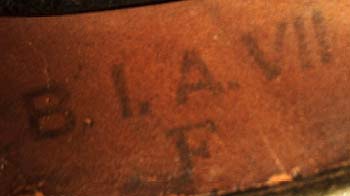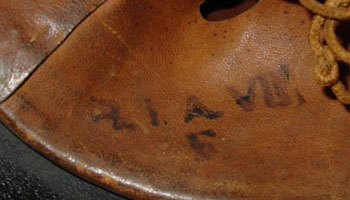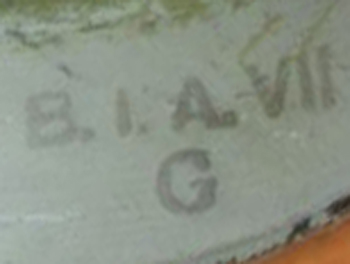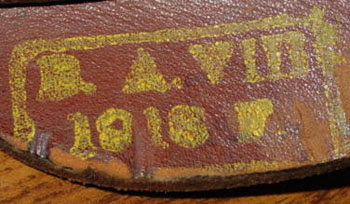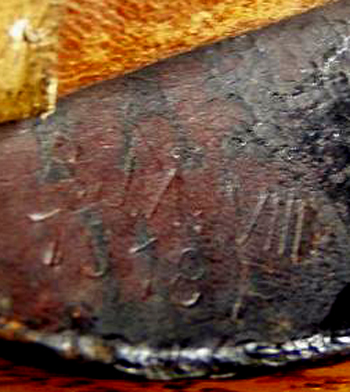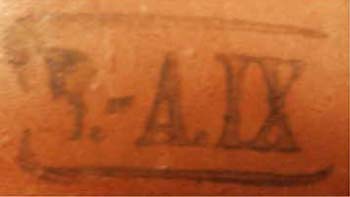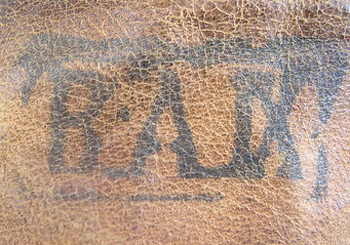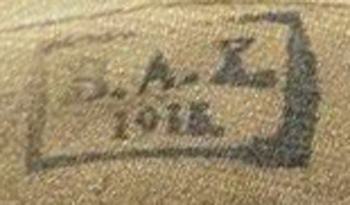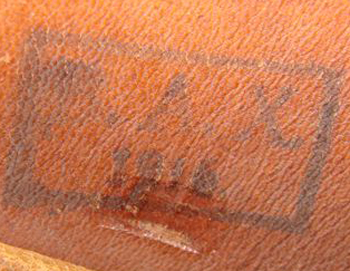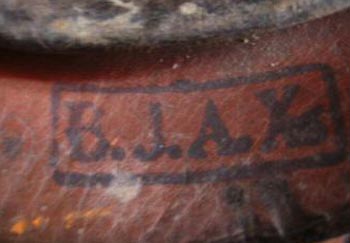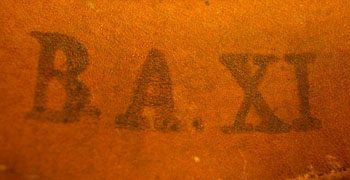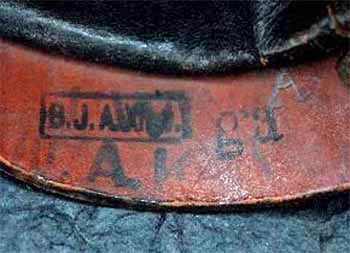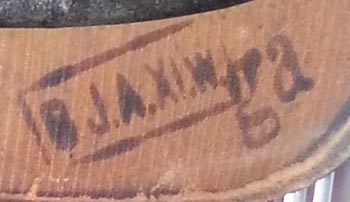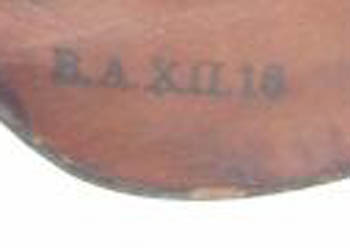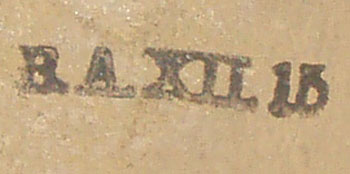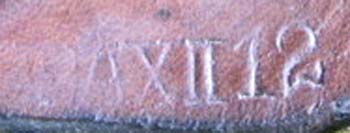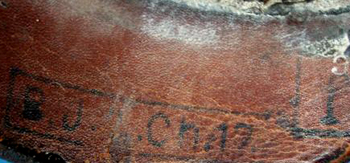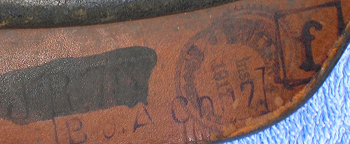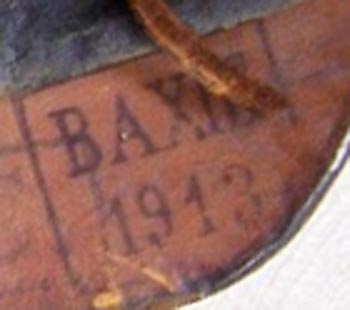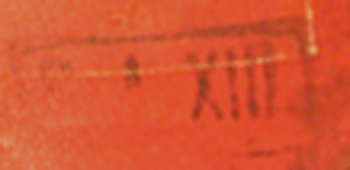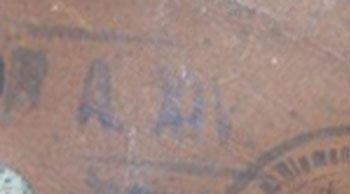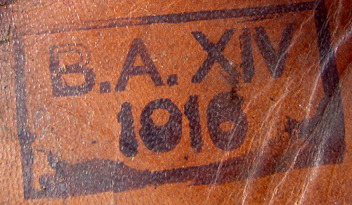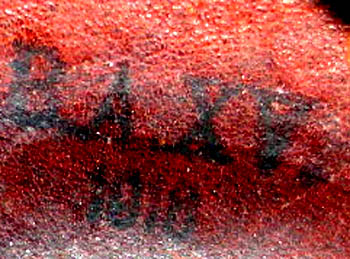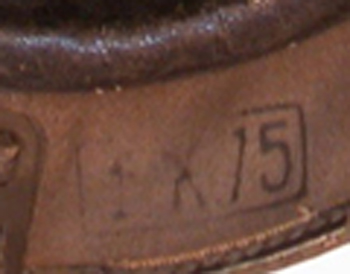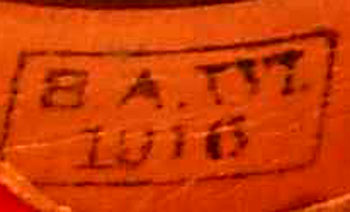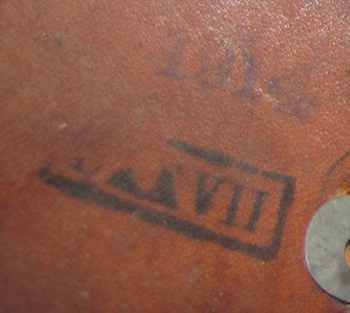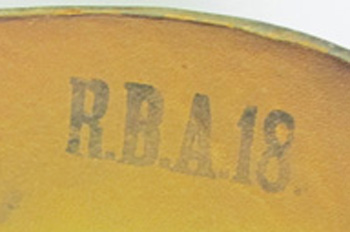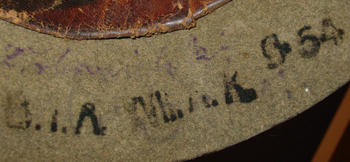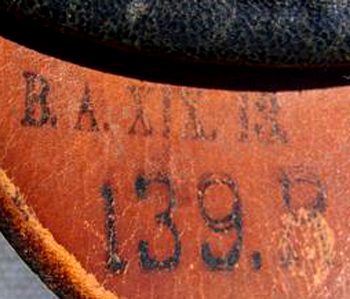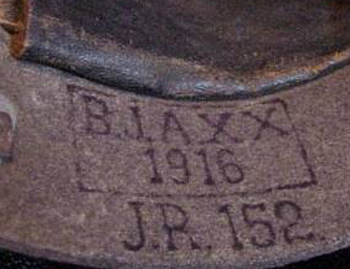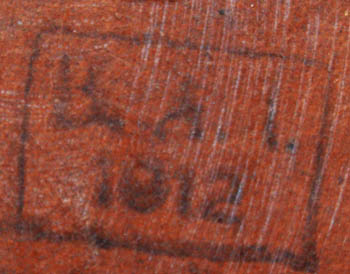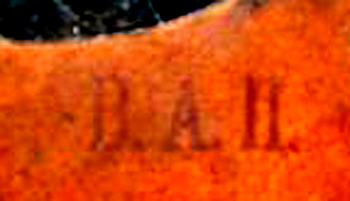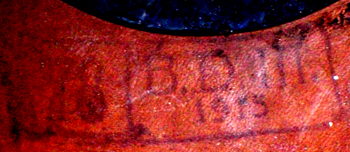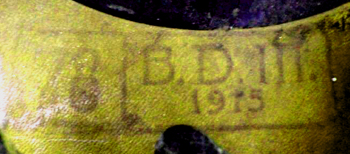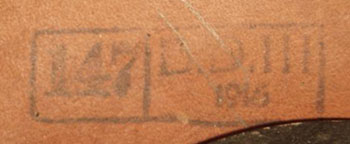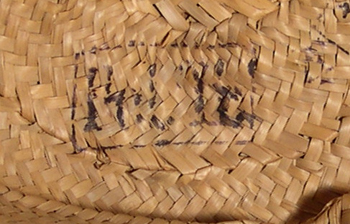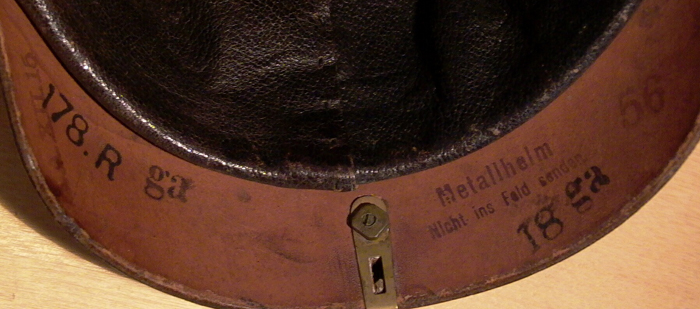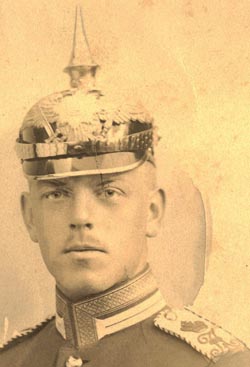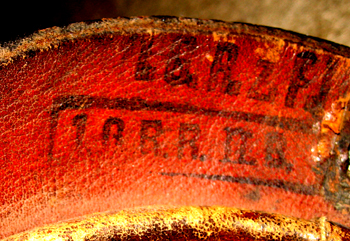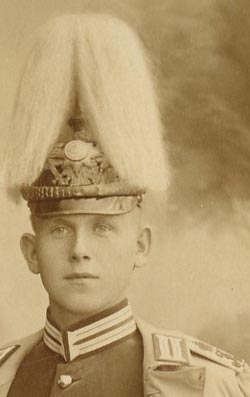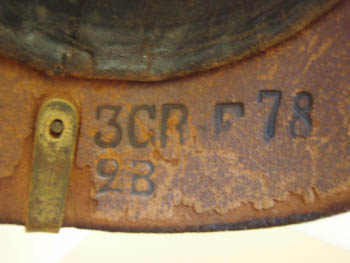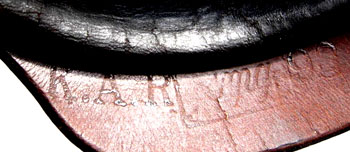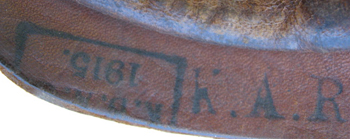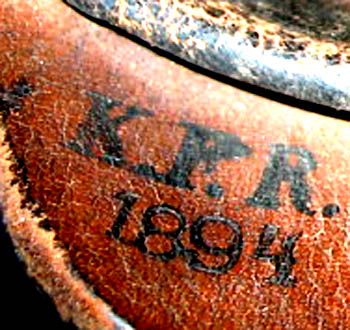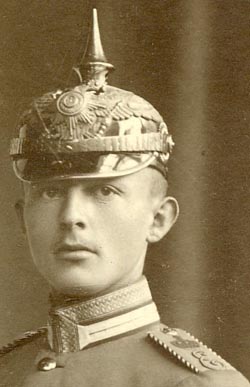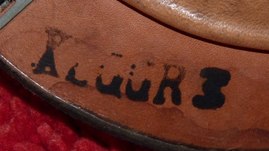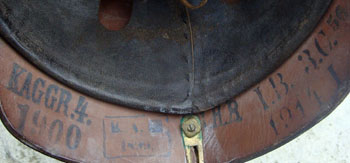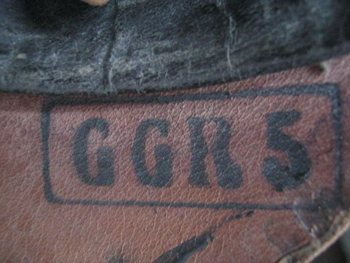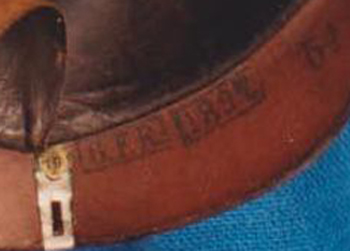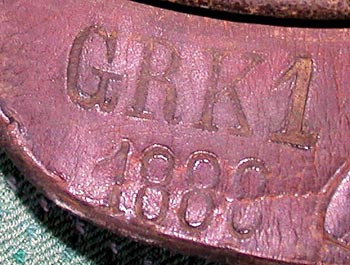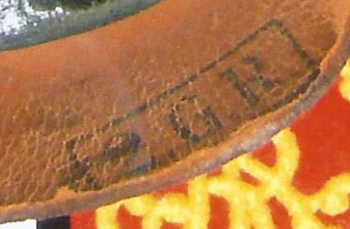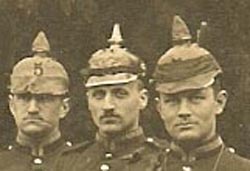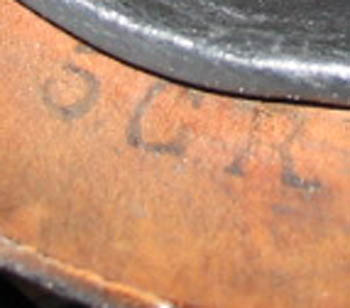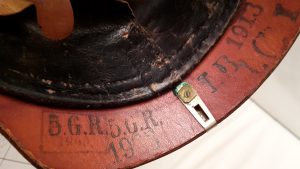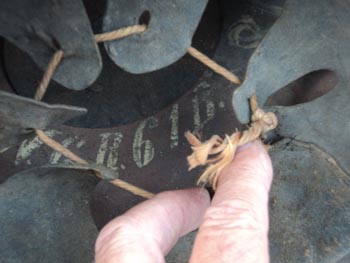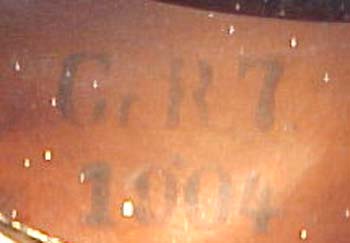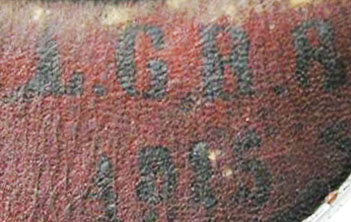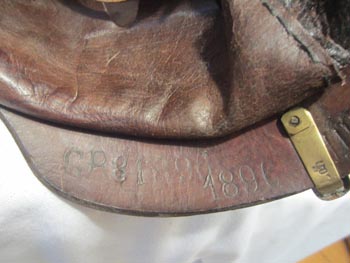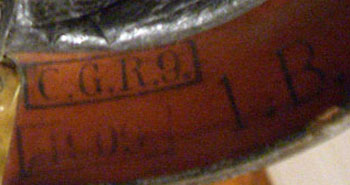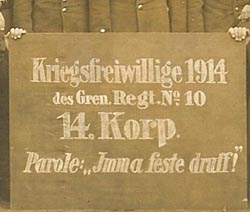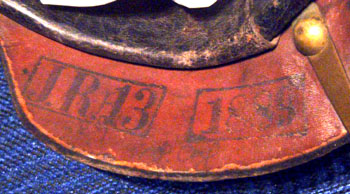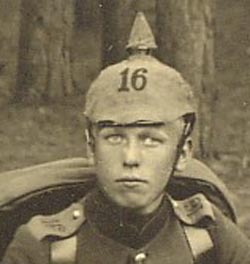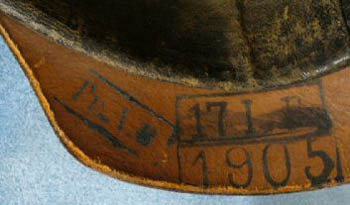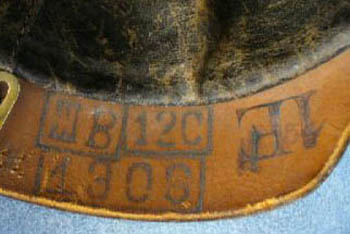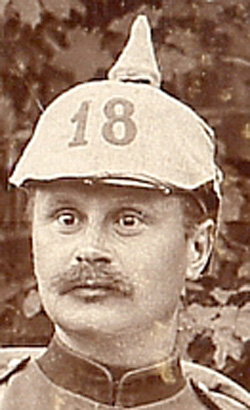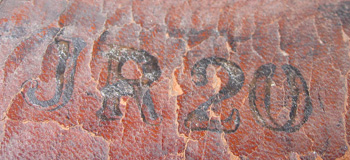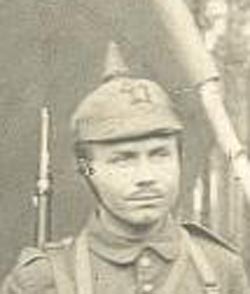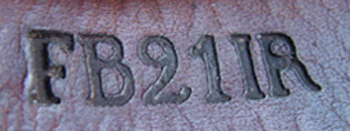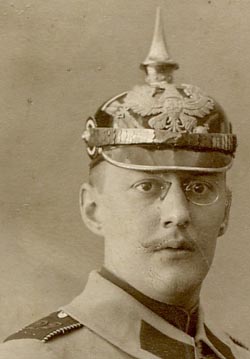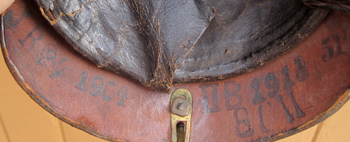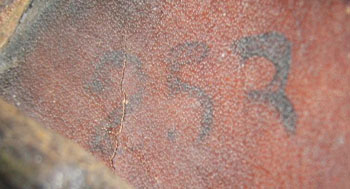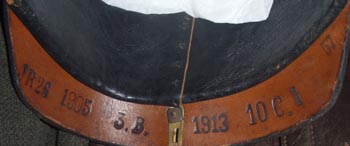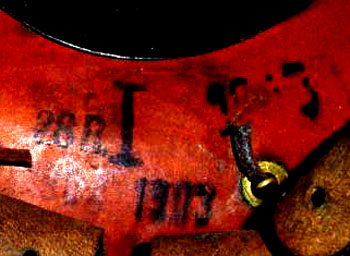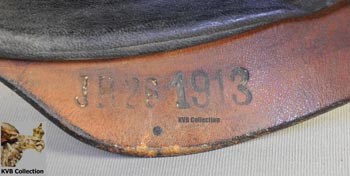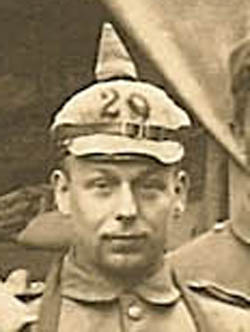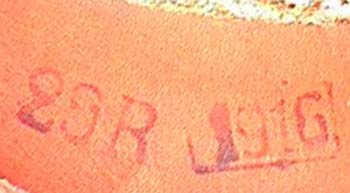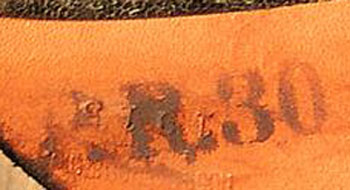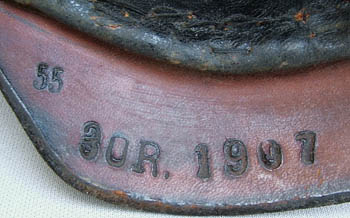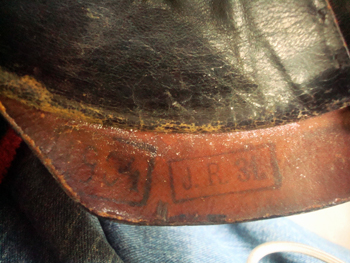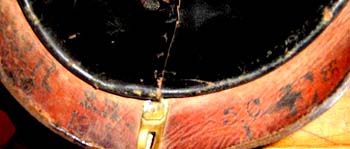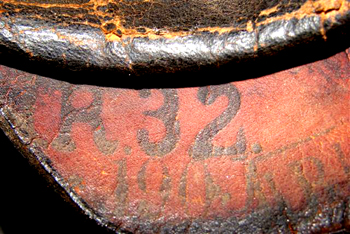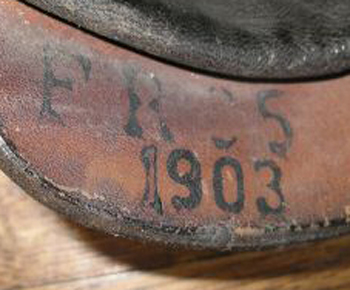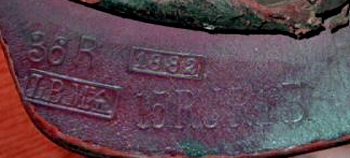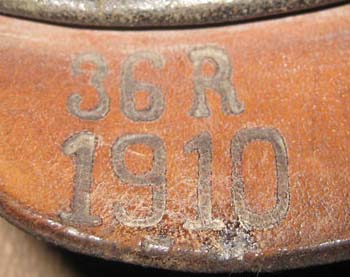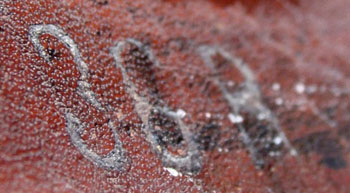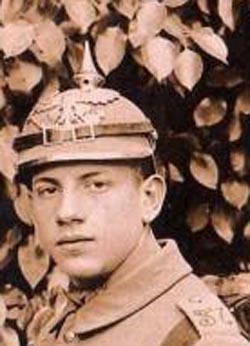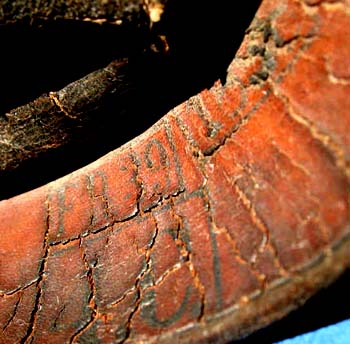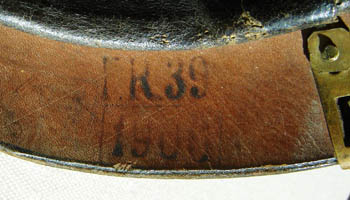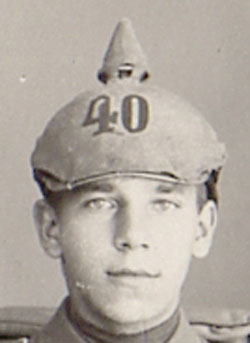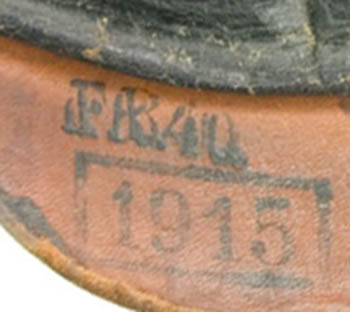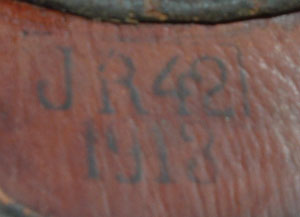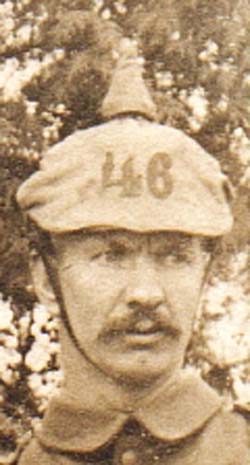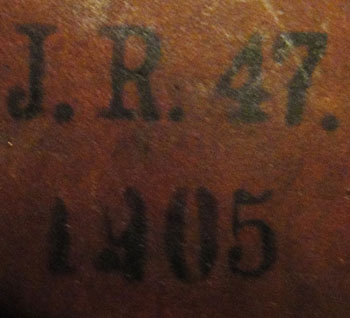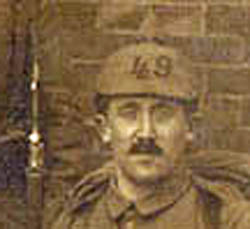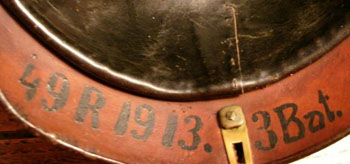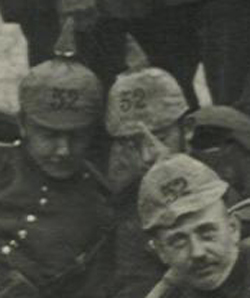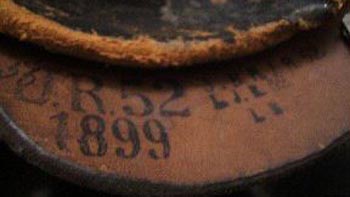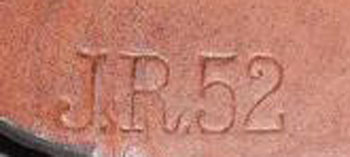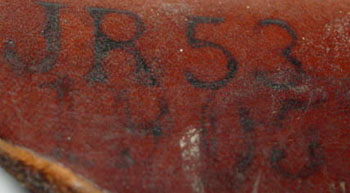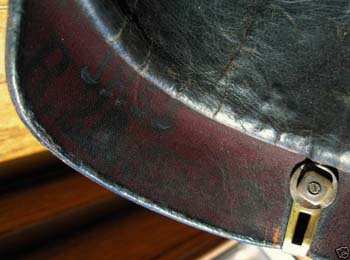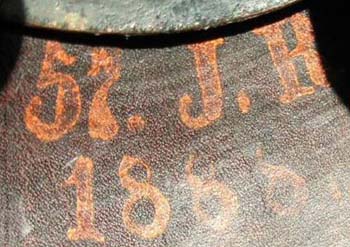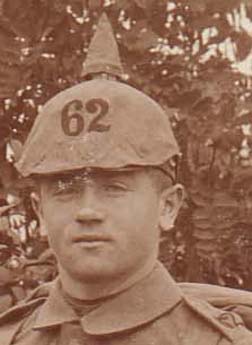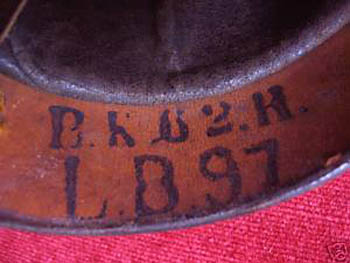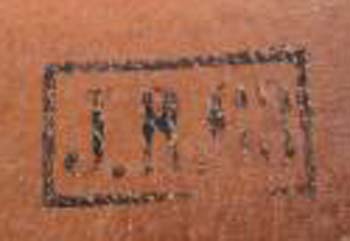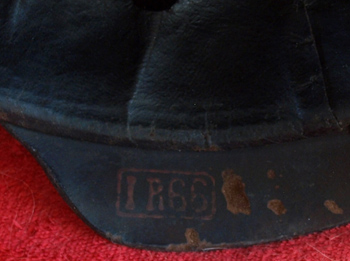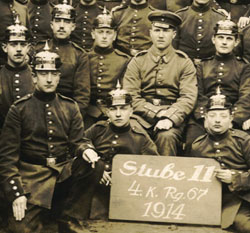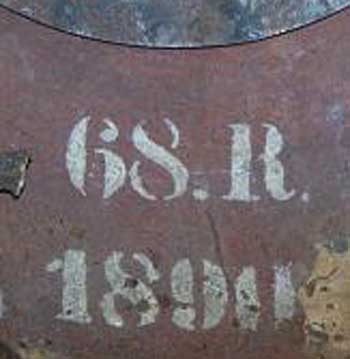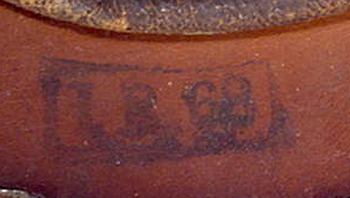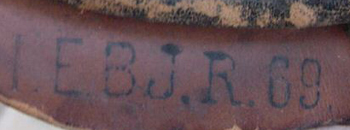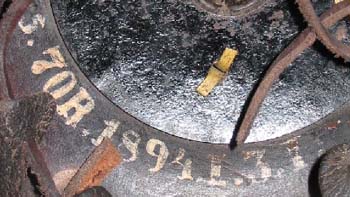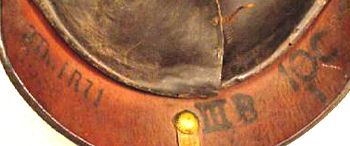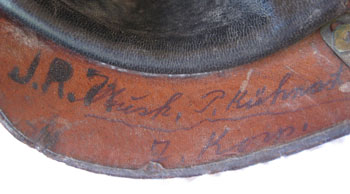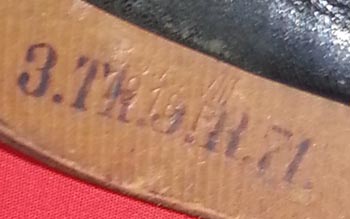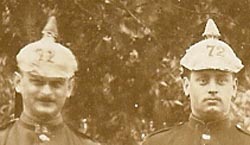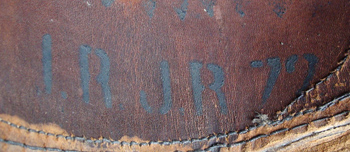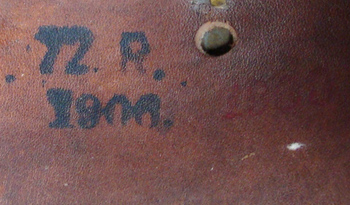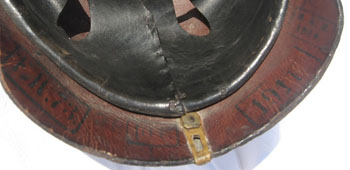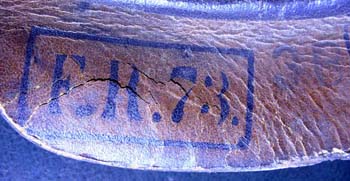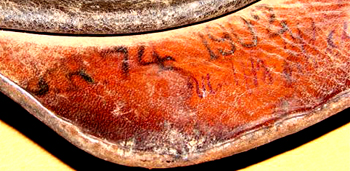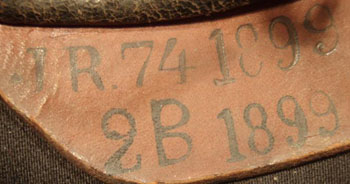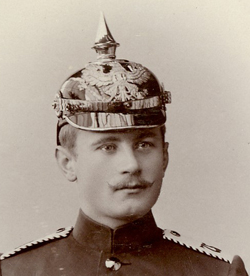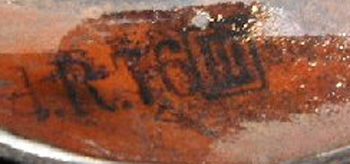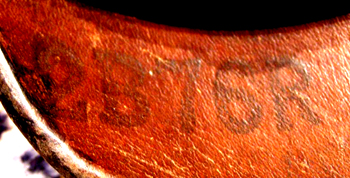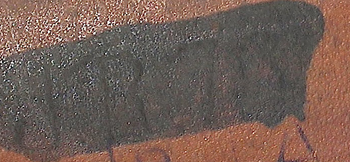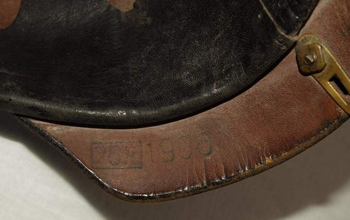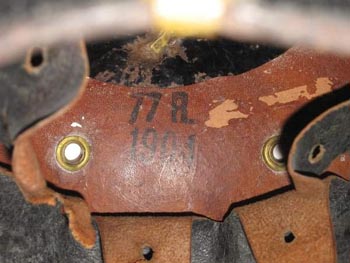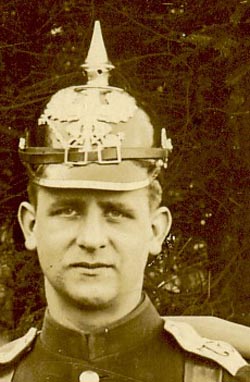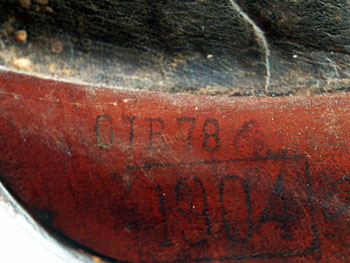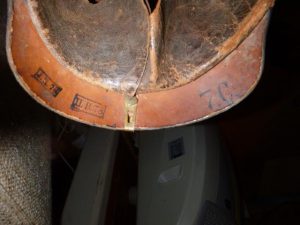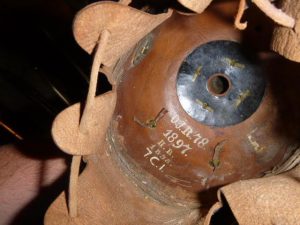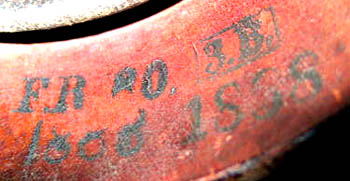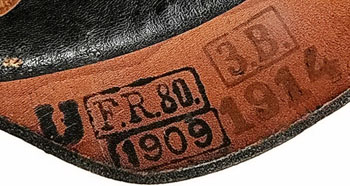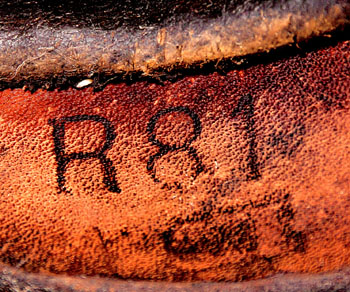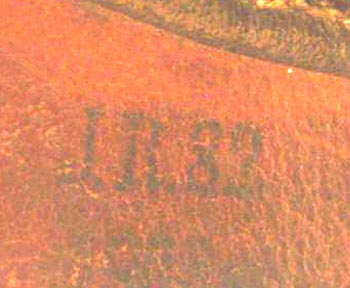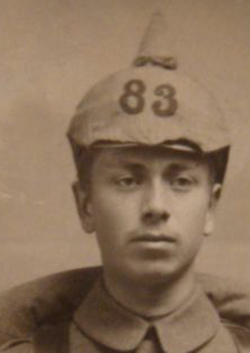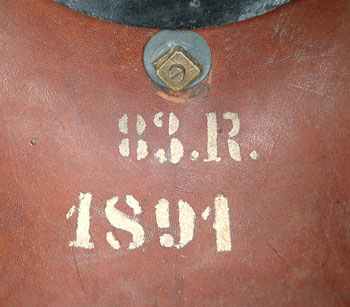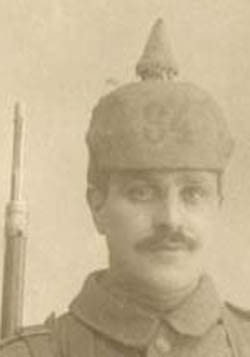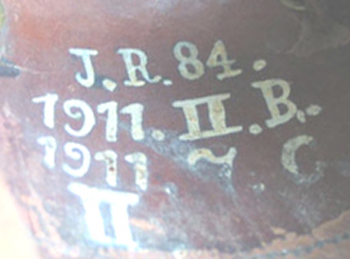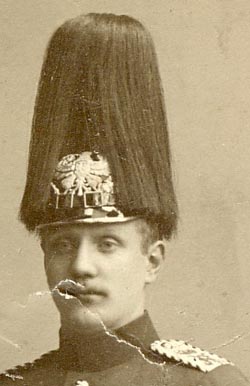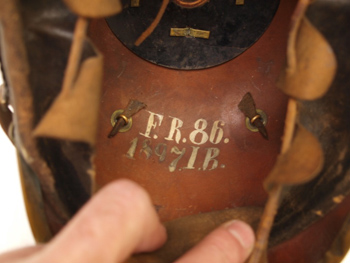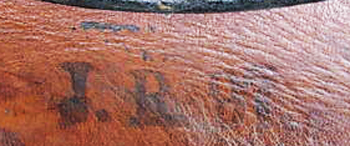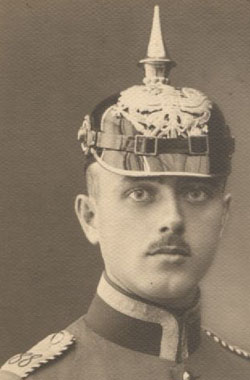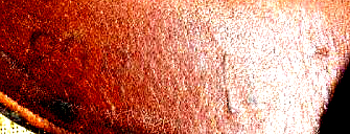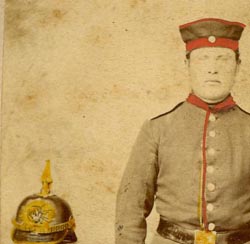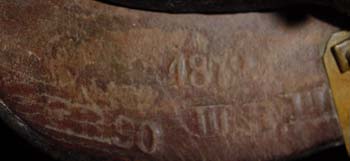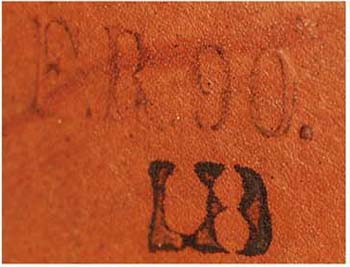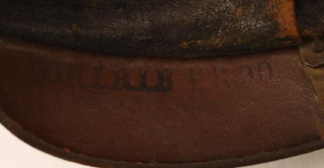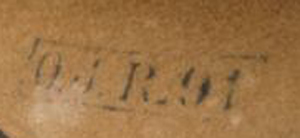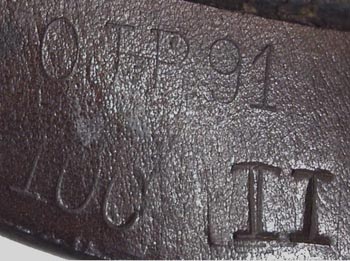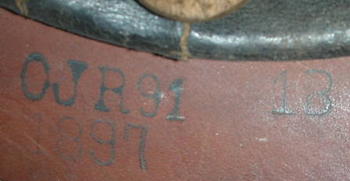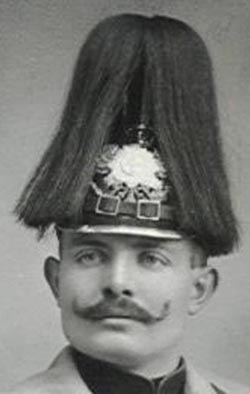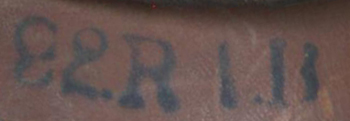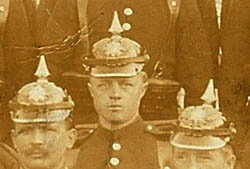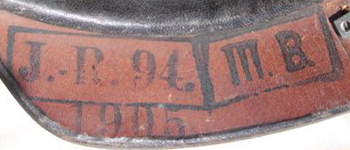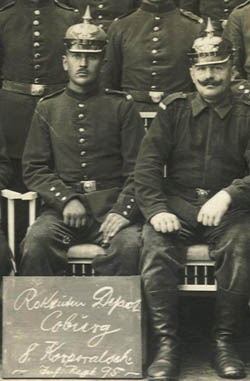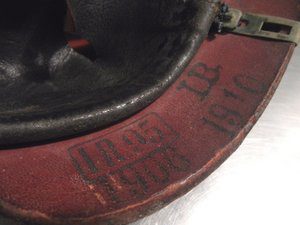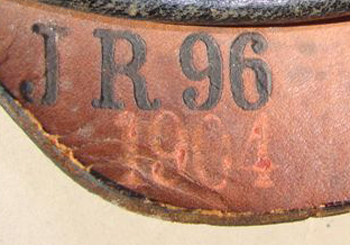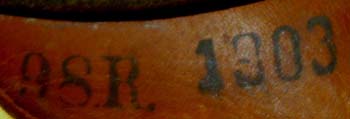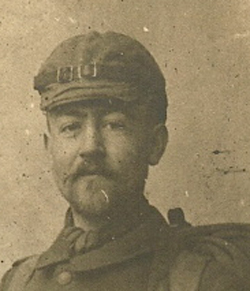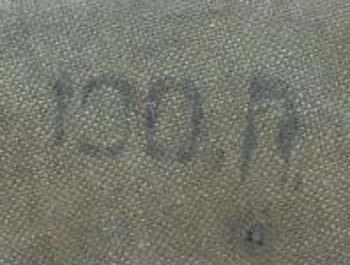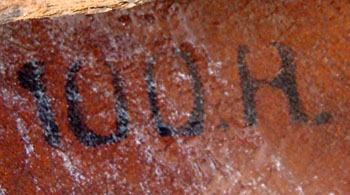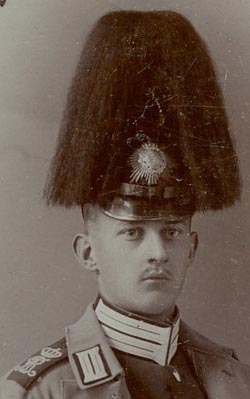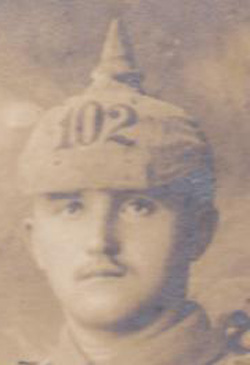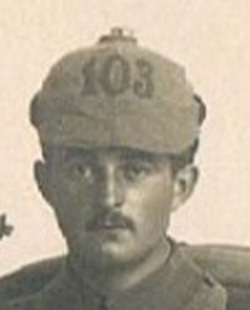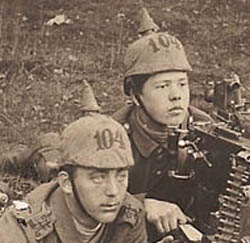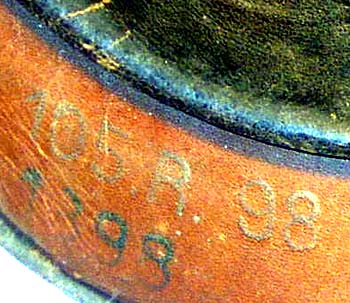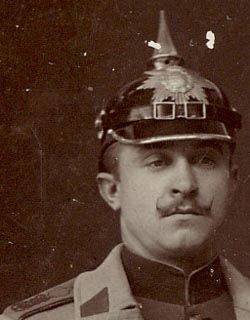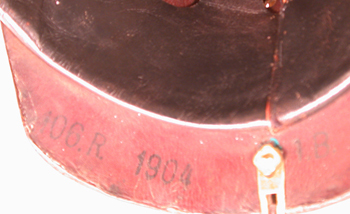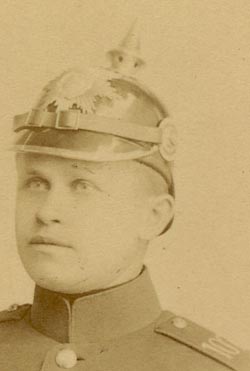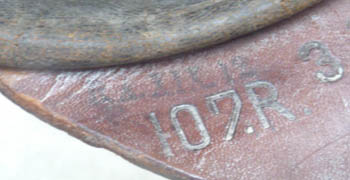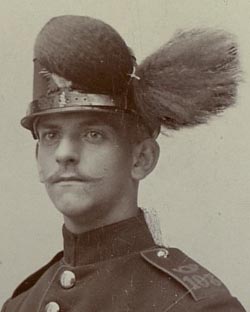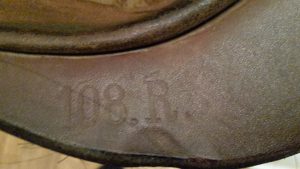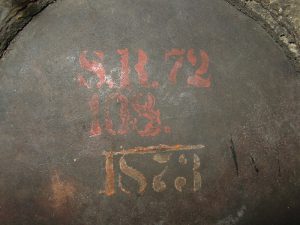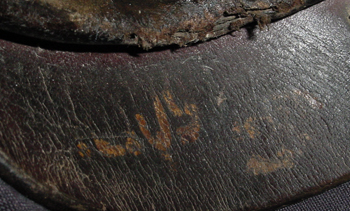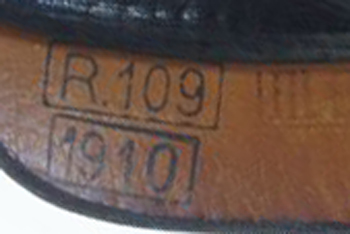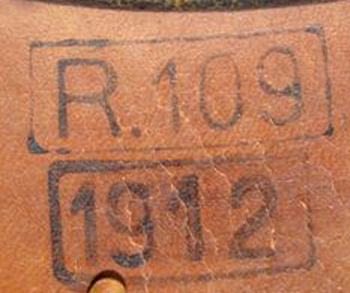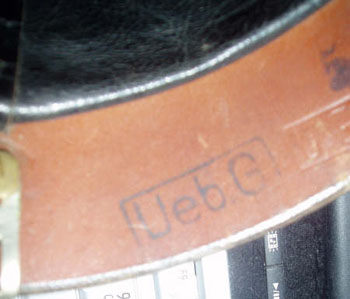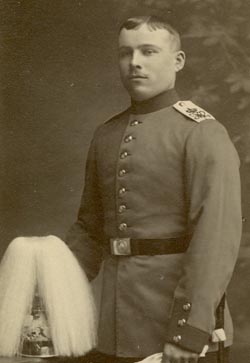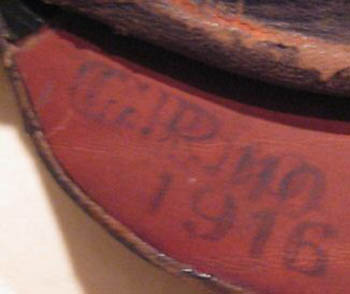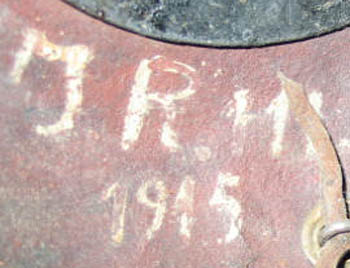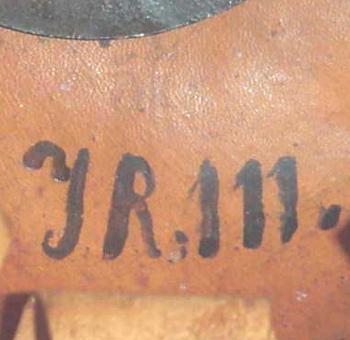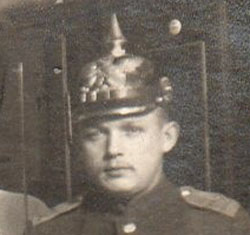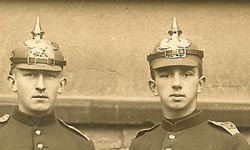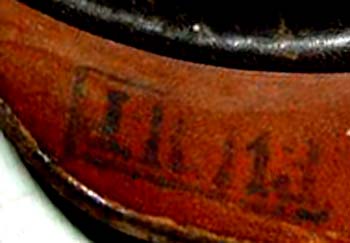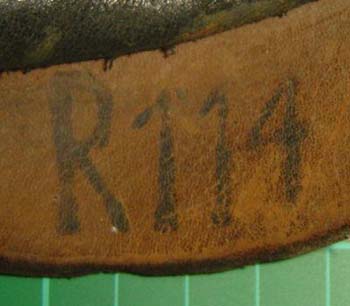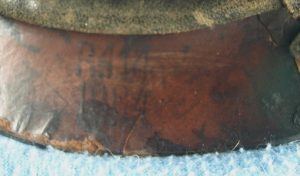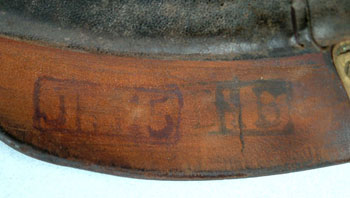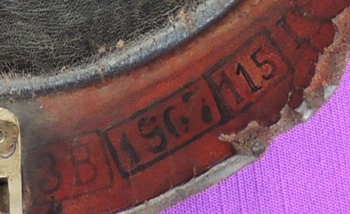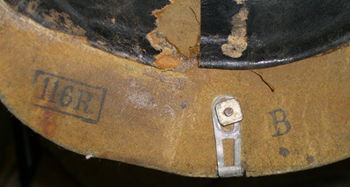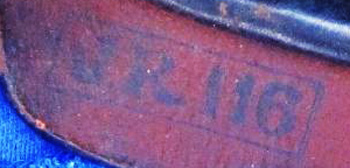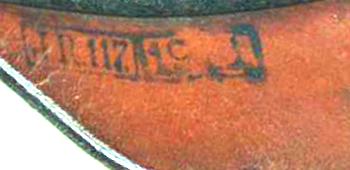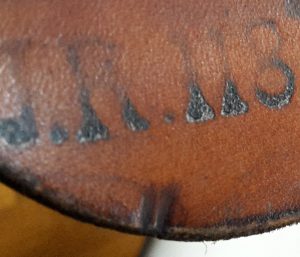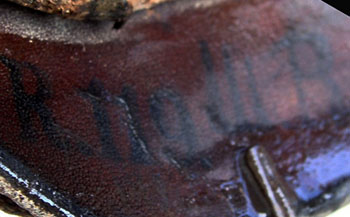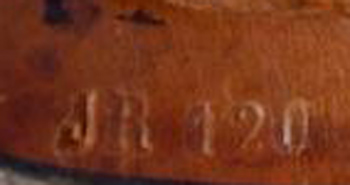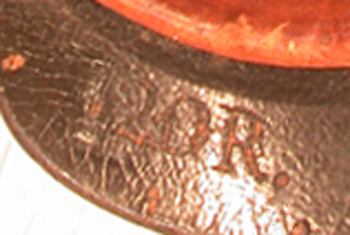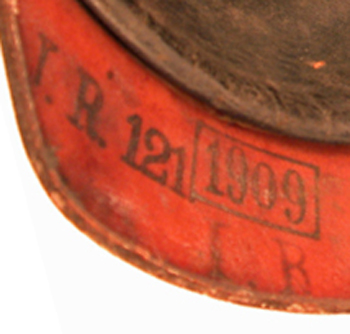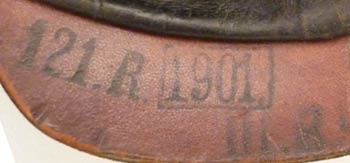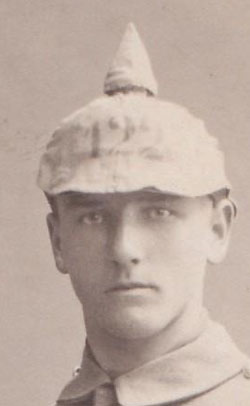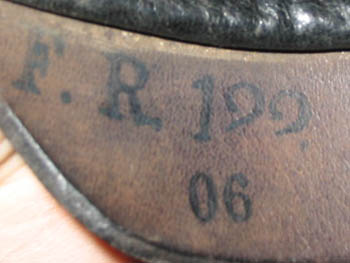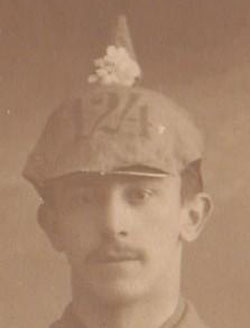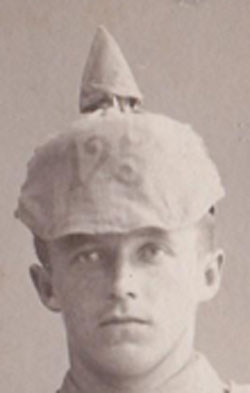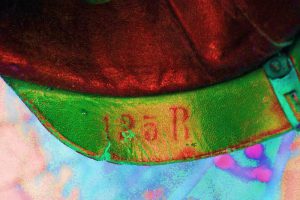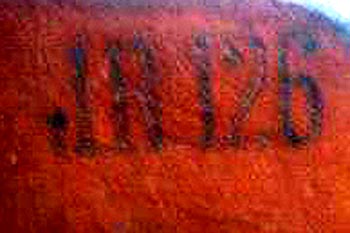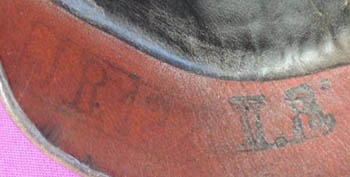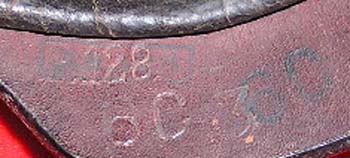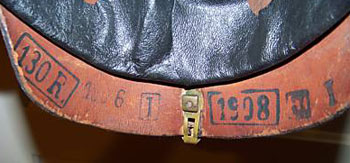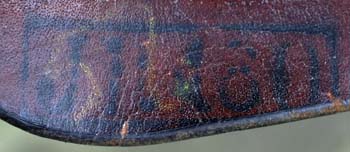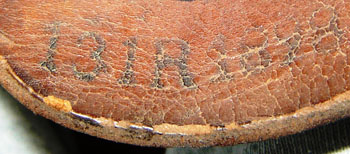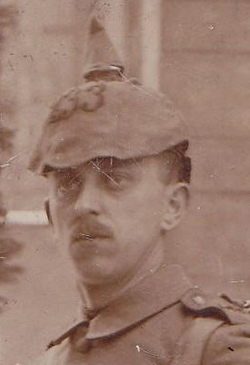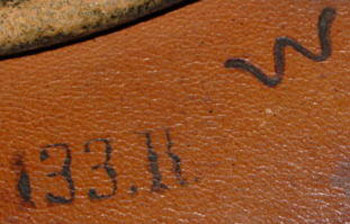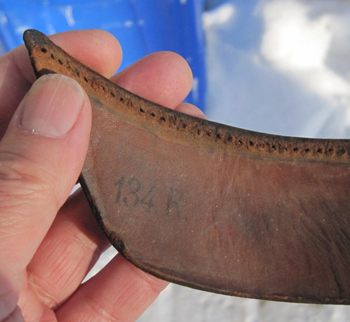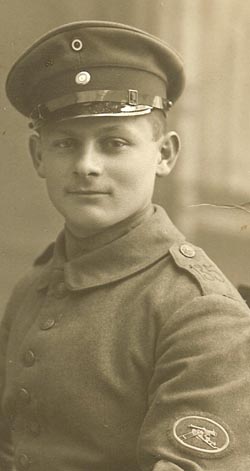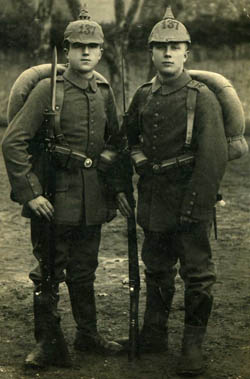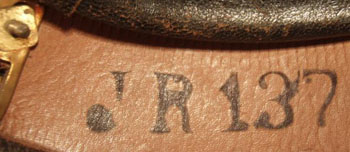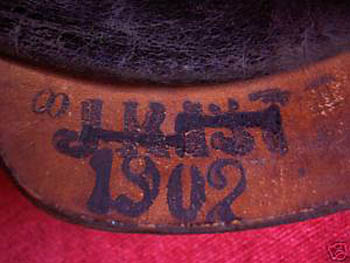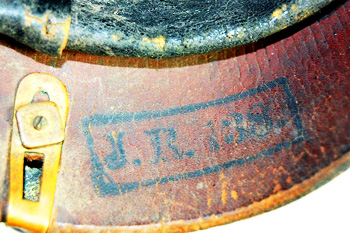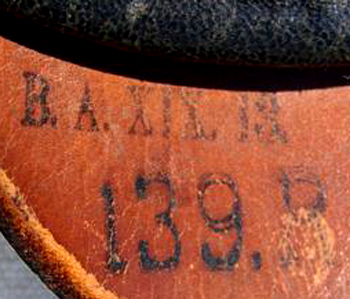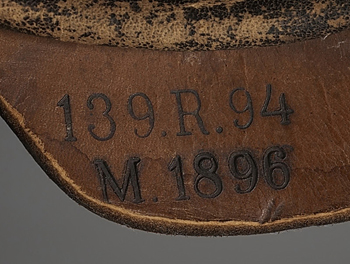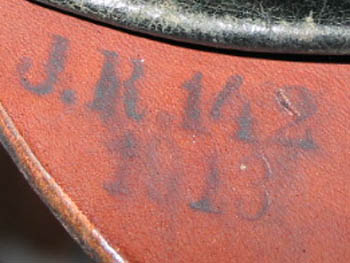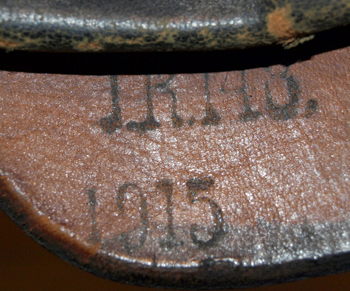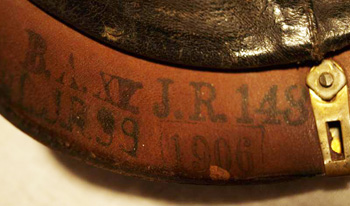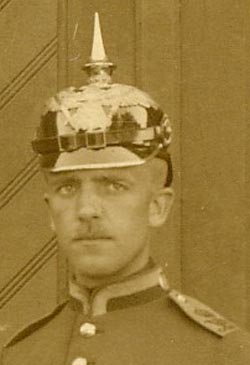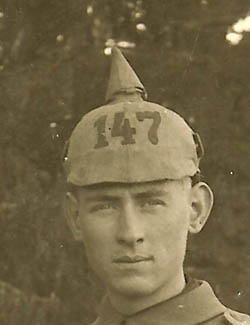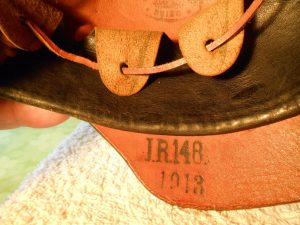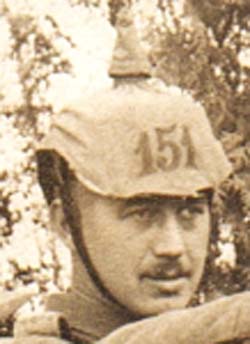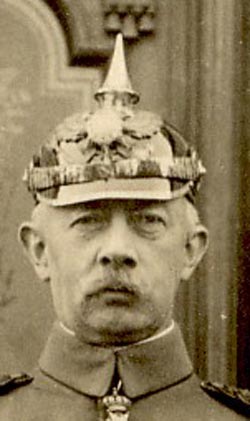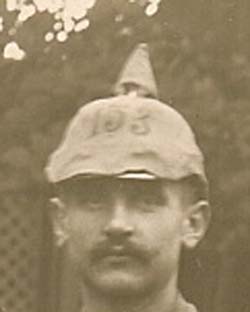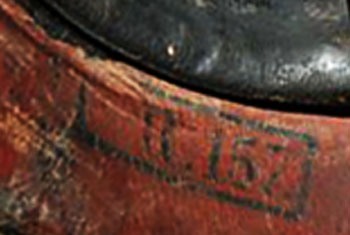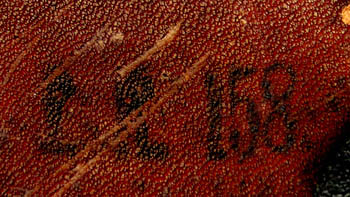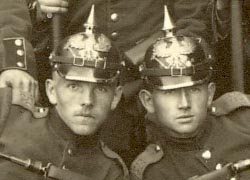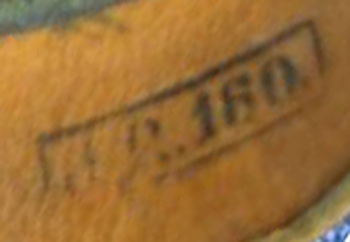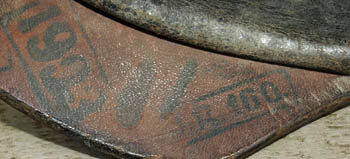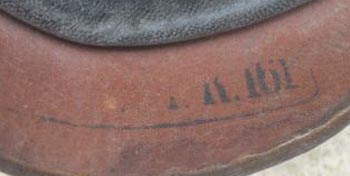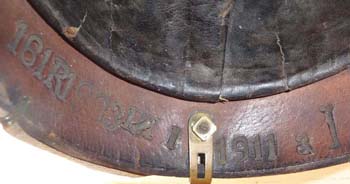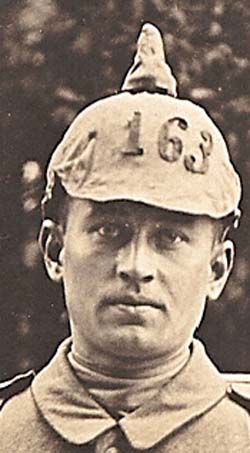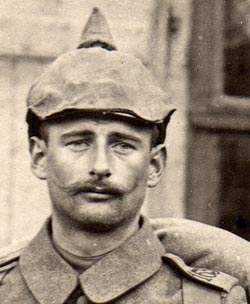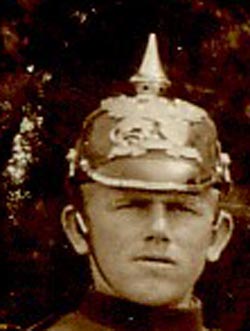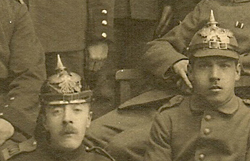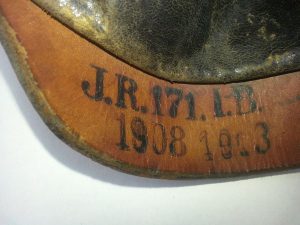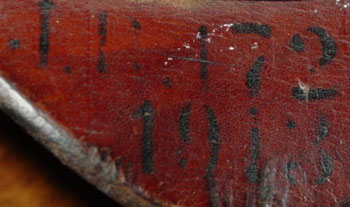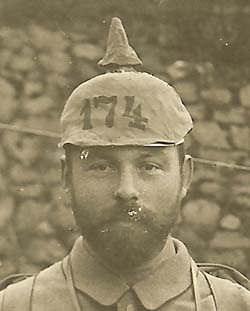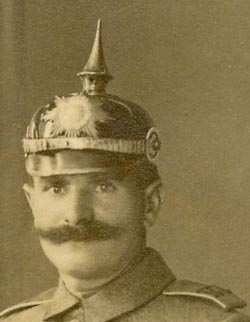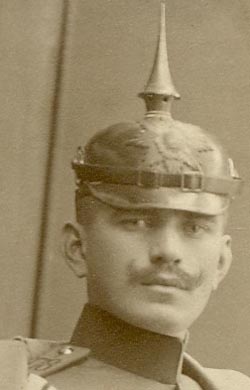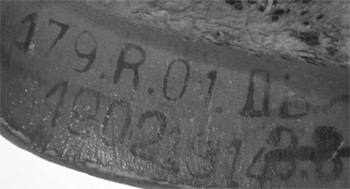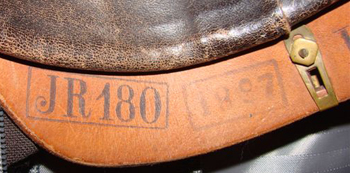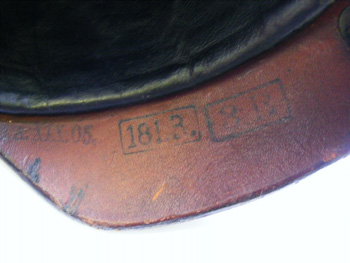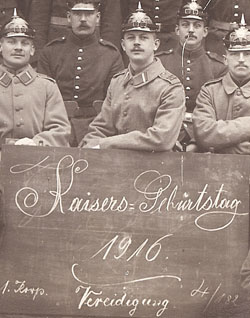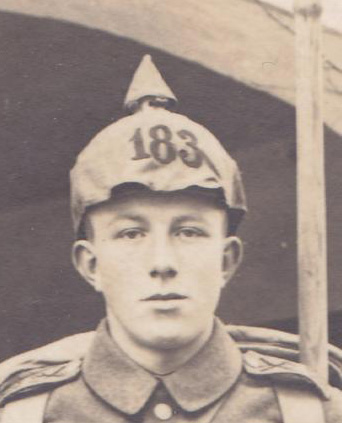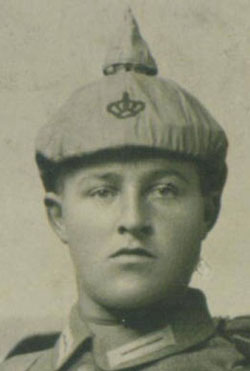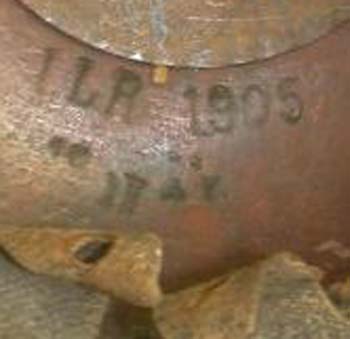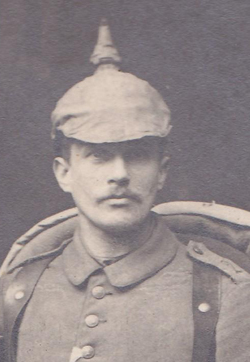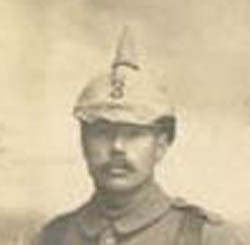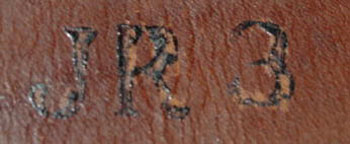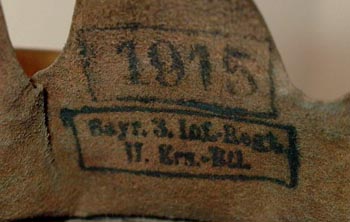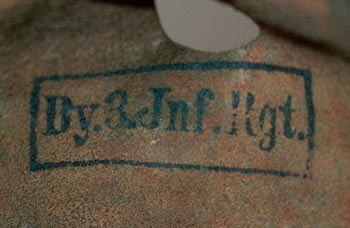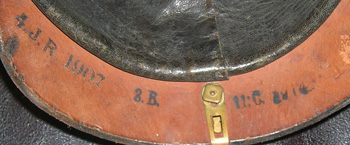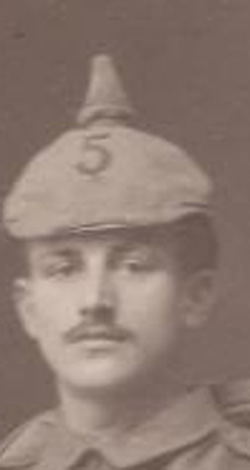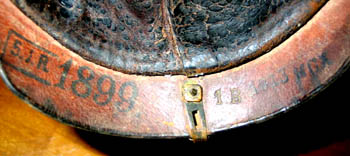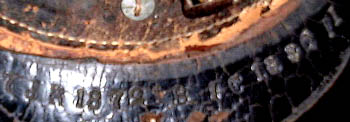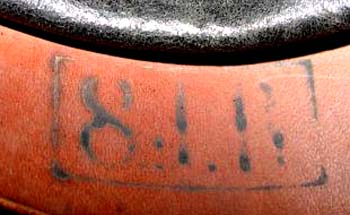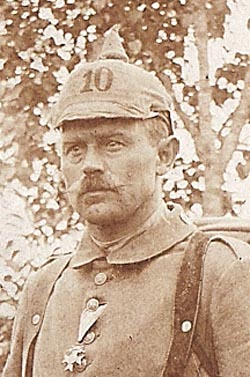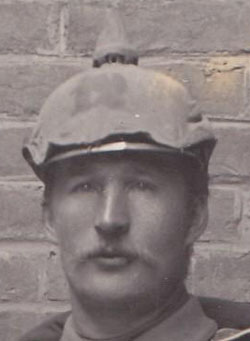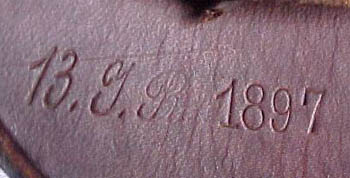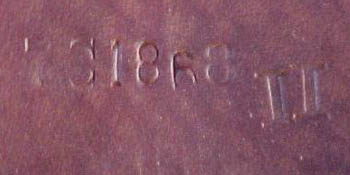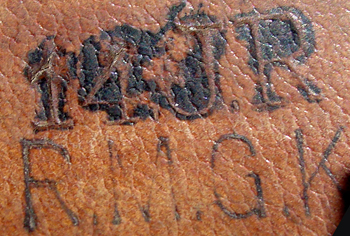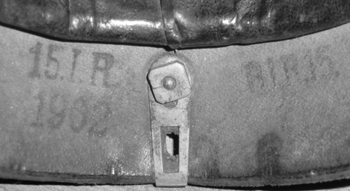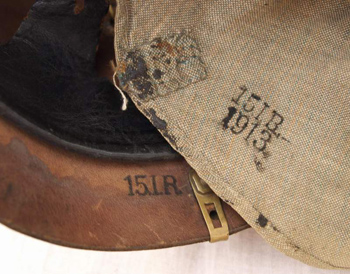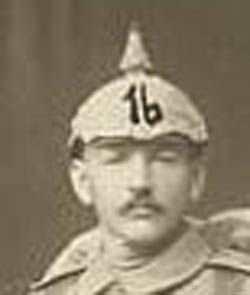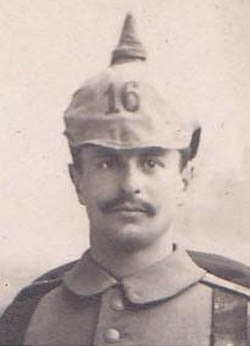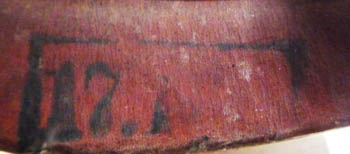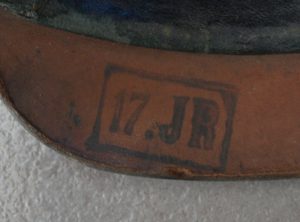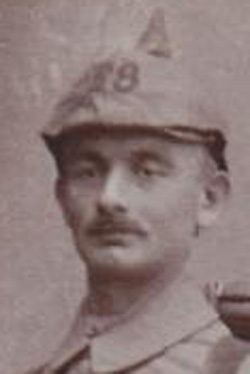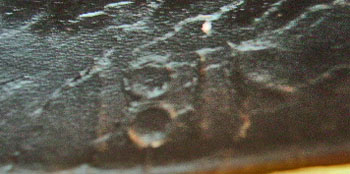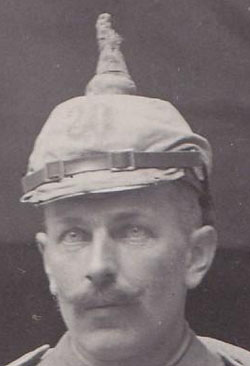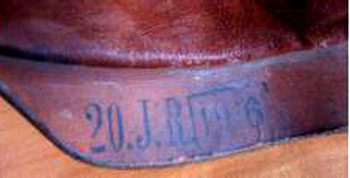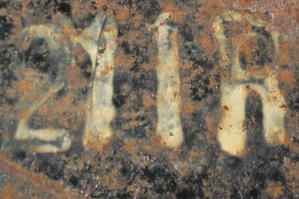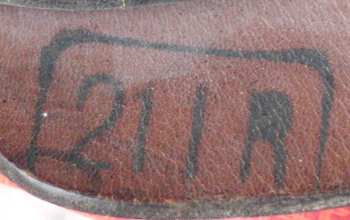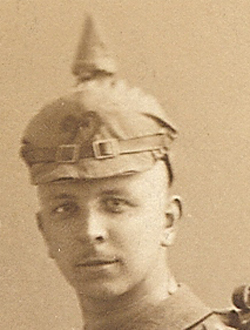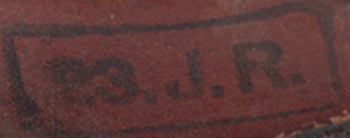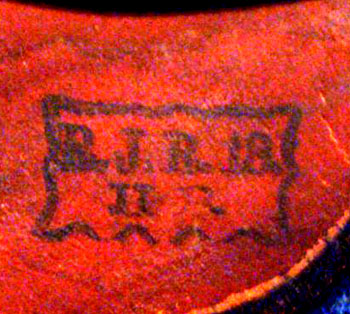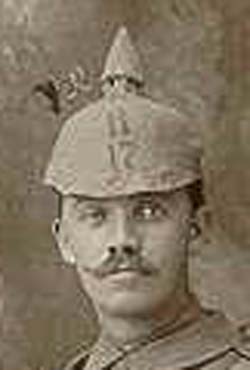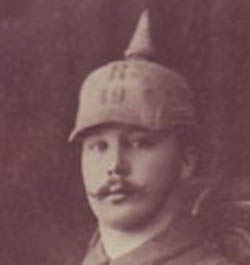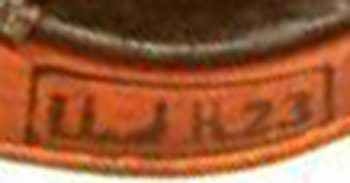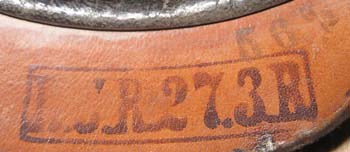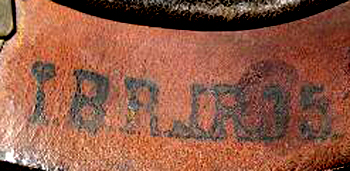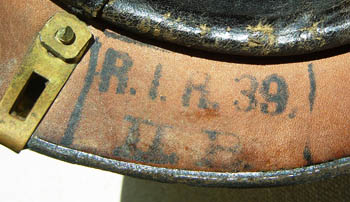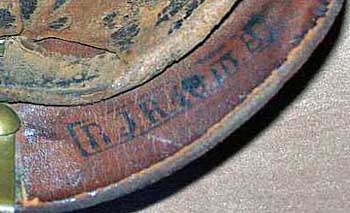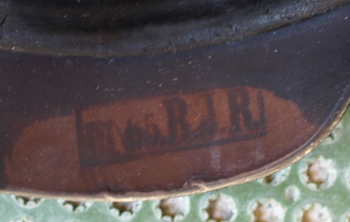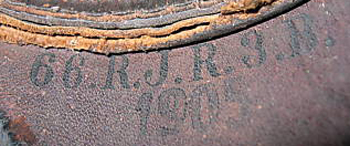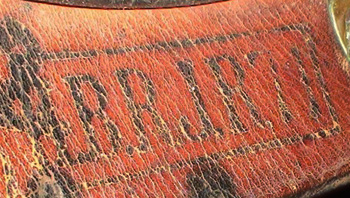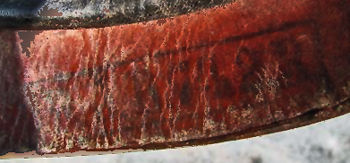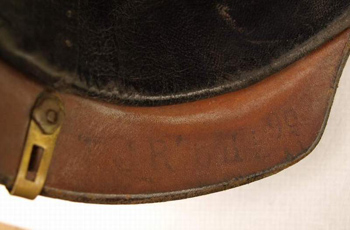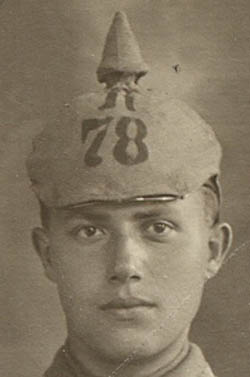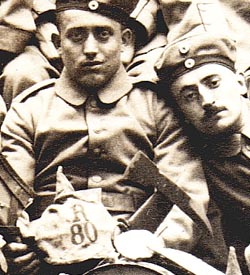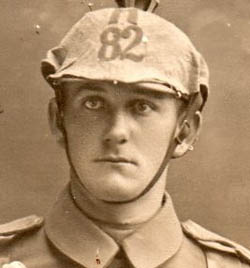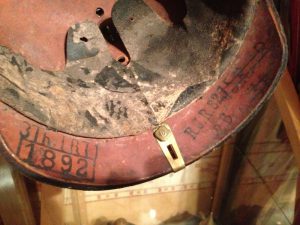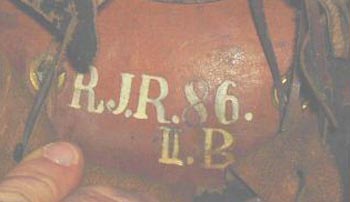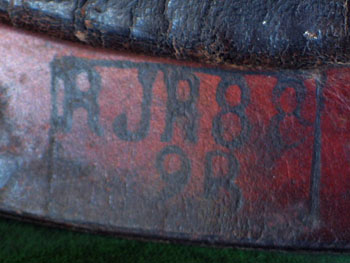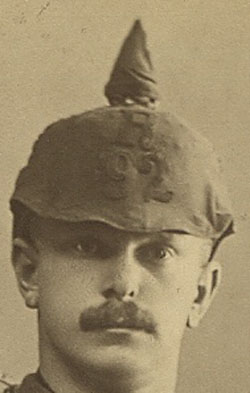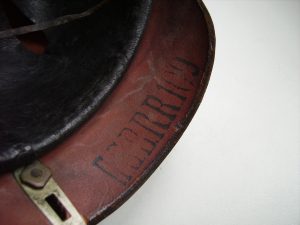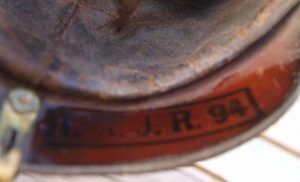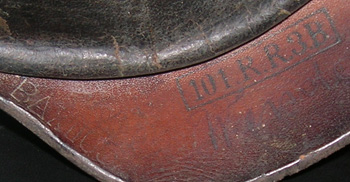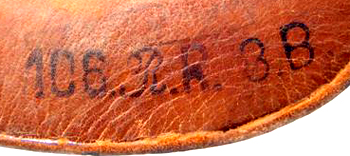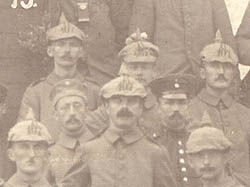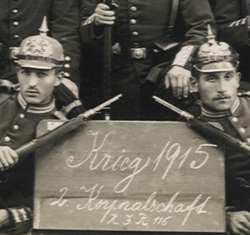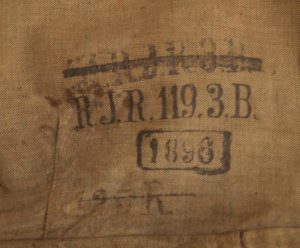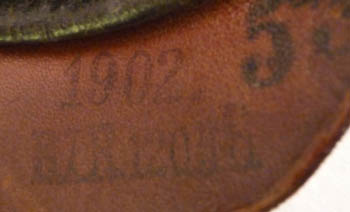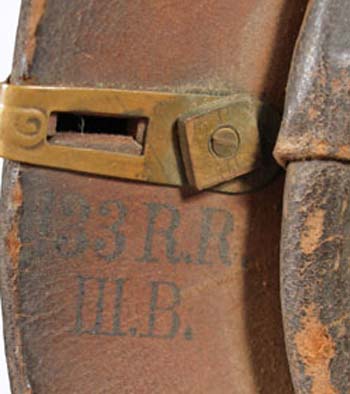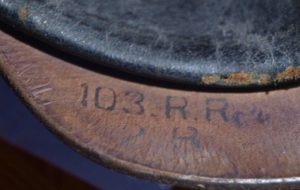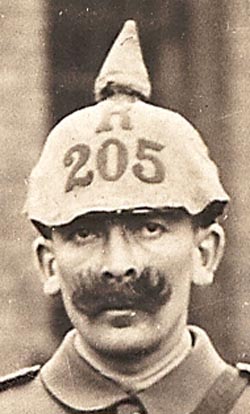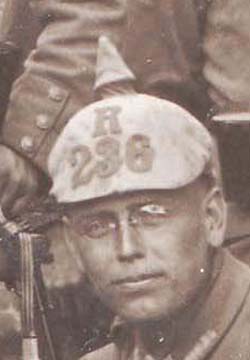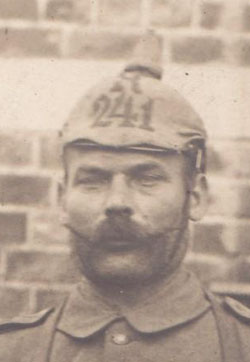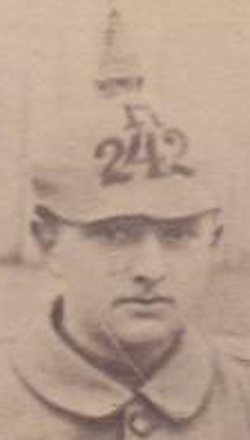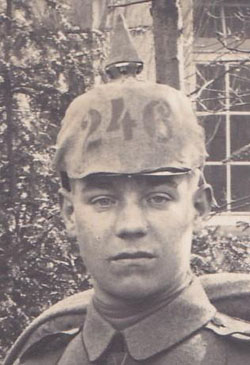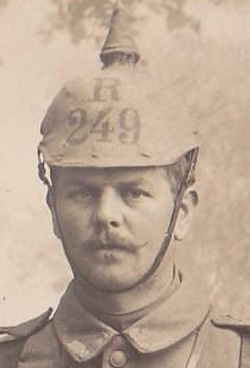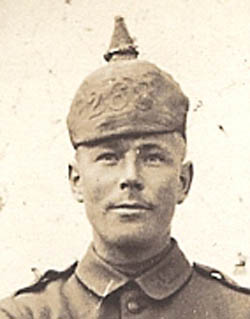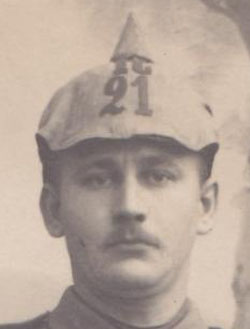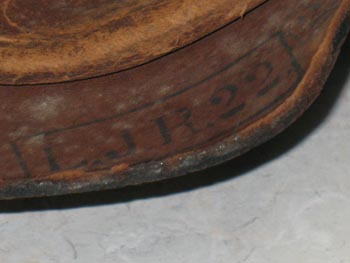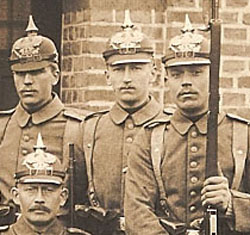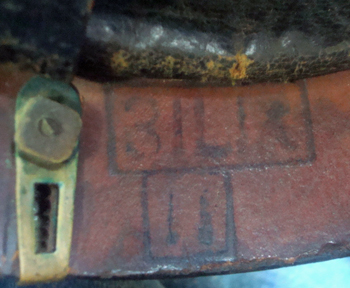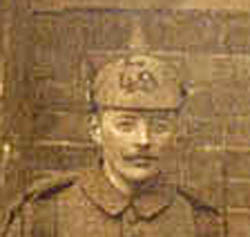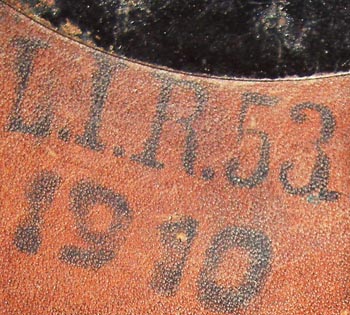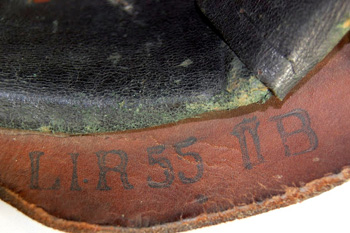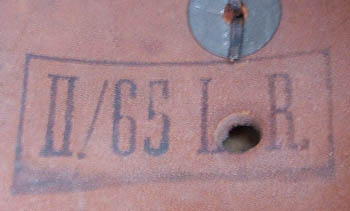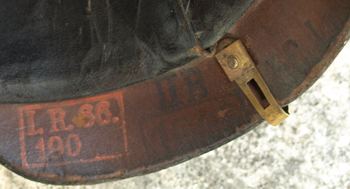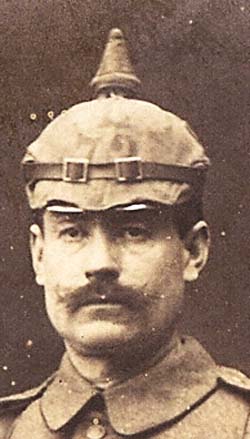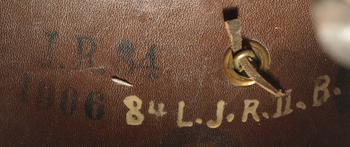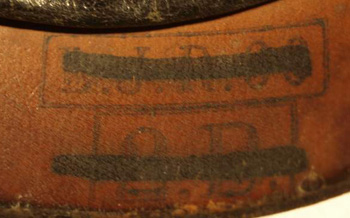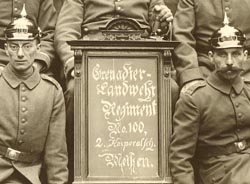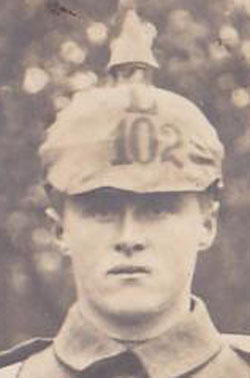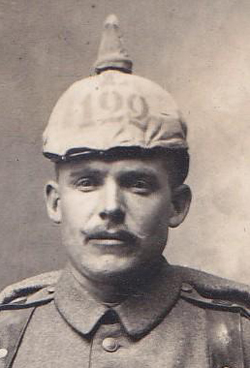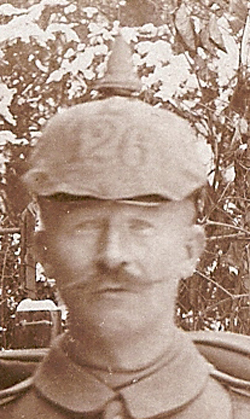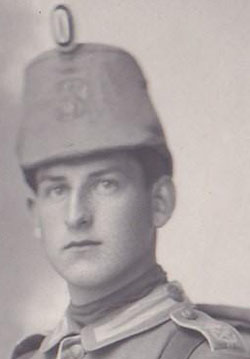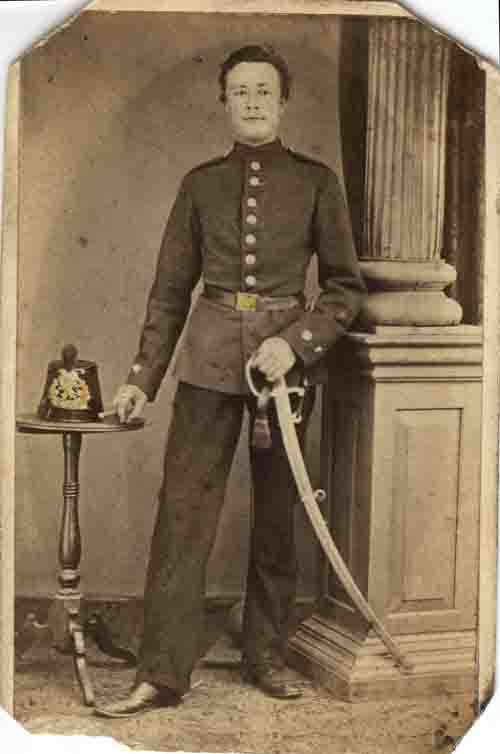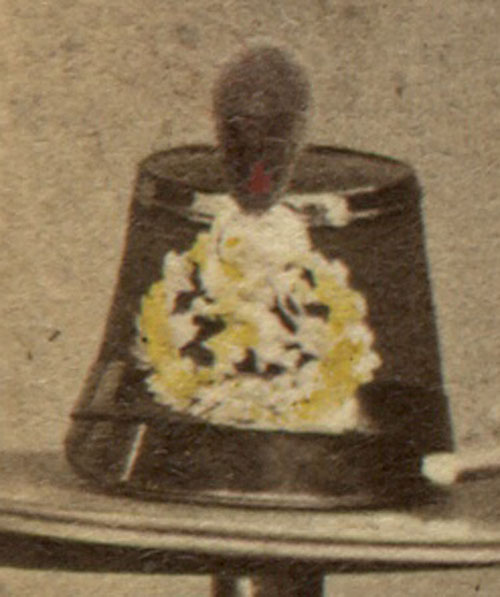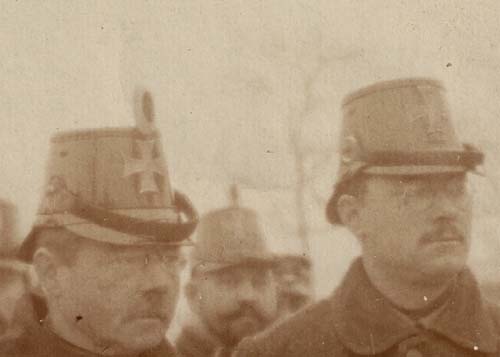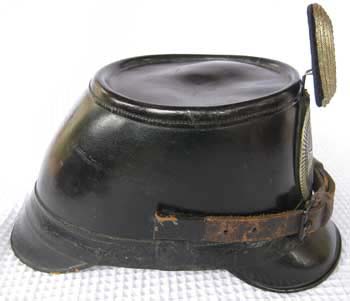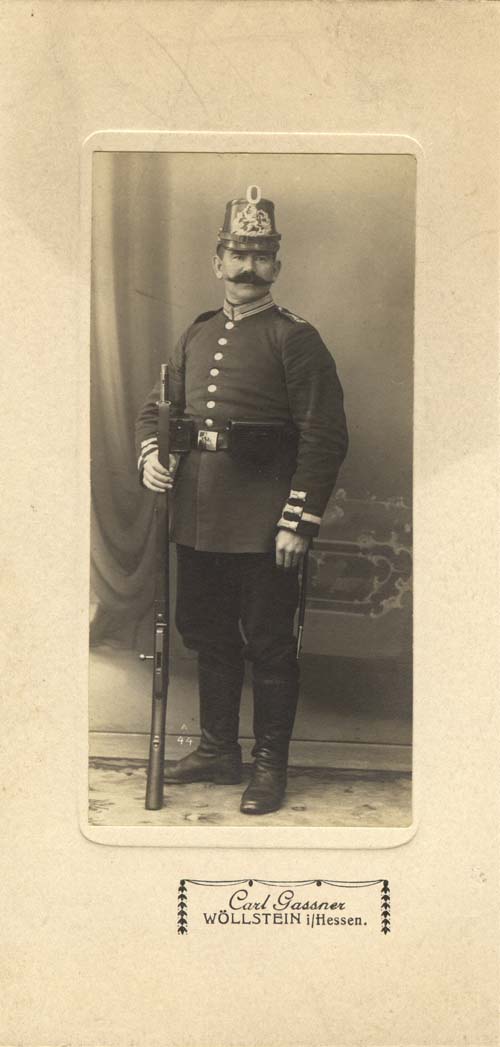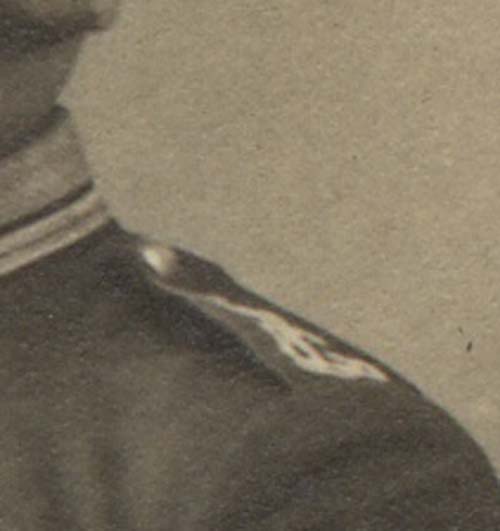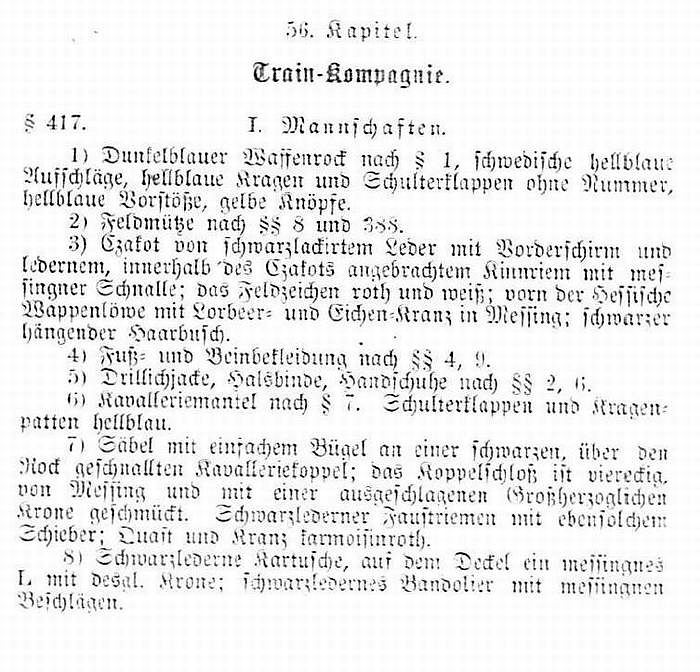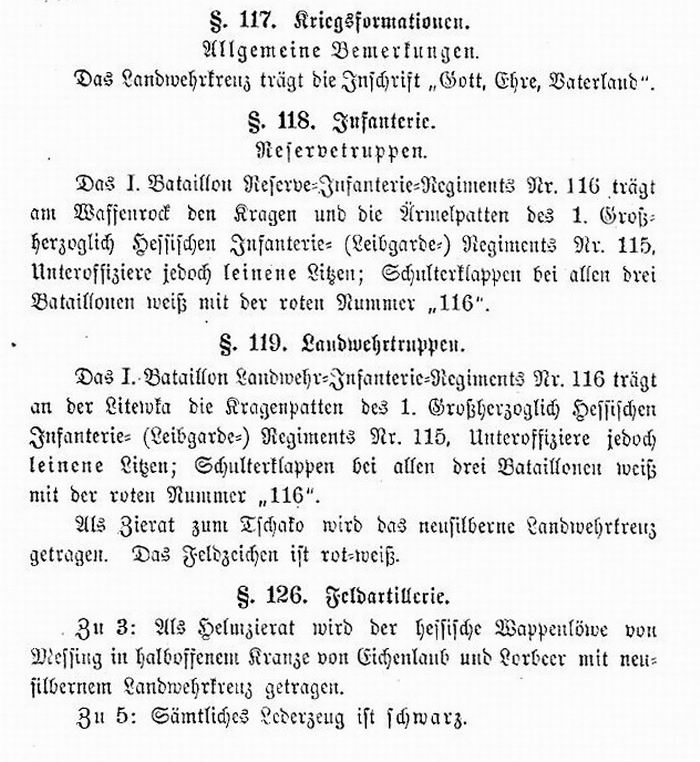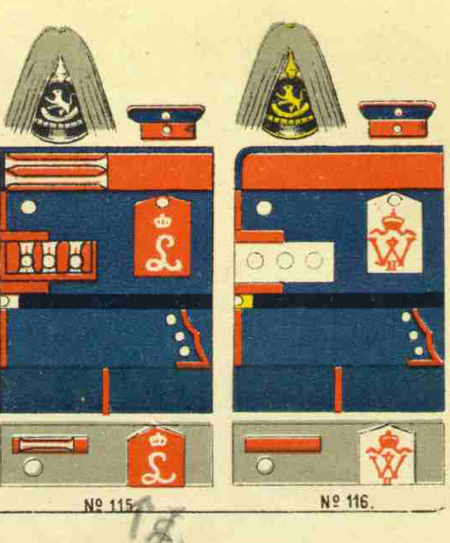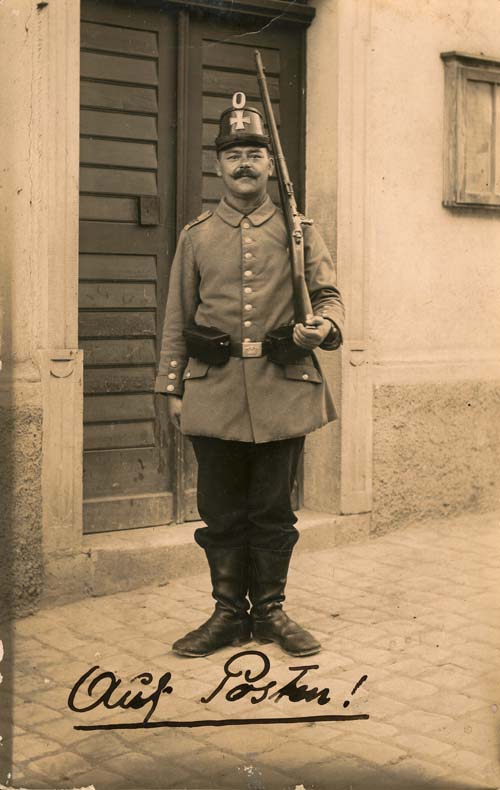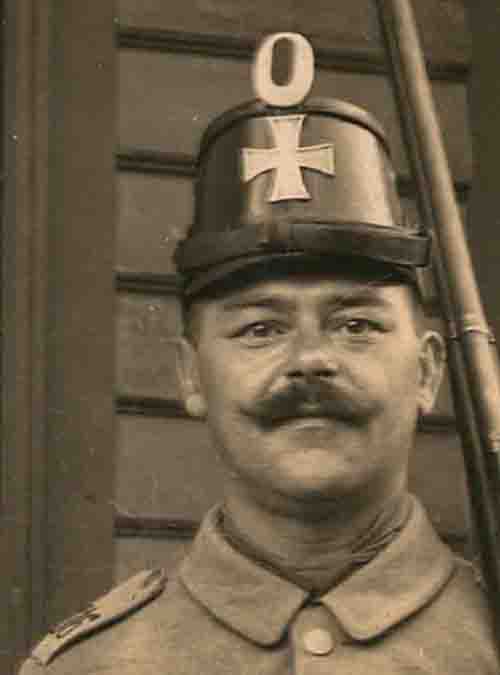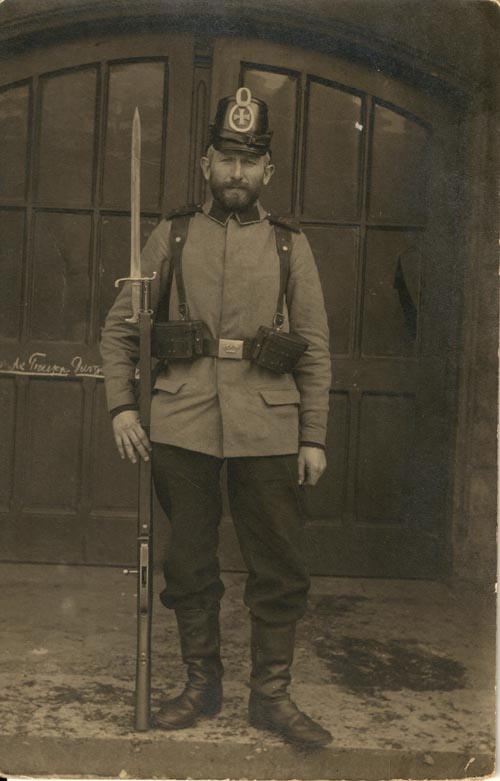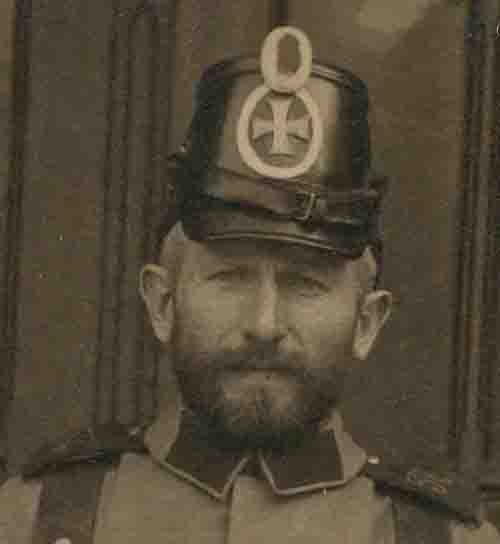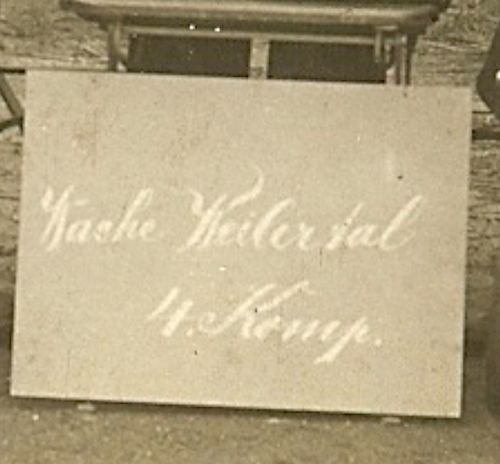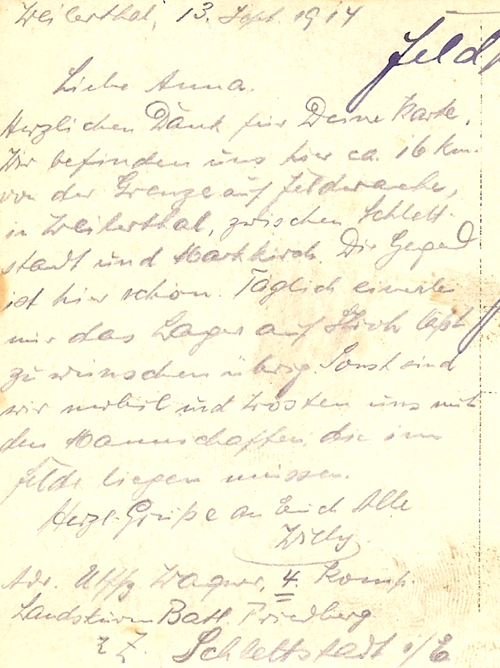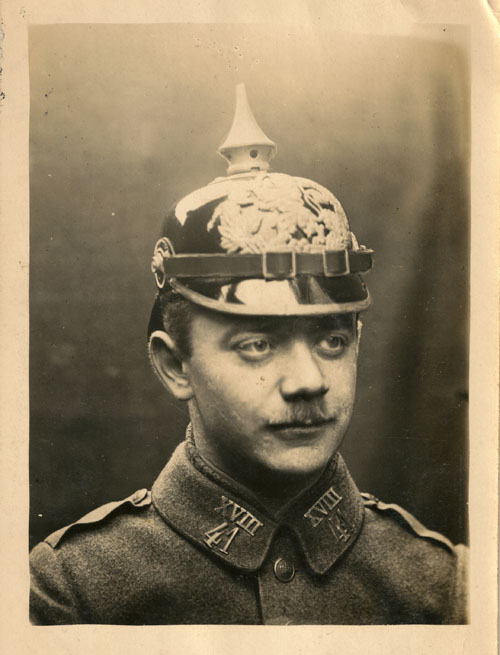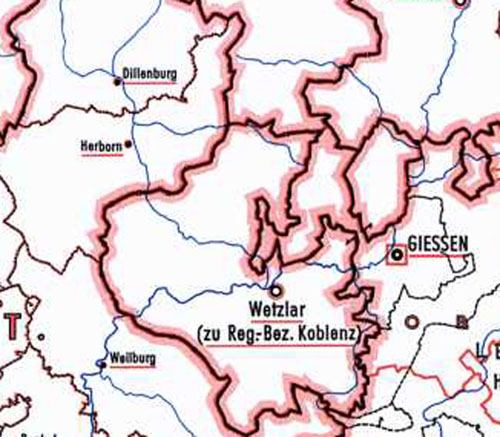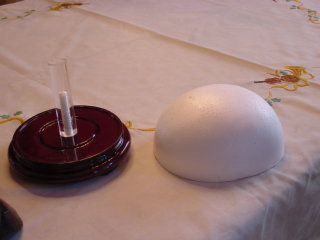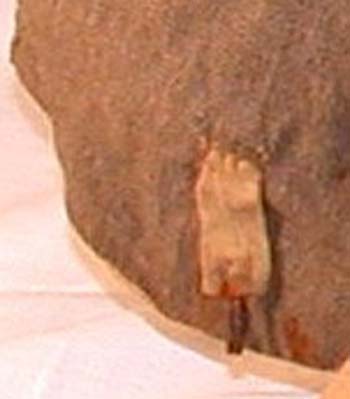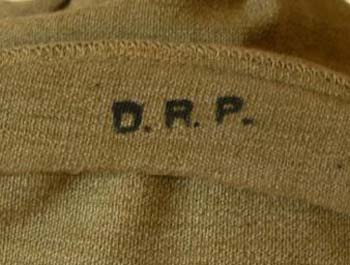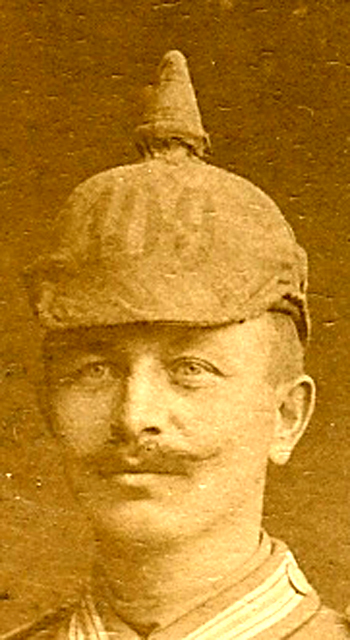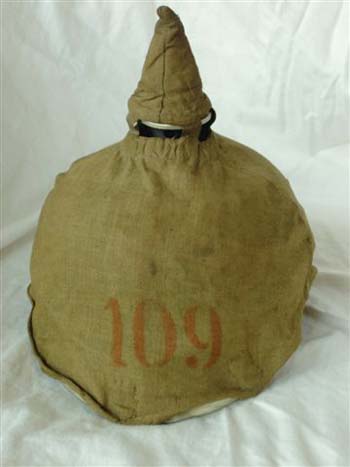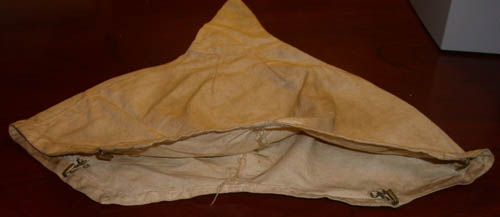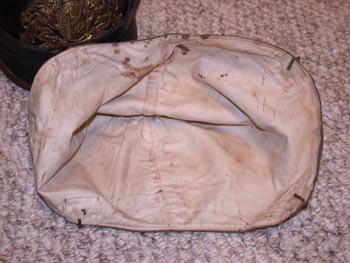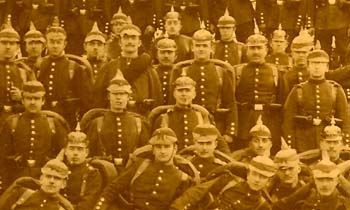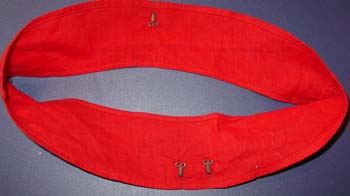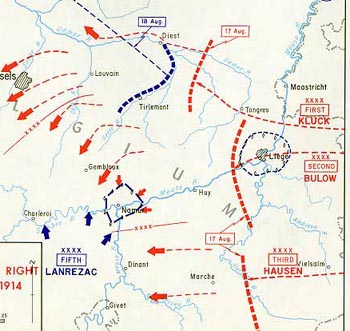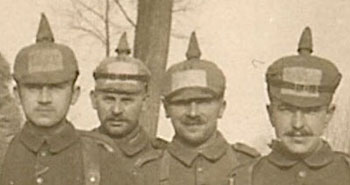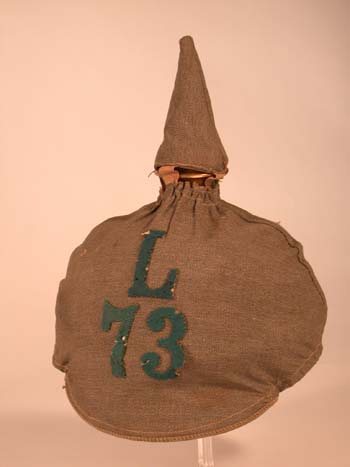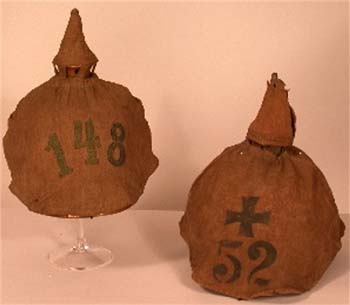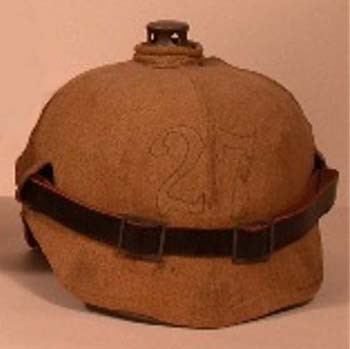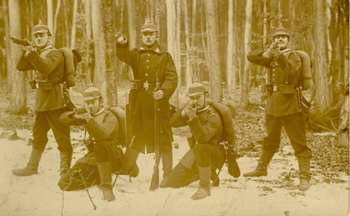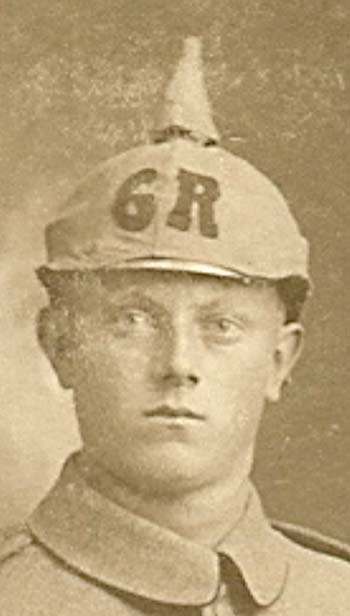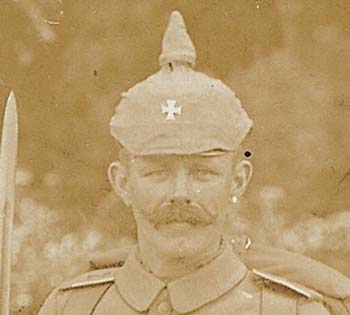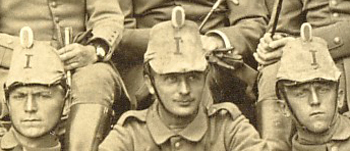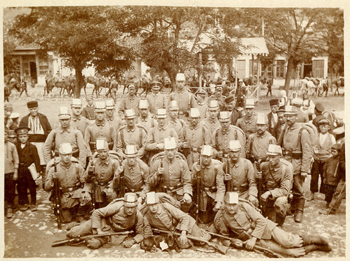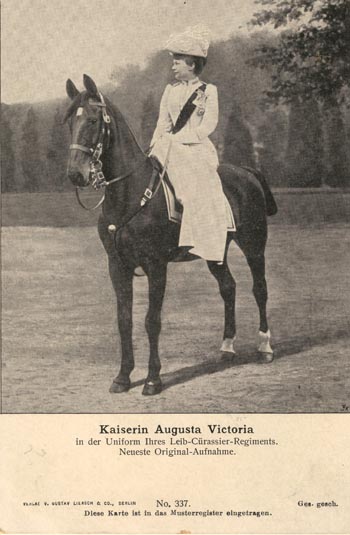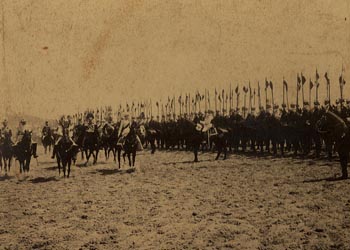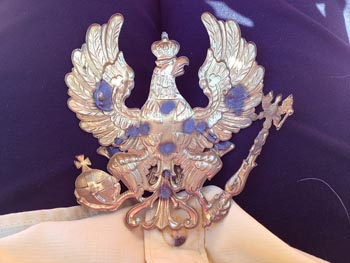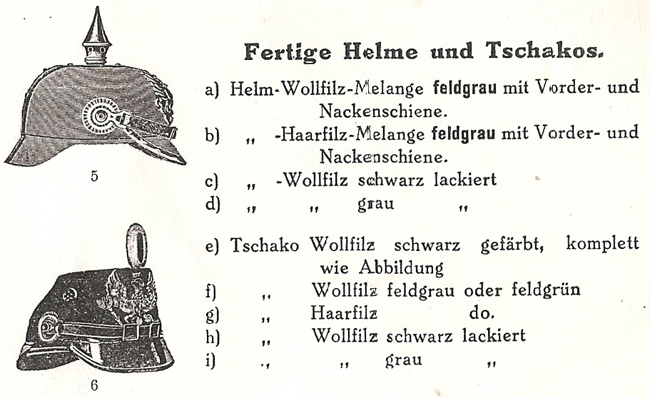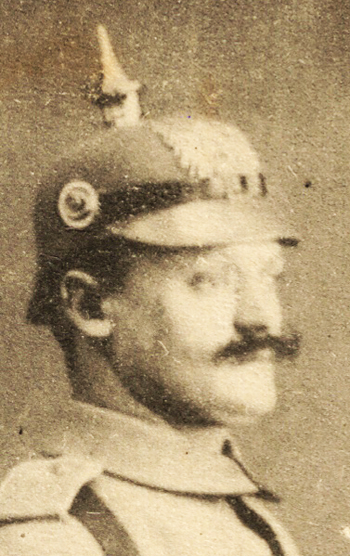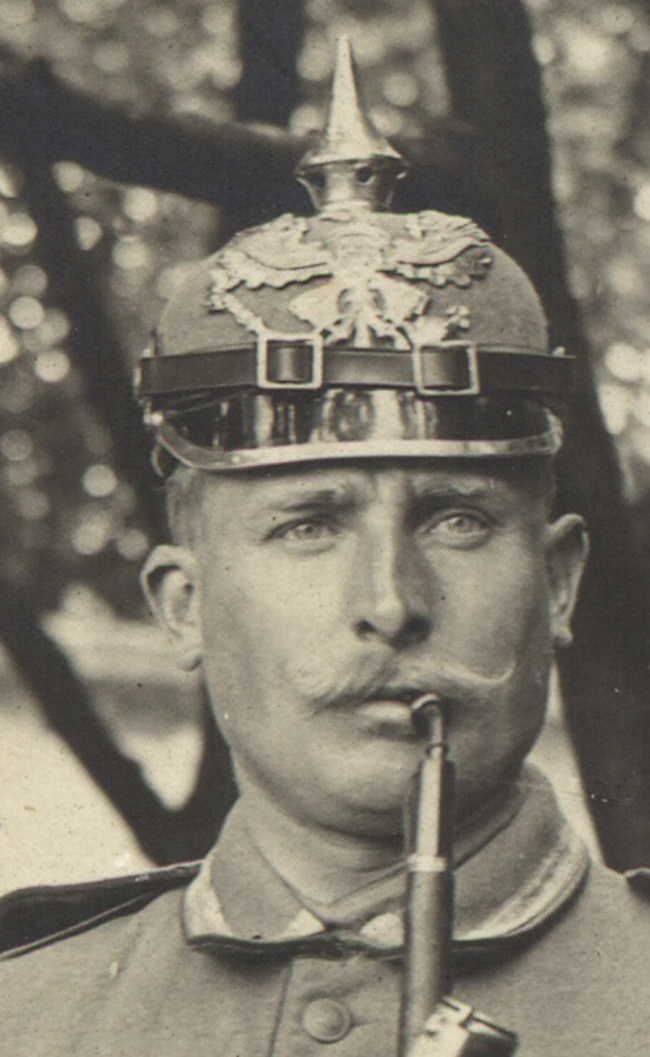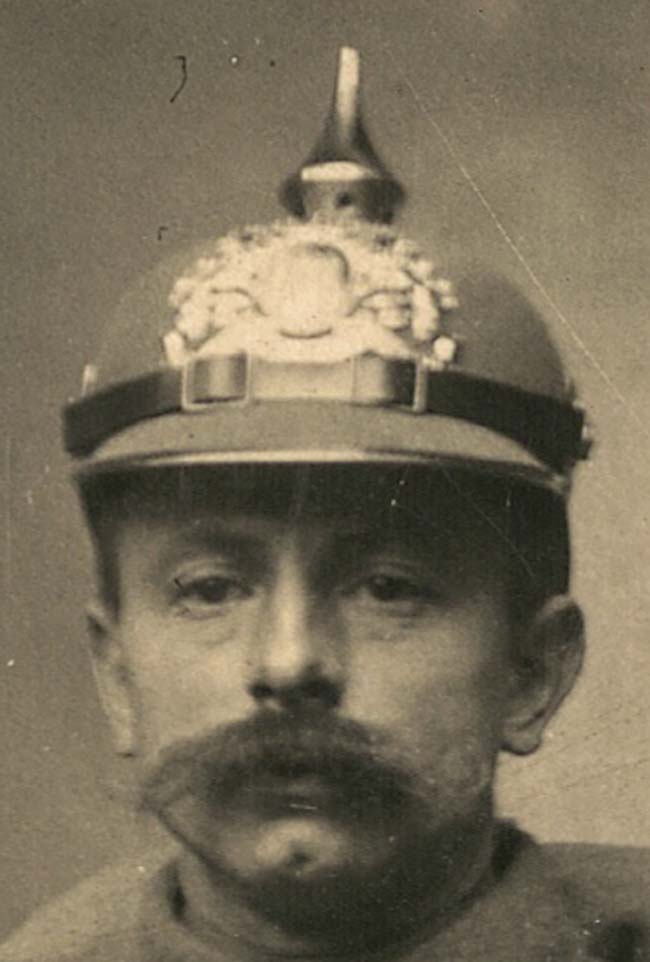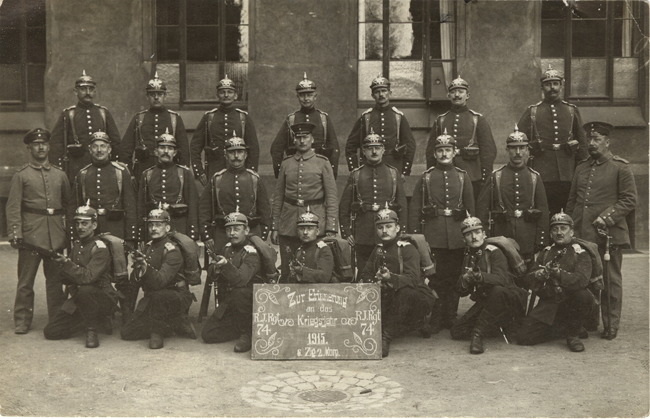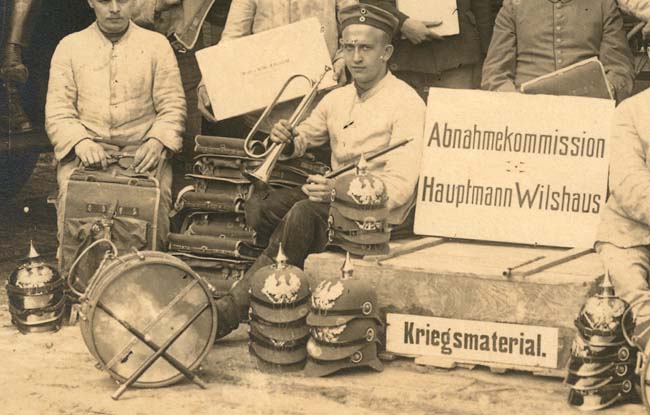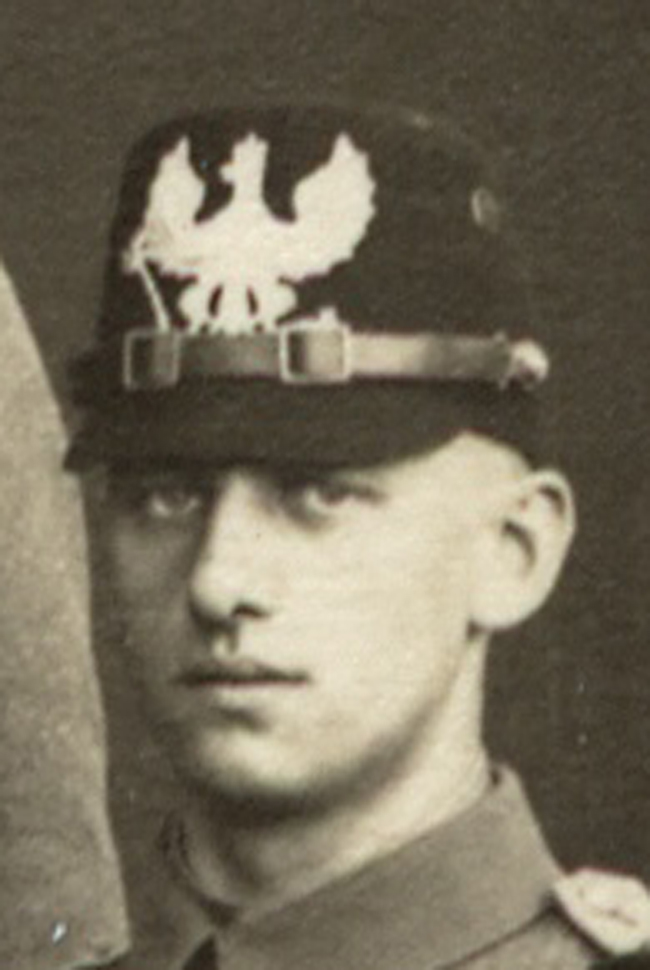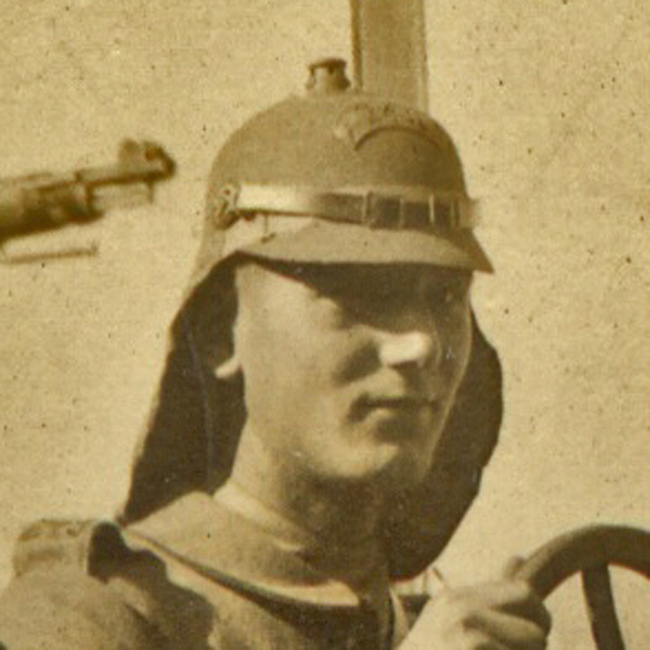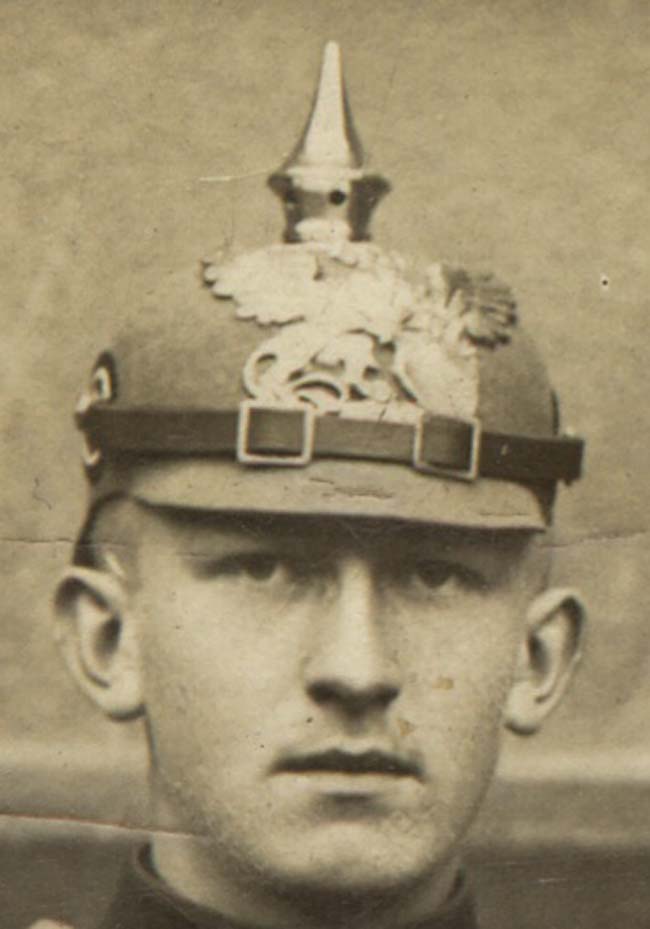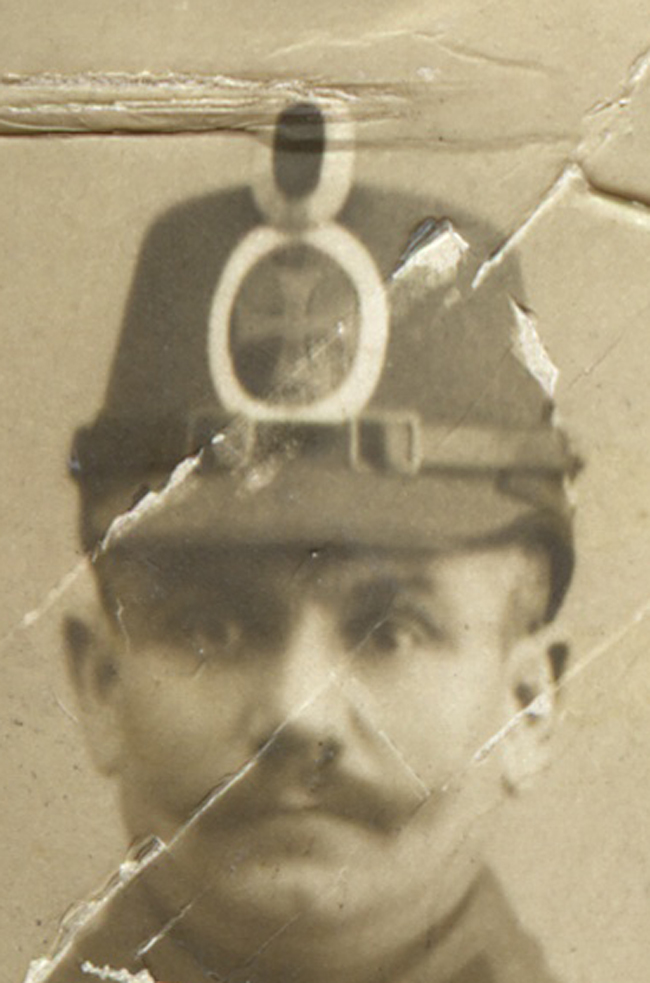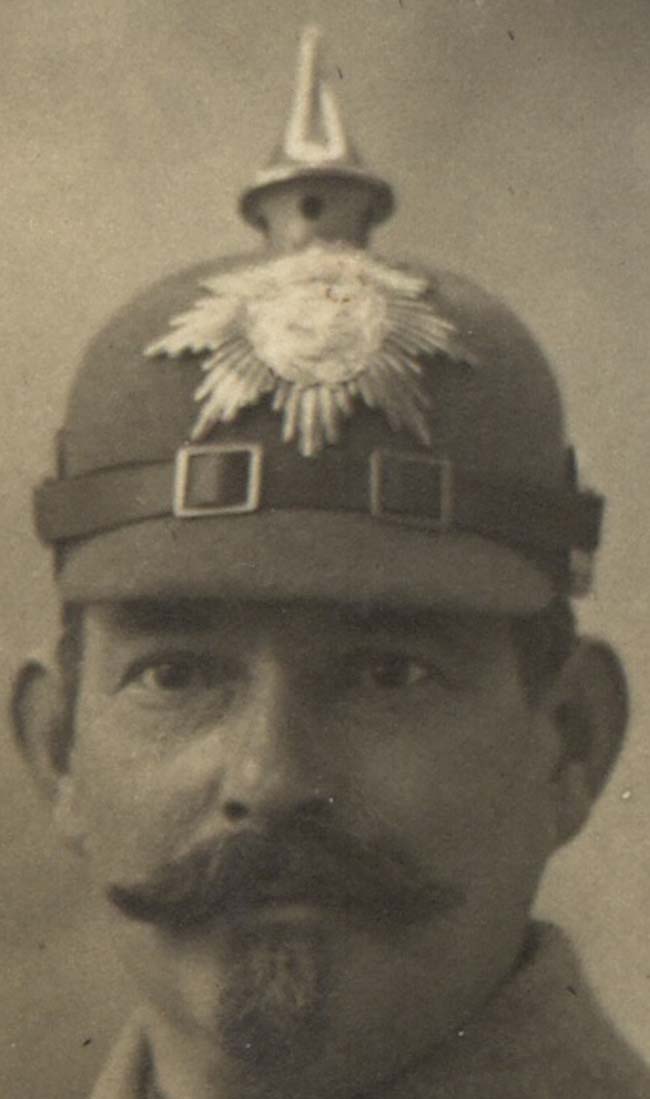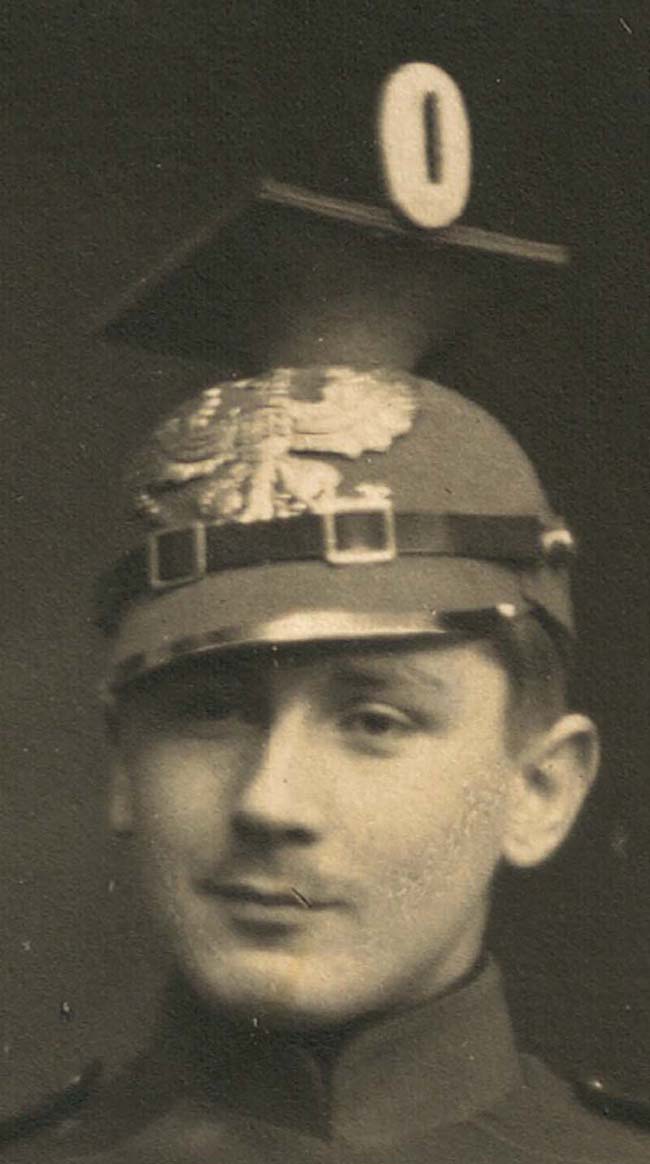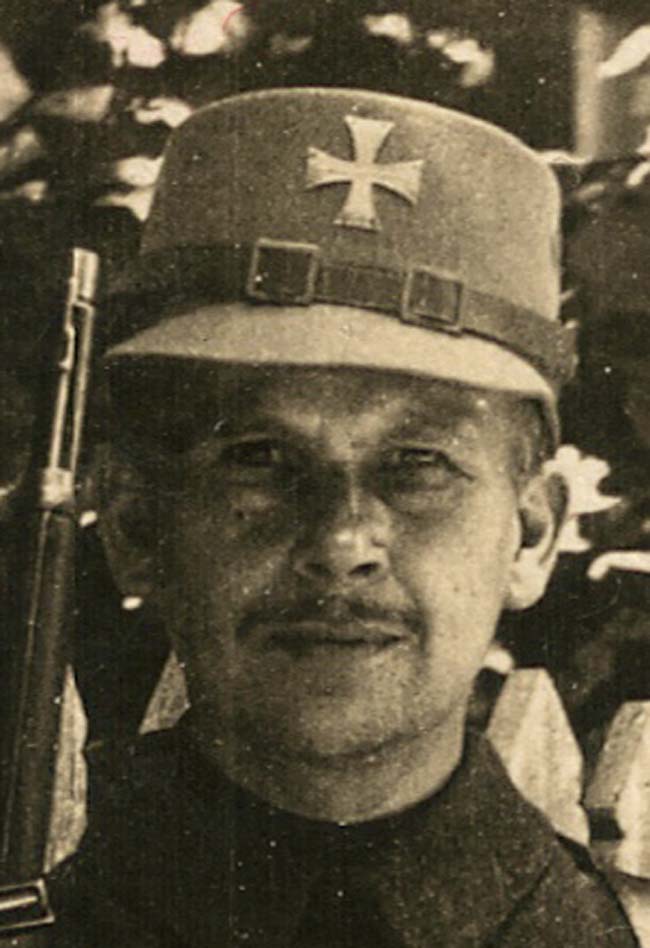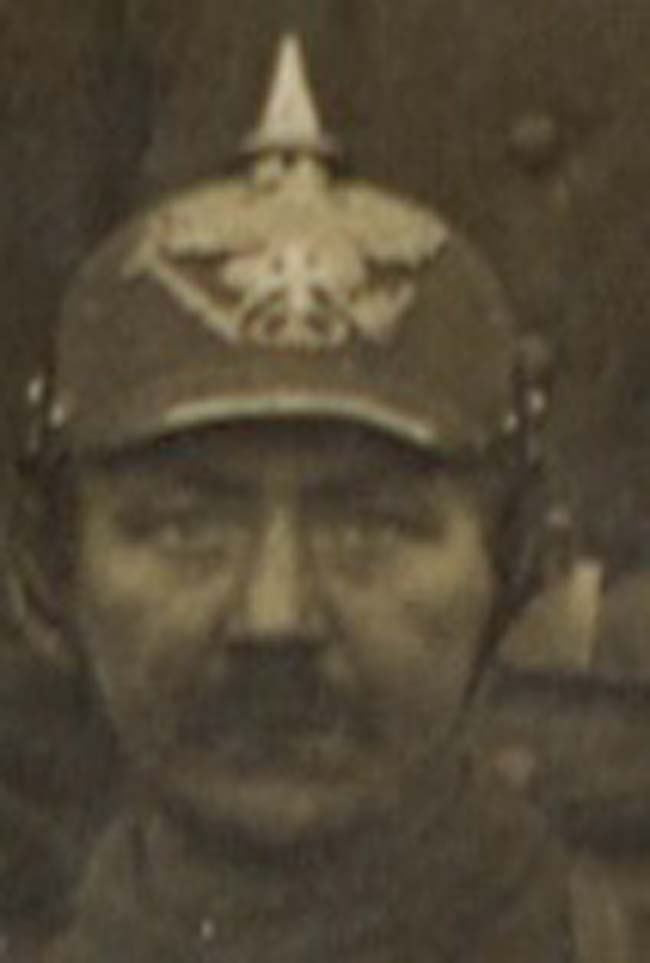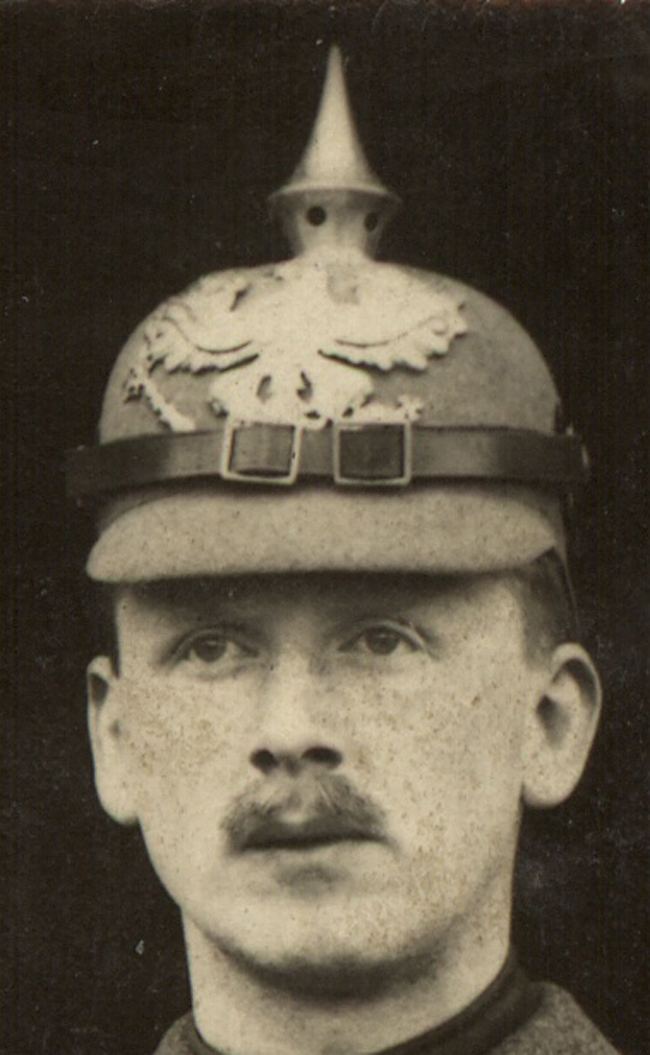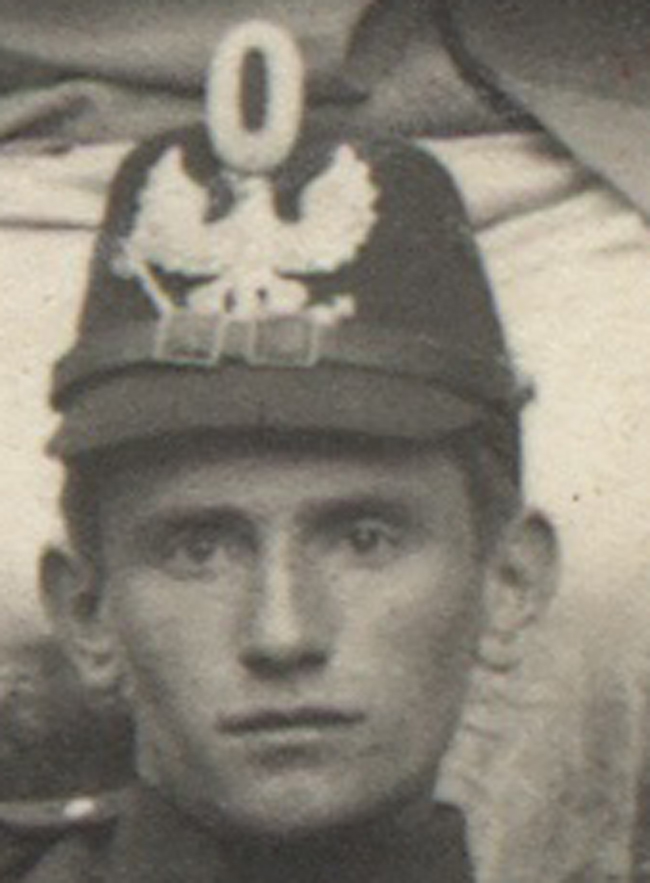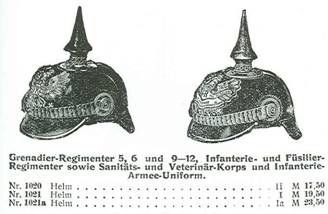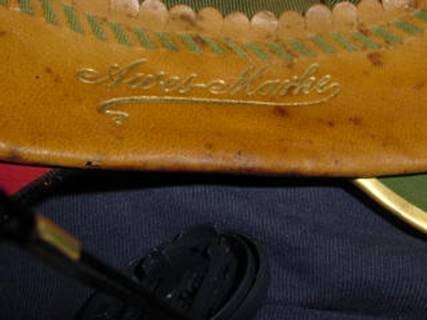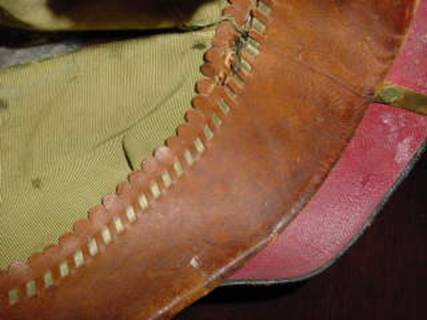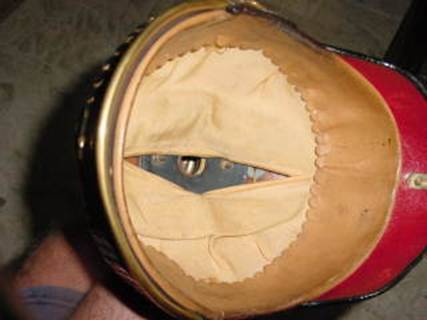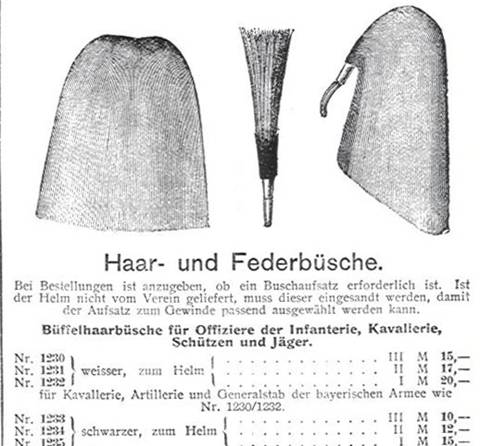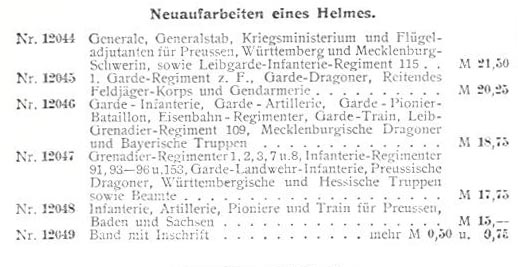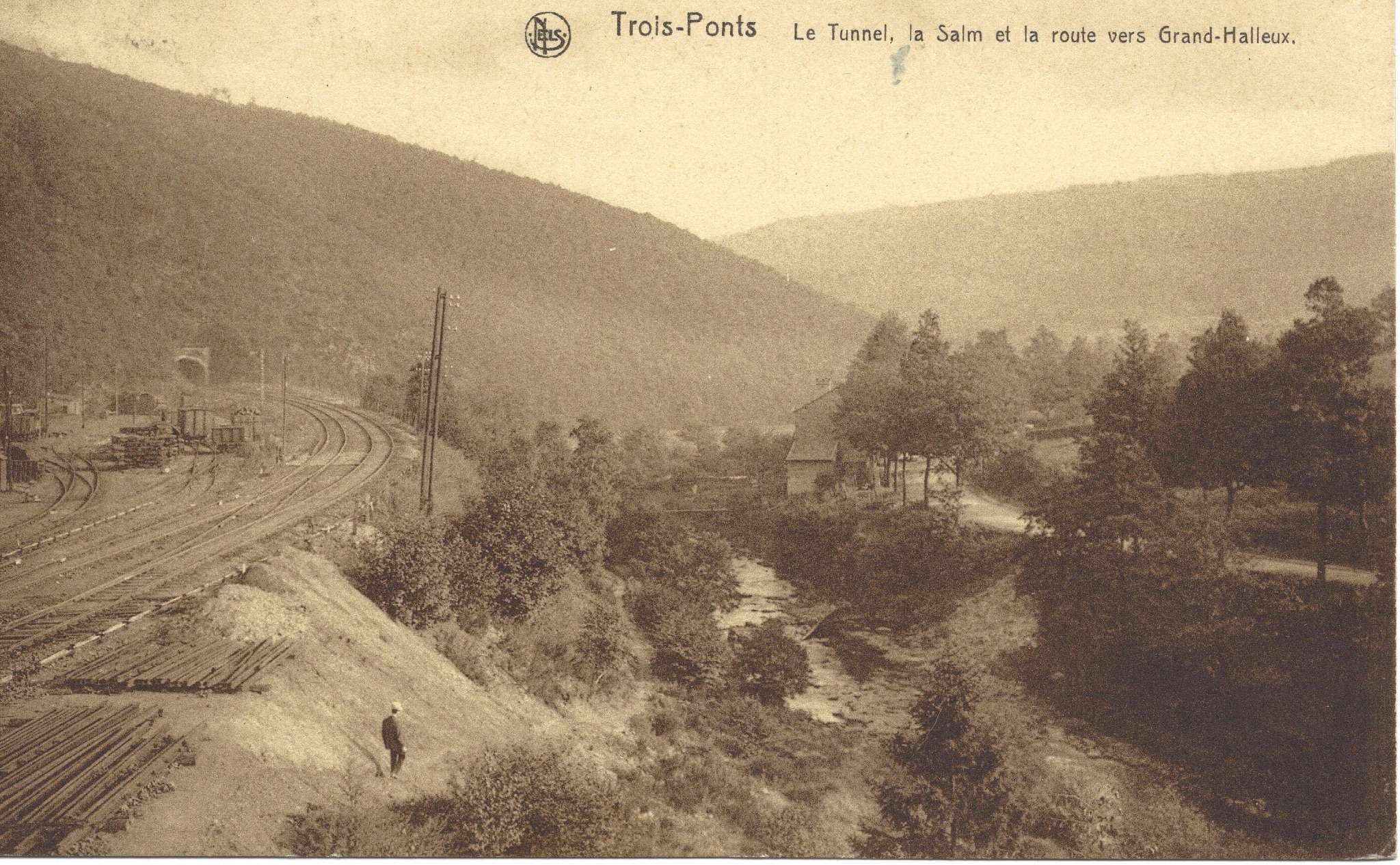
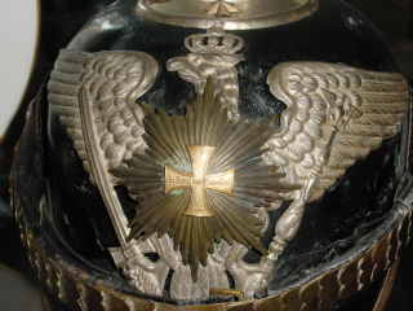
Landwehr Crosses the Basics
Landwehr Crosses the Basics
Joseph P Robinson
2 December 2004
In response to a series of questions I thought I would jot these thoughts down. Janet was Air Guard and so we try to do mostly reserve helmets but fail. Step 1 is to understand that the proper title is Landwehr Cross not reserve cross regardless of whether it was worn by reserve forces or Landwehr forces. Step 2 is to understand that there are a million variations on a theme here. The Trawnik book diagrams of this issue are well worth having. Most authors stay clear of reserve stuff because it is too hard and not as well documented as active stuff.
 |
So here goes a short dissertation. An American auction house has put up a Baden reserve plate without bandeaux and saying it is odd when in reality it is correct except the color of the cross. In theory the motto was on the Landwehr cross and thus no bandeaux on the wappen. There is no difference between Landwehr and Reserve. The difference is in the motto on the cross and the wappen itself. There are also differences in how they are attached. Knötel had a plate of Reserve and Landwehr crosses in his Das deutsche Heer-Friedensuniform bei Ausbruch des Weltkriegs. This cartoon drawing is our starting point.
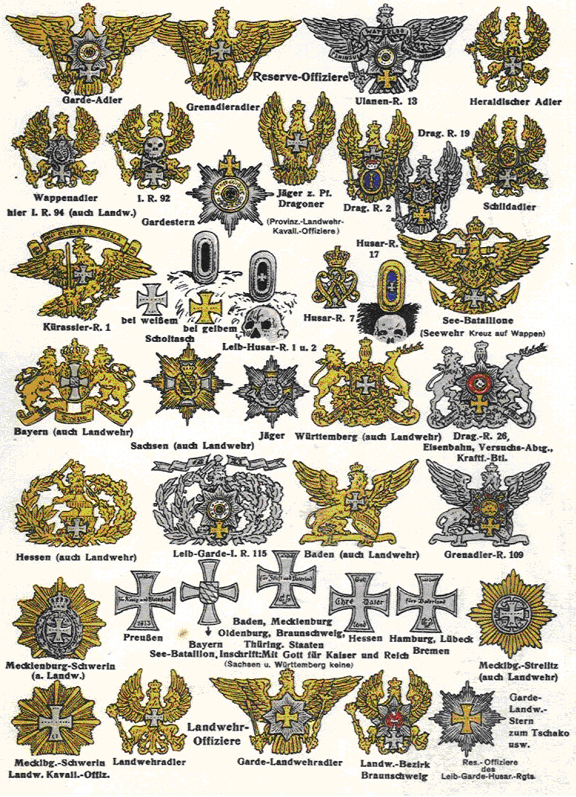 |
Ok so let’s take a look at Prussian Eagles.
This is a reserve eagle in my collection. FR on the chest, no bandeaux. Cross which has the motto Für Koenig and Vaterland is on the cross. These crosses a standard 25mm width and height. I have seen smaller ones that are about 20mm. there was no enlisted version of this wappen.
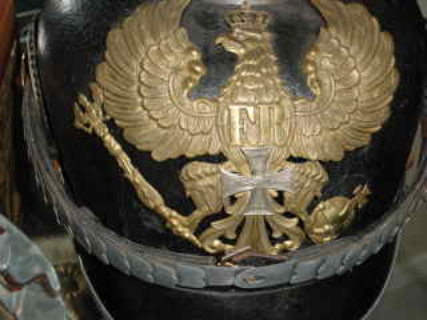 |
This is a Landwehr wappen and you can see no FR on the chest. The cross is mounted on that location. A standard 25mm cross. Some but not all of these eagles had an inset of the cross. If you look at the back of this plate you can see several things. The impression of the cross and the “prongs” that attached the cross. These prongs were often soldered to the back of the cross and if removed often broke. The cross was not always soldered to the wappen. The holes that the prongs went through were pretty rough. If you look at the one on the left you can clearly see it is more oval. If you see machine drilled holes it is probably new.
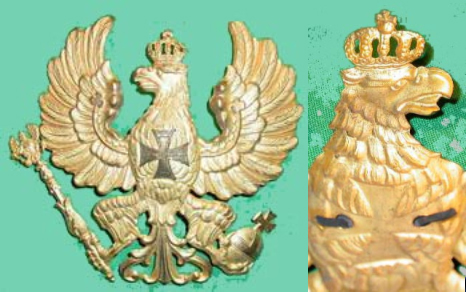 |
This is the reserve helmet I mentioned. Cross with Bandeaux. Incorrect but I have no doubt about this being original. I have seen about a dozen of these. This has a double motto. Why? I guess it was what they had. If you were an active OYV that went reserve I guess you could add a cross for 1 mark instead of refitting it for 15 marks.
|
|
Guard Reserve, Grenadier Reserve and Landwehr followed a similar pattern with Guard Reserve having the cross mounted in the lower position under the guard star. New style grenadier reserves had so many variations as to warrant a separate article.
|
|
Guard Landwehr were entirely different with their own specific wappen as below. there is enlisted form of this wappen that was used for both the Guard reserves and Landwehr both.
 |
I have seen variations on position as well as size of the cross. Baden followed the same concept except there is no difference between Landwehr and Reserve. The cross said “Für Fürst and Vaterland” so while it looks the same at a distance from the Prussian it is indeed different. Here is a picture of a Baden with both mottos. Correct no. Original probably. Lots of Baden reserve wappen had both mottos. Look at Stubbs and you find they abound. Note the position of the cross. Baden crosses seem to be here or mostly lower down between the leg and the shield. Also some in the center had the cross impressed like Prussian Landwehr eagles.
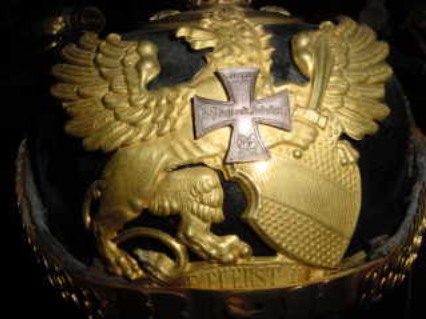 |
This shows the back of that plate with 4 holes for the reserve cross. Two are utilized.
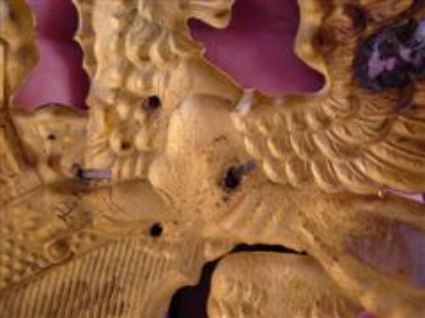 |
There an interesting Baden theory. A senior collector and man of the cloth, has a Baden wappen with a Koenig reserve cross. His theory is that it belongs to IR 114. Those guys had a wacht company that guarded the little Prussian enclave of Hohenzollern (the catholic side). I have no other support for this theory and don’t buy it objectively but it is a real possibility.
Wurttemberg had no motto on their cross like this example. This was also 25mm. While Würrtemburg had no difference between Reserve and Landwehr it seems as though their Landsturm units had Gilt crosses on gilt wappen. One of these is on Hilsenbeck pg 163 but is not noted by Knötel.
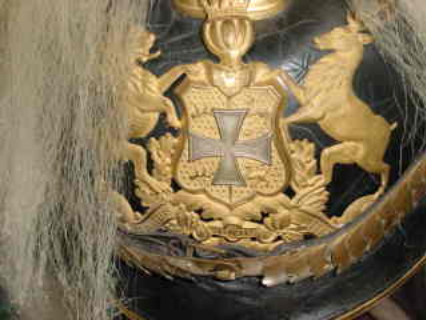 |
Hessian crosses were different again. There was no difference between reserve and Landwehr. Again a 25mm cross. The motto said “Gott Ehre Vaterland”. Positioning seems consistently low.
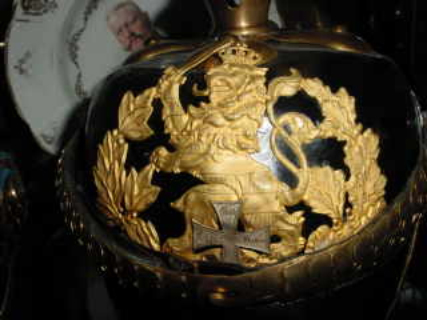 |
Saxon crosses were different with no motto and no difference between Reserve and Landwehr. The crosses were supposedly 56mm.
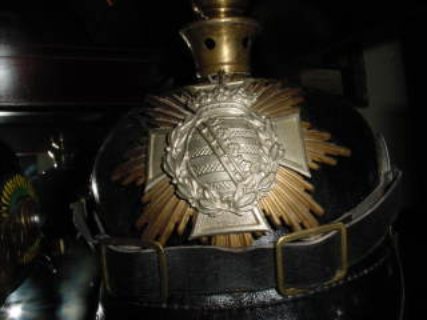 |
Mecklenburg had a lot of size differences and a Fürst motto. No difference between reserve and Landwehr. They were supposedly 44mm and the one in the Herrmann book is. However, many are about the size of Prussian crosses. Strelitz supposedly had one that was 36mm but I have no example. Stubbs on page 497 and Laine states that all Mecklenburg crosses were silver not gilt but examples such as Herrmann and this one disagree.
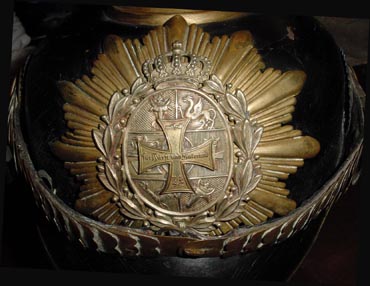
The very small vassal states that had a Prussian eagle and a central wappen followed the same general rules as the Prussians. There were many variations like the Landwehr of IR 92 did not have the Peninsular bandeaux. This has Fürst crosses mounted in the lower position. The sole contrary example is Oldenburg which had a Koenig cross.
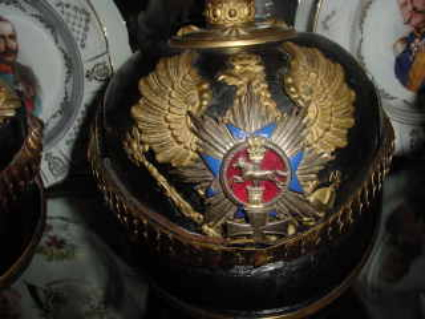 |
The Hansiatic states followed the Prussian pattern but their cross was different. The motto read “mitt Gott Furs Vaterland”.
Bavaria had no motto and no difference between reserve and Landwehr. And a cross that was 45mm wide and 55mmn tall.
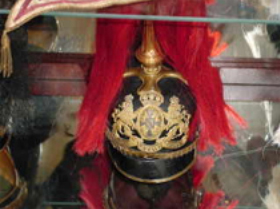 |
There are also differences in the decorations on the crosses. Wreaths, swords, 1813 date. Generally Prussia had the date 1813, Furst crosses had a wreath. There were however swords too. I do not think this is random but I will get to it in other drafts.
Kammerstempel – non Infantry
Kammerstempel – non Infantry
Joseph P. Robinson.—I have endeavored to give credit to the owners of photographs who have given me permission to publish them. Without question I have made mistakes, omitted proper credit,or just plain missed someone. I apologize. Should anyone see that their picture is here and credit is not properly given on the contributors list please let me know and I will correct it.
13 June 2007.
Jäger
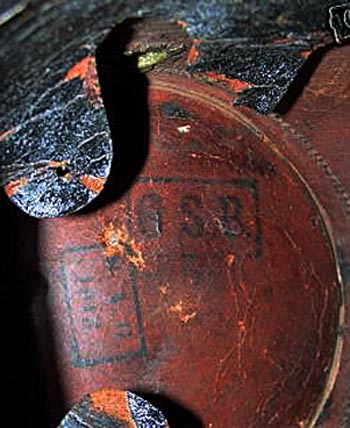
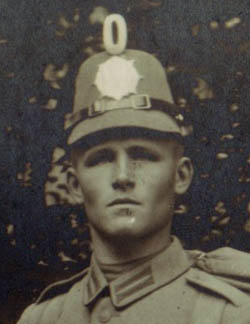
JB 2
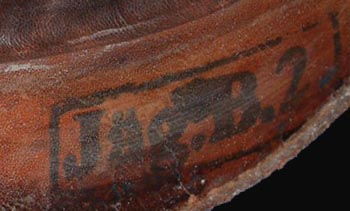
JB 4
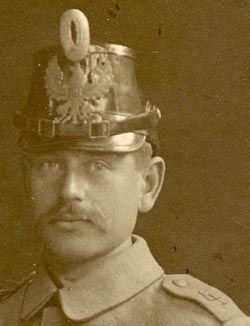
JB 6
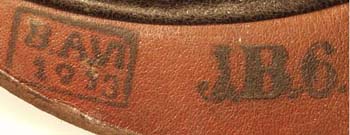
JB 7
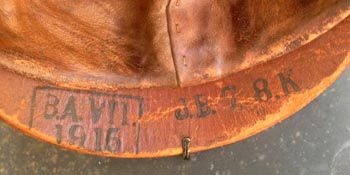
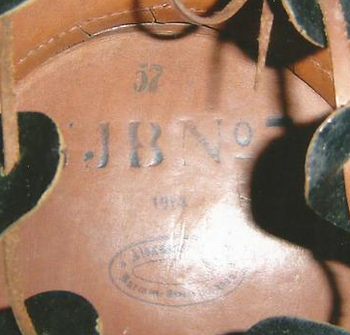
JB 8
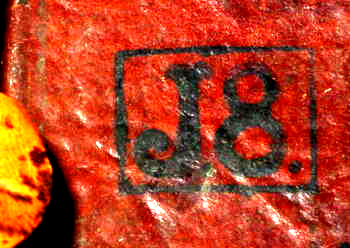
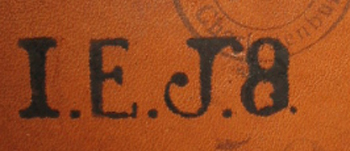
RJB 10
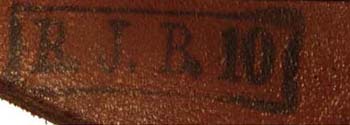
JB11

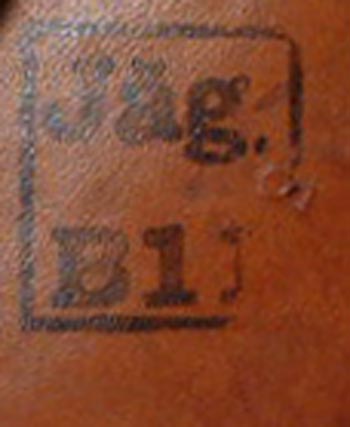
JB12
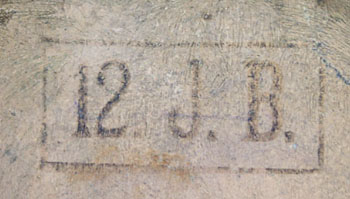
JB13
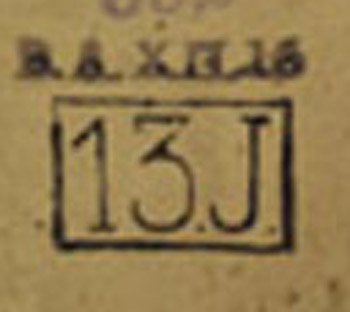
JB14
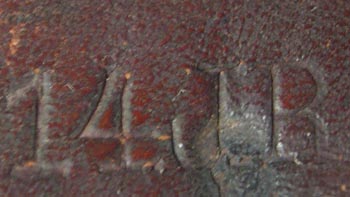
Bav. JB1
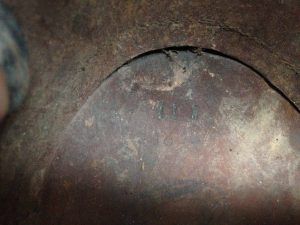
1st Reitende Battery – Could be for any regiment
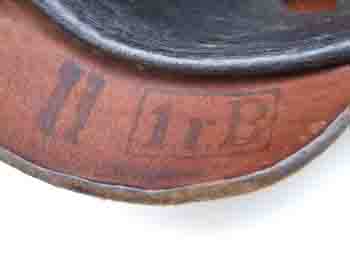
Bavarian FAR1

Bavarian FAR 4
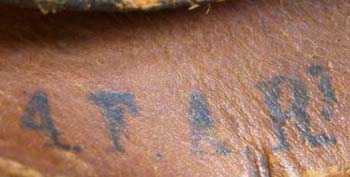
Bavarian FAR 5

FAR 5 – Found on a repaired rear visor of a Prussian M15
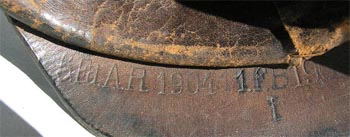
Bavarian FAR 6
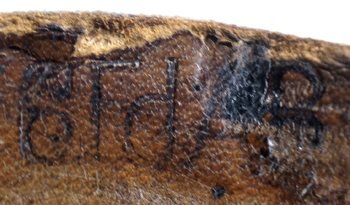
Bavarian FAR 7
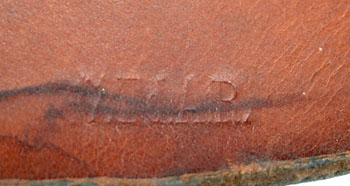
FAR 7
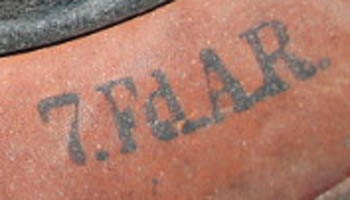
FAR 8
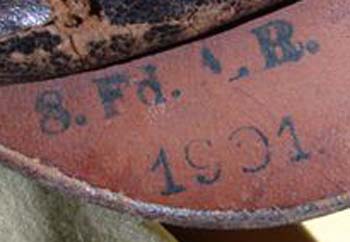
FAR 9

FAR 10
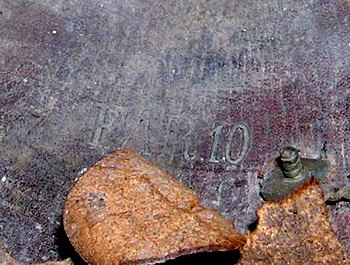
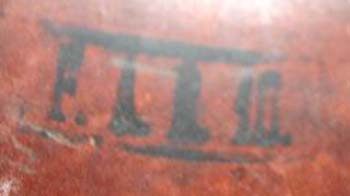
FAR12
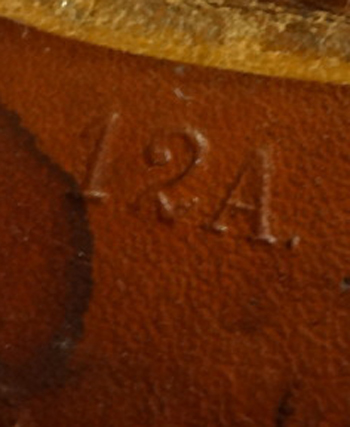
FAR 22
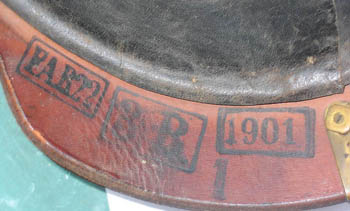
FAR 23
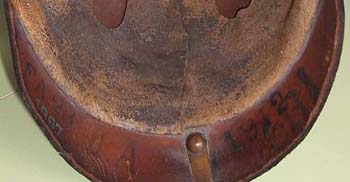
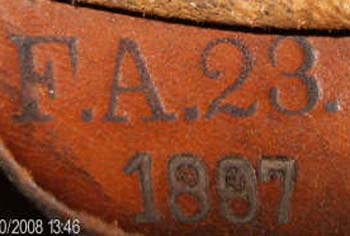
FAR 25
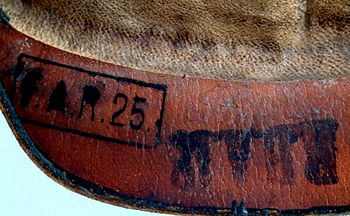
FAR 29
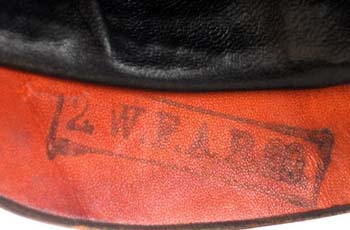
FAR 33
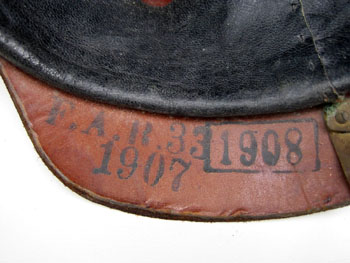
FAR 34
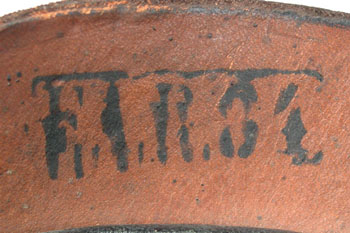
FAR 38
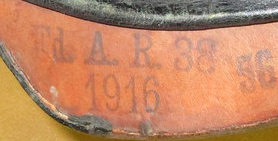
FAR 44
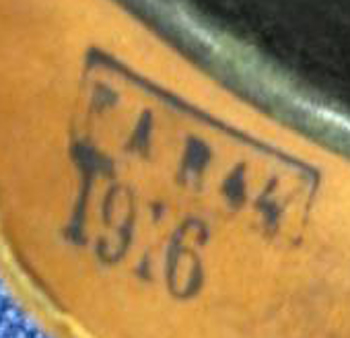
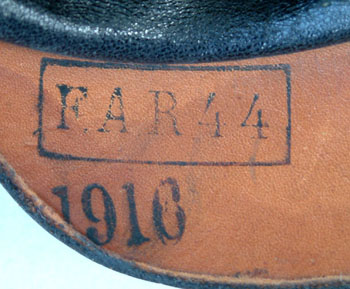
FAR 46
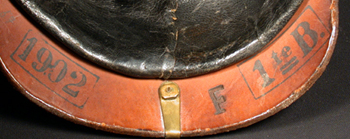
FAR 50
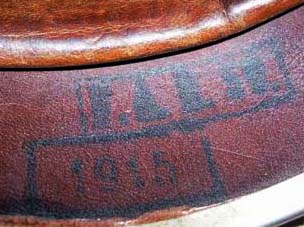
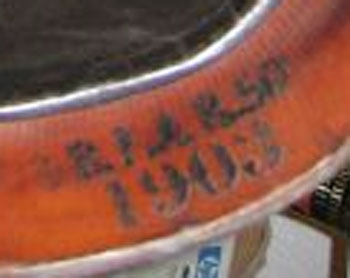
FAR 59
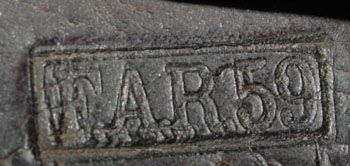
FAR 62
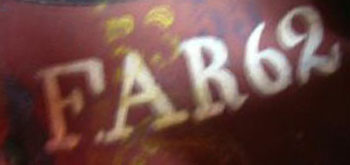
FAR 66
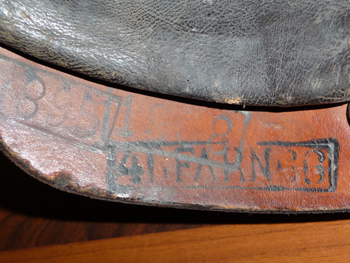
FAR 67
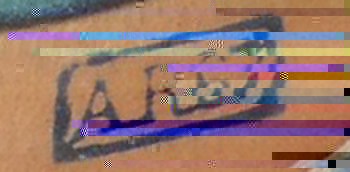
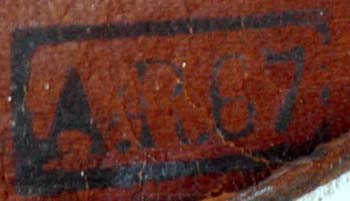
FAR 70
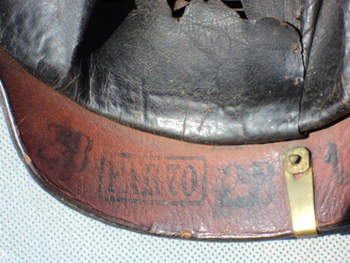
FAR 71
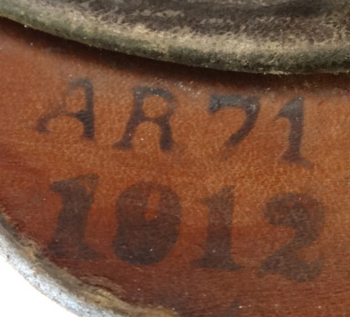
FAR 74
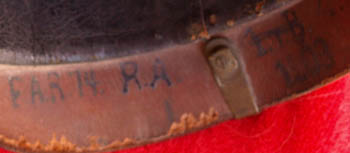
FAR 78
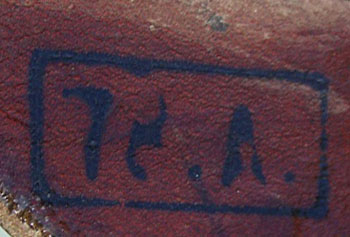
FdArty. School

Bavarian FA 2
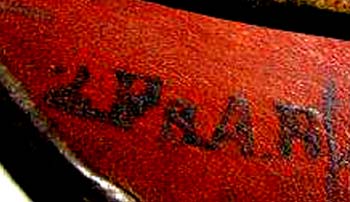
Bavarian FA 3
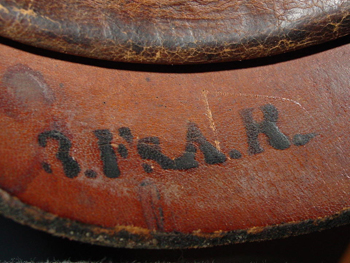
FA 3
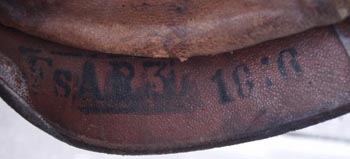
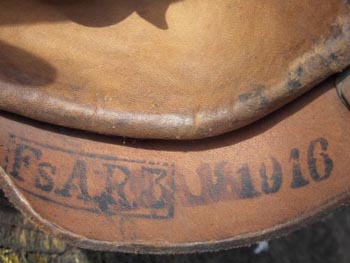
FA4 – M F s A R 4″ for Magdeburg Fuss Artiilerie Regiment 4 –Fußartillerie-Regt. Encke (Magdeburgisches) Nr.4 (Magdeburg) IV Armee Korps
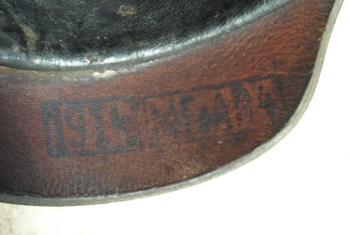
FA 8 – Model 1891 Preußen Fuß Artillerie
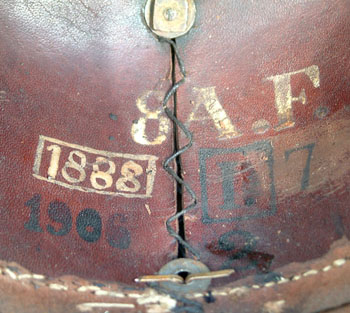
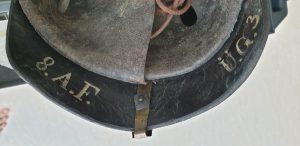
FA 9
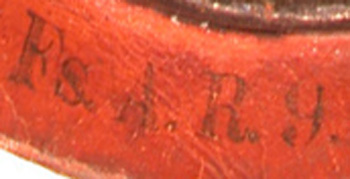
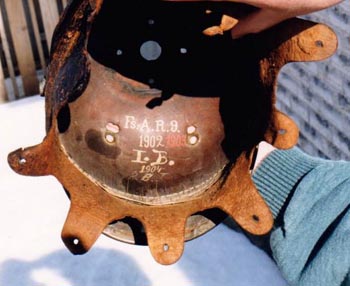
FA 10
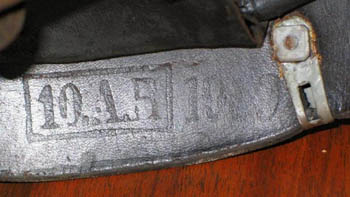
FA 12
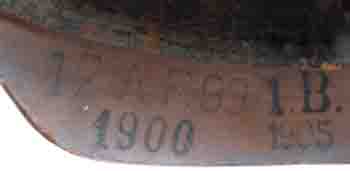
FA 15
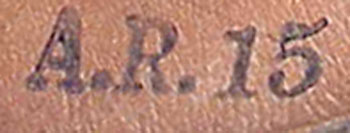
FA 18
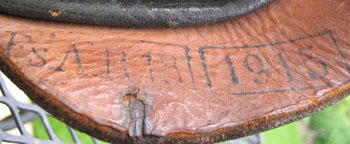
FA 31
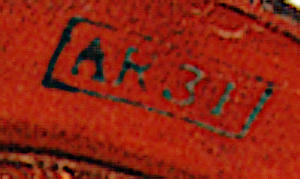
FA 32
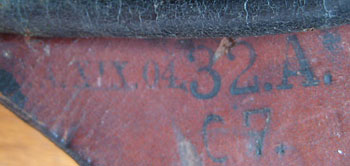
b.2FA
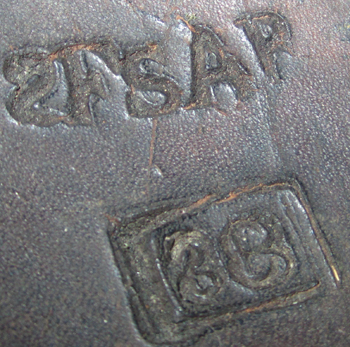
b.3FA
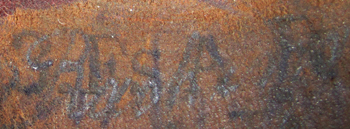
Pioneer GPB
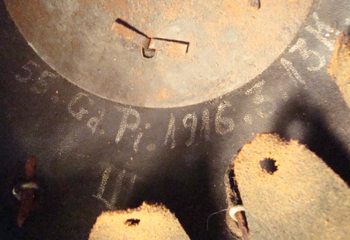
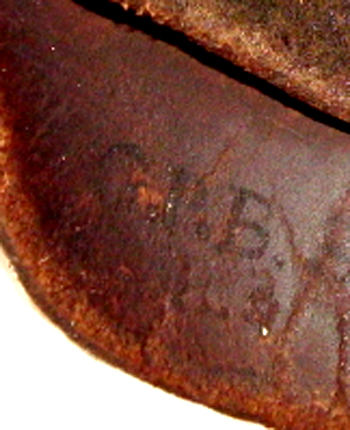
PB2
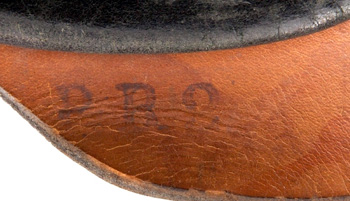

PB 4
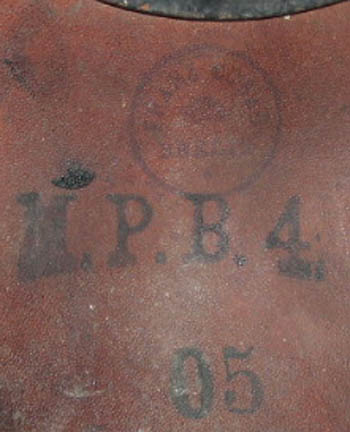
PB 5
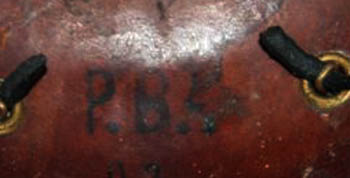
PB 6

PB 7
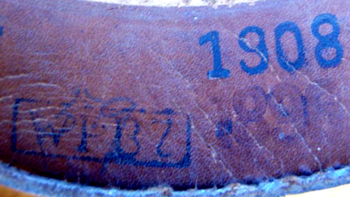
PB 8
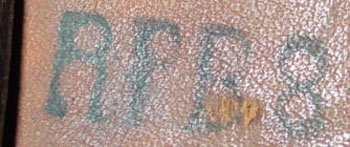
PB 10
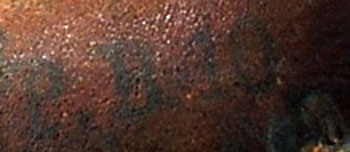
PB 12
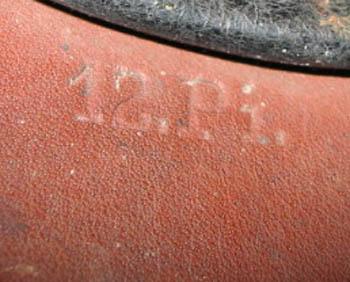
PB 13
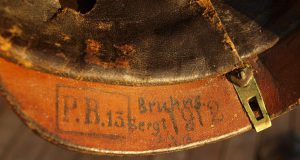
PB 16
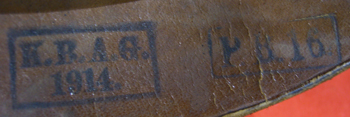
PB 19
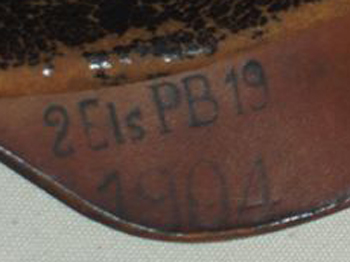
PB 20
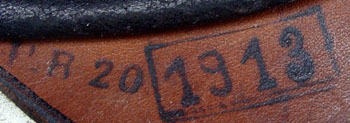
PB 21
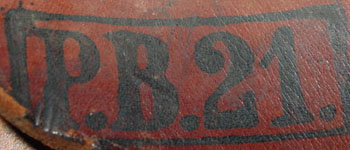
PB22 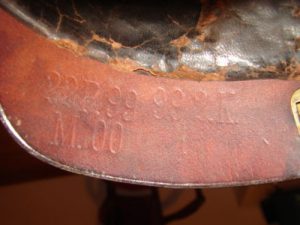
PB 23
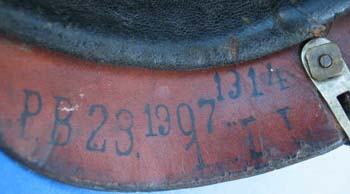
PB 24

PB 27
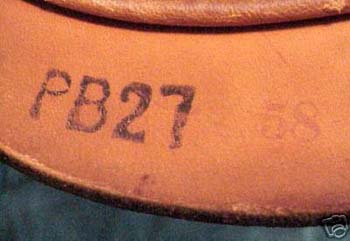
PB 28
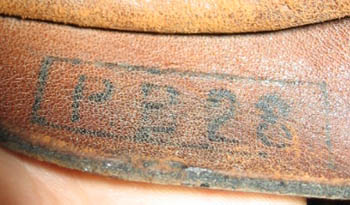
PB 29
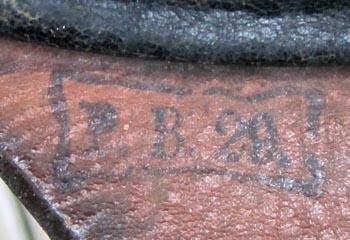
PR 30
During mobilization the 8 peacetime fortress pioneer battalions were expanded into 10 pioneer regiments. The regimental numbers were 18, 19, 20, 23, 24, 25, 29, 30, 31 and the Bavarian pioneer Regiment. The first one was found on an M. 15 helmet.

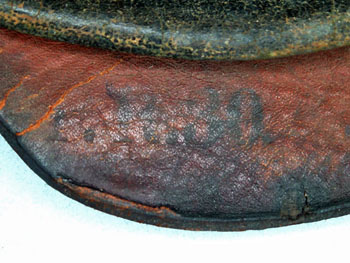
Train
GTB
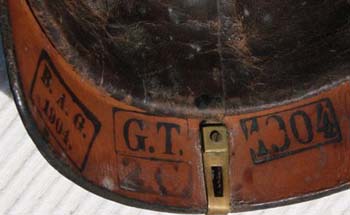
TB2

TB8
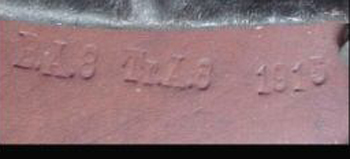
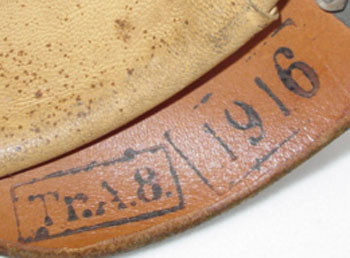
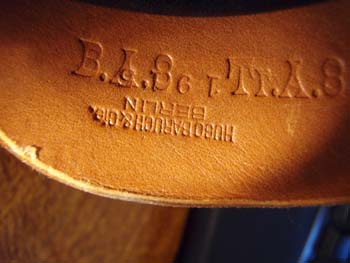
TB 10
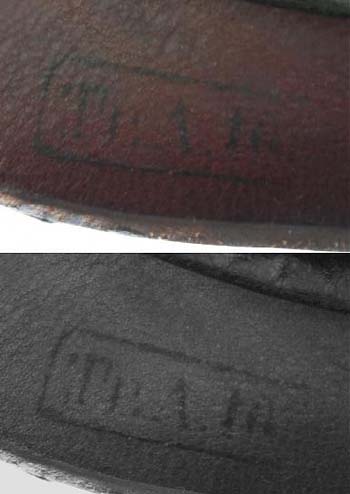
TB 12
Model 1867/1873 Sachsen (Saxon) Mannschaften Train Tschako.
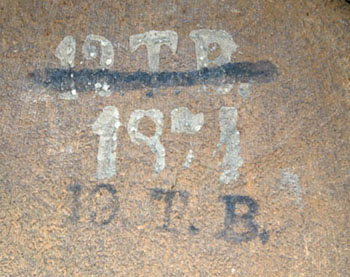
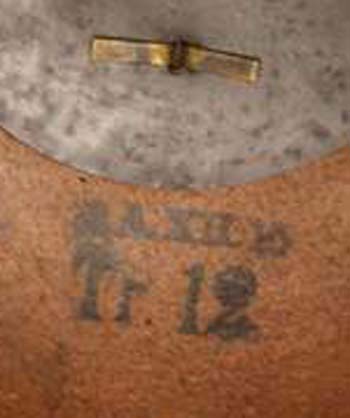
TB 13
The Tschako is clearly marked “KTB.N-13” for Königs Train-Bataillon Nr.13 and dated 1873. Second one is a model 1895 Württemberg Train Abteilung 13 Reserve or Landwehr Mannschaften Pickelhaube for Württemberg.
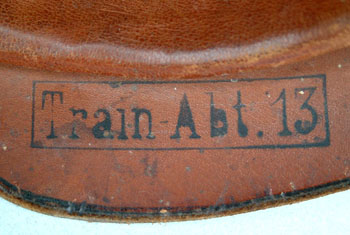
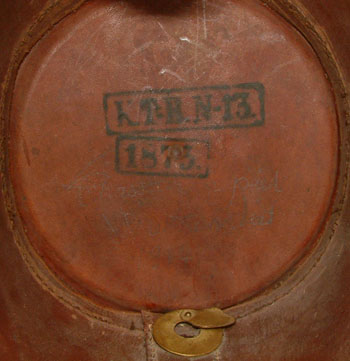
TB 14
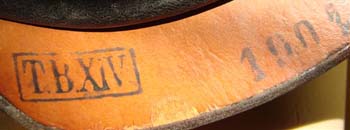
TB 18

TB 19
Model 1867/1873 Sachsen (Saxon) Mannschaften Train Tschako.

TB 25
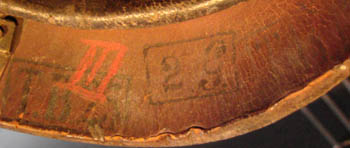
Kürassier
GdC
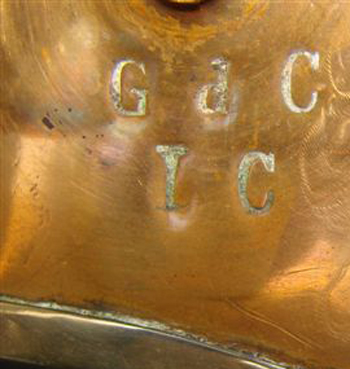
GKR
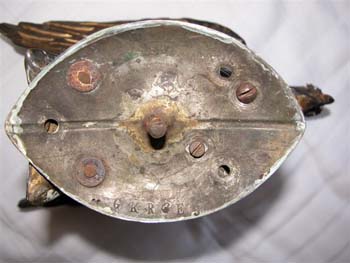
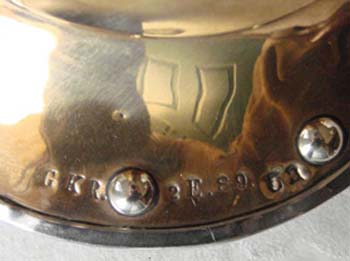
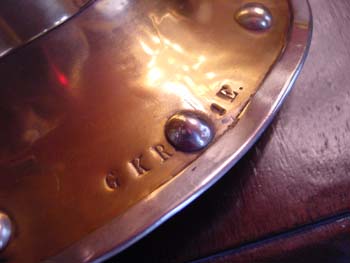
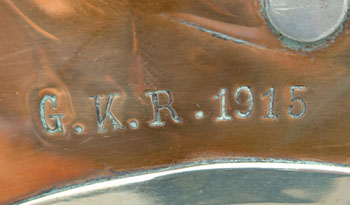
KR 1
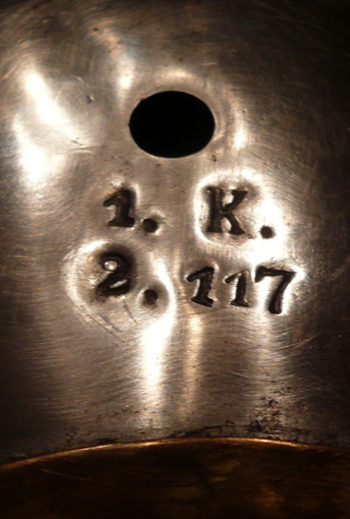
KR 2
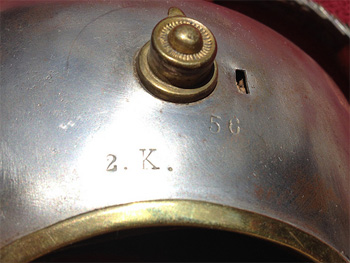
KR 8
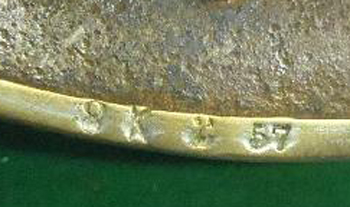
Dragoon
DR2
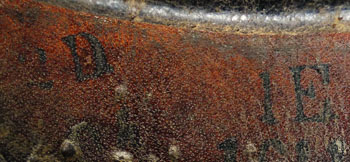
DR 4
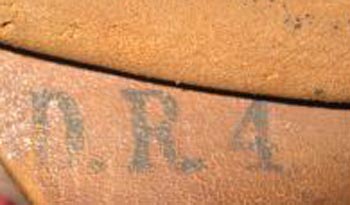
DR 6
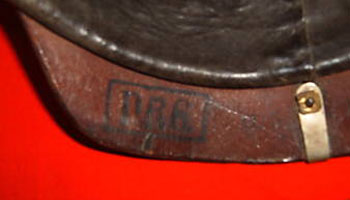

DR7
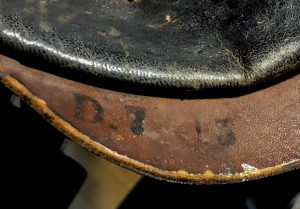
DR 8
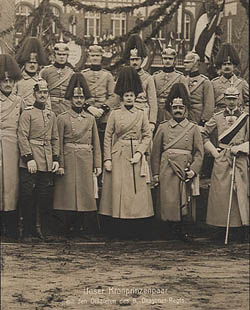
DR 9
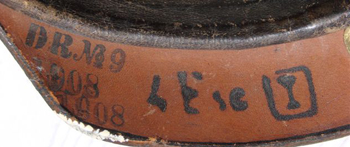
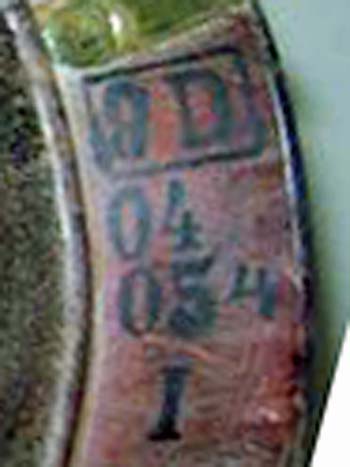
DR10
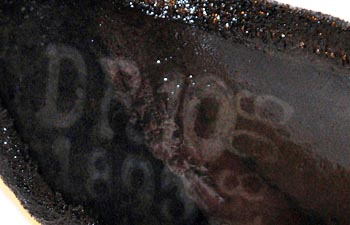
DR 14
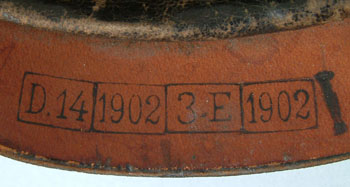
DR15 – 3. Schlesisches Dragoner-Regiment Nr.15 Hagenau
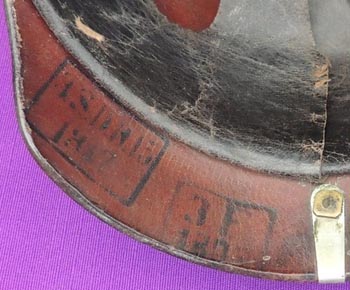
DR 18
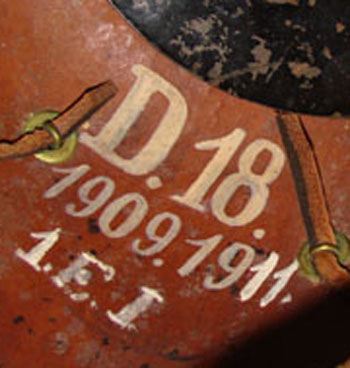
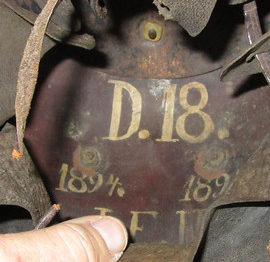
DR 19
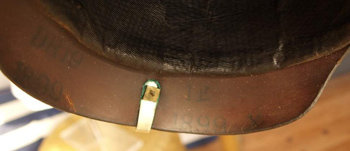
DR 20 – “LDR20” ( Leib – Dragoner – Regt. Nr. 20) and dated “1895, 1896” on the rear visor.
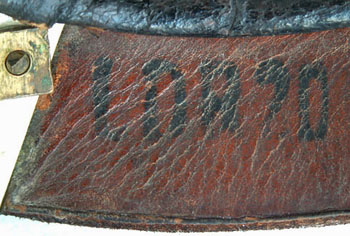
DR 24
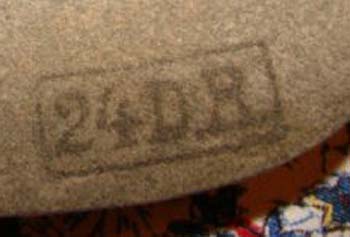
DR 25
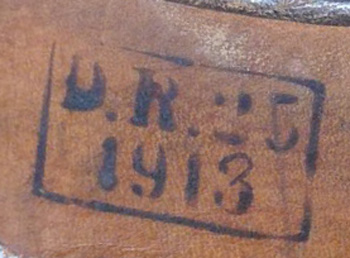
Ulan
1GUR
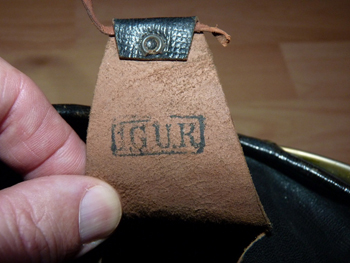
UR 1 – “WUR1” for “Westpreußisches Ulanen Regt. Nr. 1.
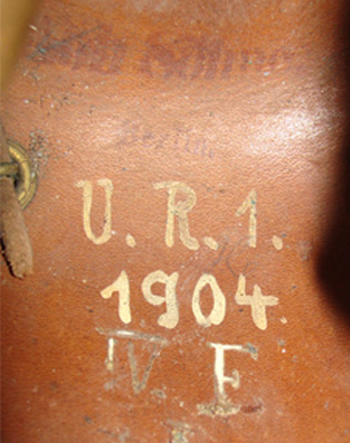
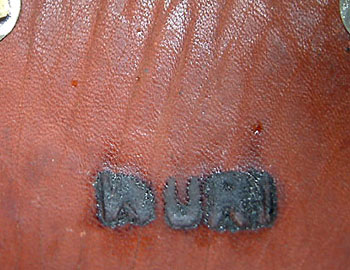
UR2
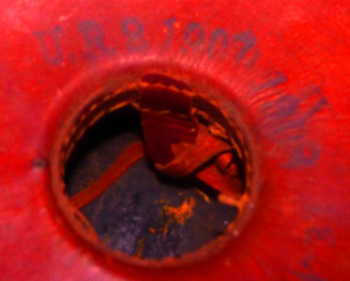
UR 3
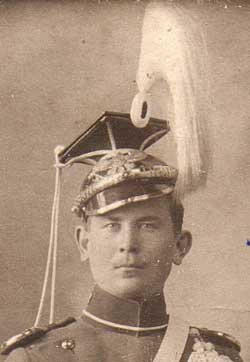
UR7 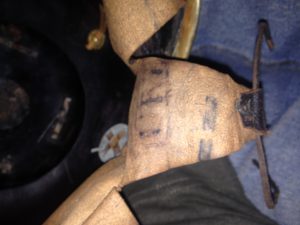
UR11
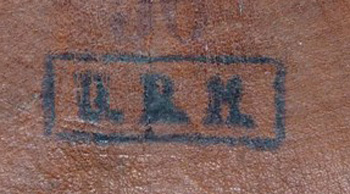
UR13
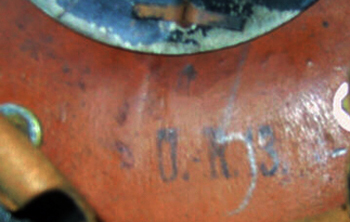
UR16
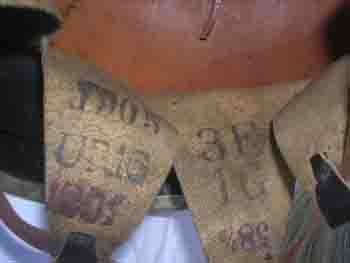
UR18

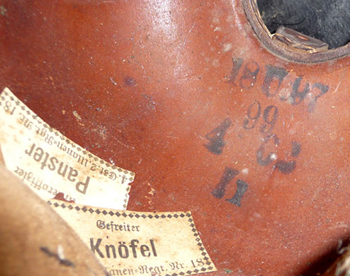
Hussar
HR3
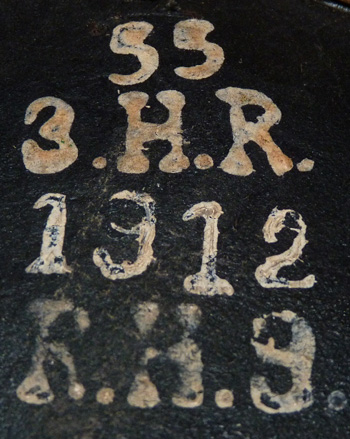
HR 7
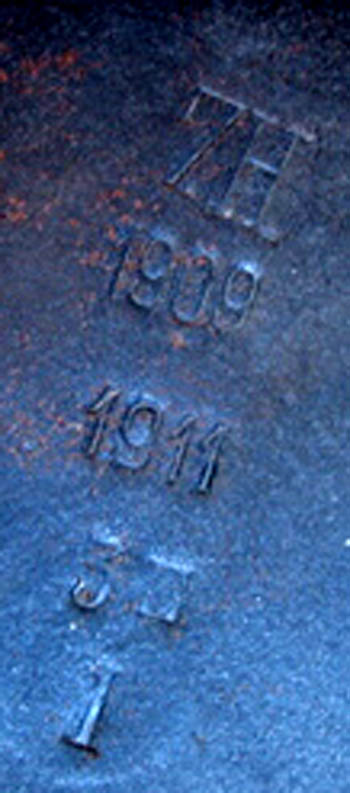
HR 10
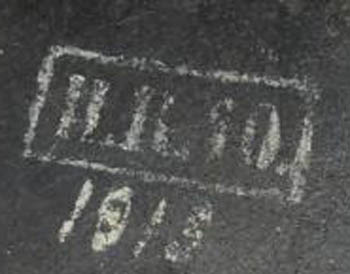
HR 16
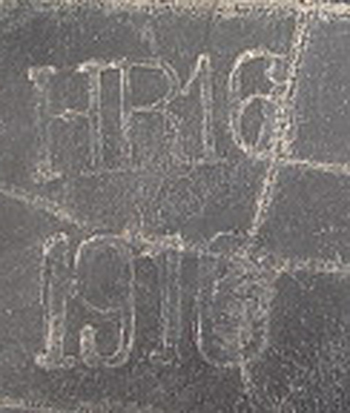
HR 17

HR 20
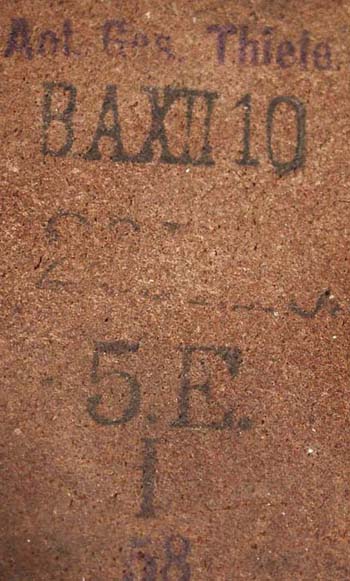
Jäger zu Pferd
JZP 5
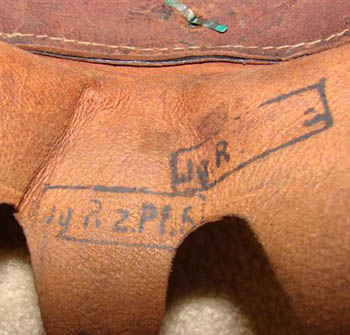
JZP 6
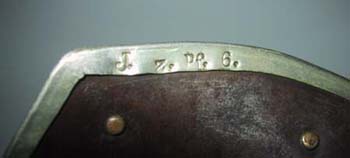
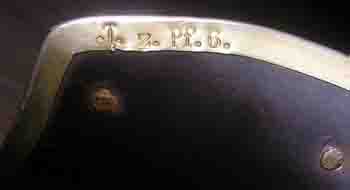
JZP 7
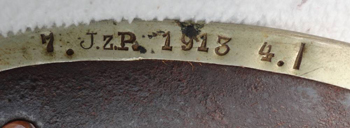
JZP 8 – The higher number JZP regiments were supposed to have leather helmets. As you can see from these examples JZP8 had both kinds.
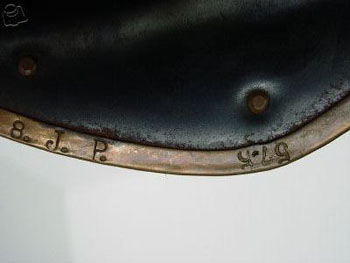
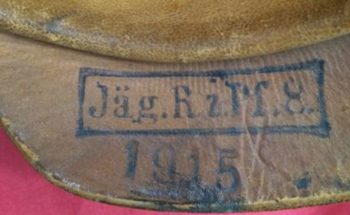
JZP 12
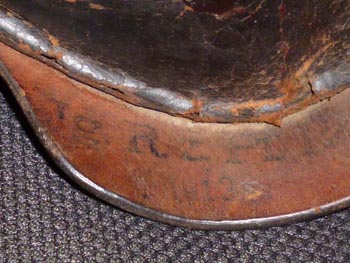
Bavarian Chev.
Chev 1

Chev 5
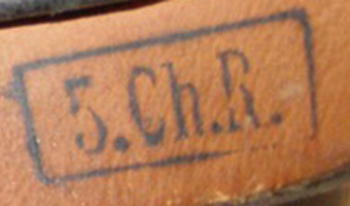
Chev 6
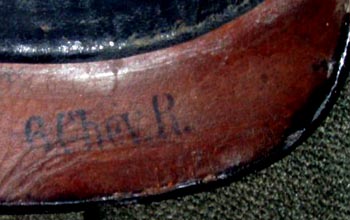
Bavarian Schwere Reiter
Saxon Reiter Regiment
1SSR
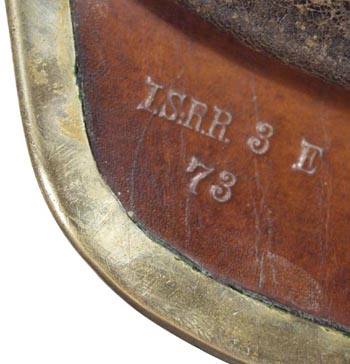
Eisenbahn
ER 1
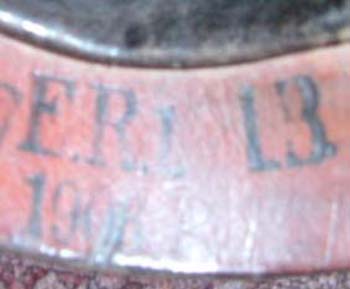
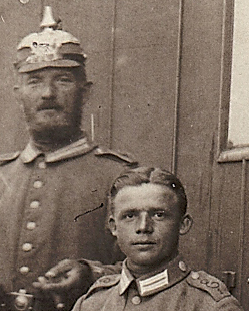
ER 2

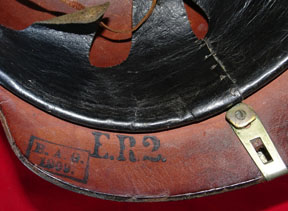
ER 3
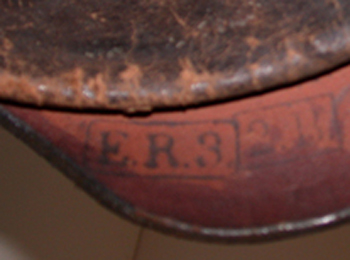
Misc.
TB 1 Tel. Batt. 1
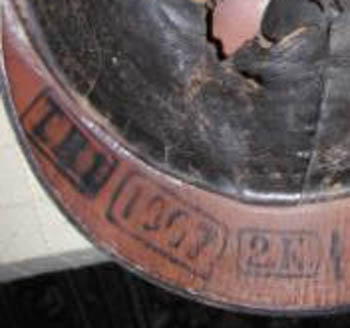

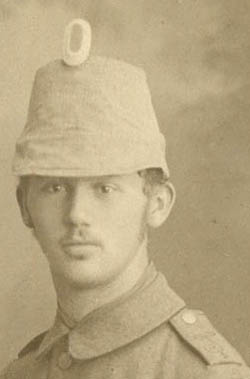
TB2 Tel Batt. 2 – At first it appears to be a “J” but it is actually the German “T” the same as what was carried on the shoulder strap.
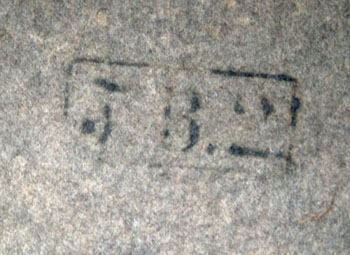
TB 3 Tel Batt.3 – Prussian M15 shako
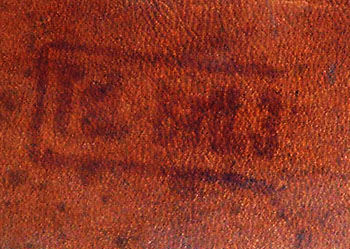
Bav. Tel. Batt.
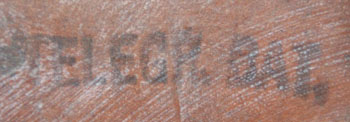
Flieg. Bn 1
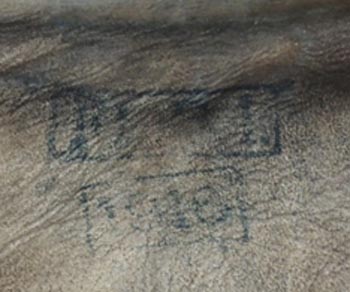
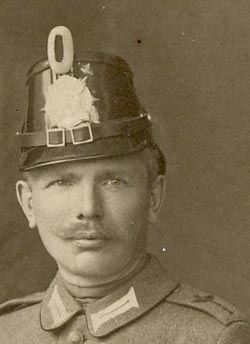
Luftschiffer
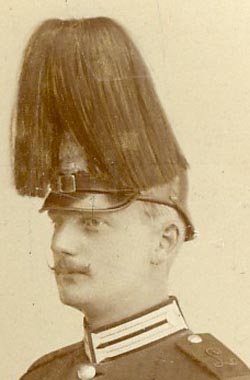
LG
Rural Police of Prussia
Landgendarmerie had 12 Brigades
1. Königberg i. Pr. 2. Stettin 3. Berlin 4. Magdeburg 5. Posen 6. Breslau 7. Münster i.W. 8. Koblenz 9. Kiel 10. Hannover 11. Kassel 12. Danzig
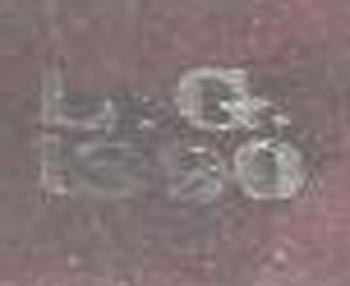
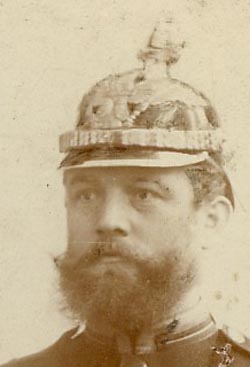
RG 18 Reich’ Gendarme
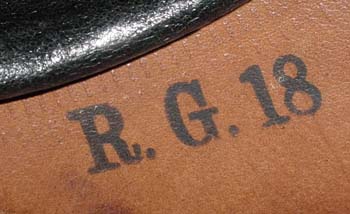
Kraftfahr-Bataillon
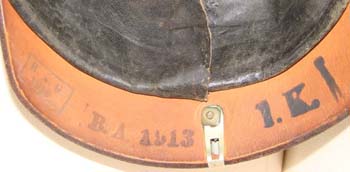
Scheinwerfer-Battery
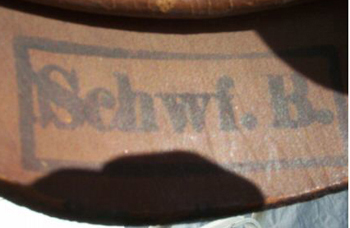
TR. Juterborg???
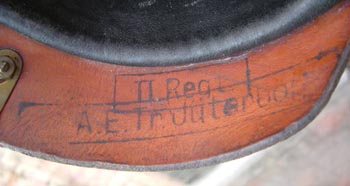
Unterofficier School
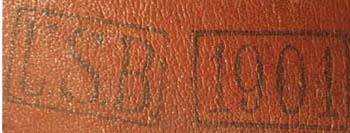
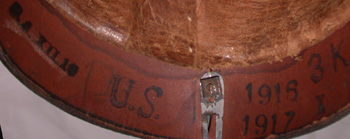
Bayerisches Sanitäts-Abteilung Nr. 4
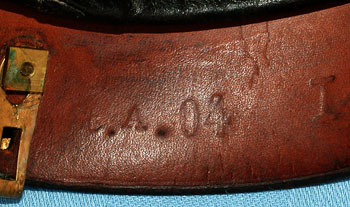
Verkehrstechnische Prüfungskommission Abteilung
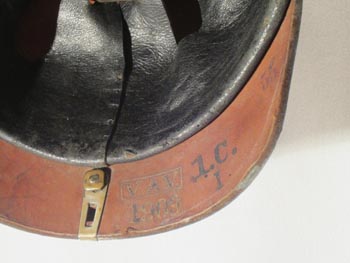
Marine 1st Sea Battalion
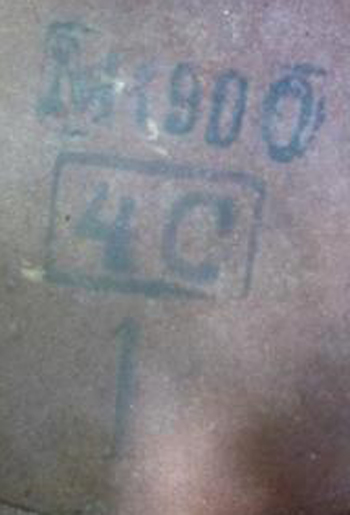
Marine 3rd Sea Battalion

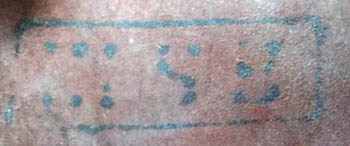
No Idea
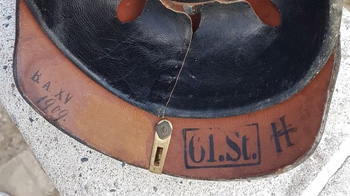
Contributors include: Reservist 1,James LeBrasseur, Nathan Feingold, Michigan Ave Antiques, George Wylie, Philippe Devaux, Maxime Chaffotte, Amy Bellars, Tony Schnurr, Charles Booth, Randy Trawnick, Tony Cowan, Steve Sinclair, Brian Loree, Paul LeBrasseur, Mark Avery, Steve Flanders, Pascal Casanova, Bruno Peault, Mike Freiheit, Martin Francom, Roy A, ,Bernard, Mike Prictor, Alexandre Terrasse, Tim Quinlan, Dave Silva, Wayne and Mari Anne Derrick , Rich Palmer, Alexandr Simek, Steve Campbell, Keith Gill, Lotan, Denton Walter, J.Cully, Karl O. Salvini, Doug Smith, Michel Morel, Tom Jacobs, Jamie Pattullo, Richard,Jean-Pierre Gilotin, Patrick Mazurie, Laurent Mirouze, Oleg Ryazan, M. Buchner, Milosz Zielinski, Eric Kaechelin,Thierry Dromnelle, Jean Paul Milani, Laurent Fourcault, Dave Boilard, Mark Cain, Sergio Semino, Michael Timperman, Ron Poniatowski, Dennis Koehler, Reg Wirth, Alexandre Herreman,

Kammerstempel – Infantry
Kammerstempel – Infantry
Joseph P. Robinson.–much of the data in this listing was provided by Hartwig Busche. His manuscript on infantry is unparalleled. I have endeavored to give credit to the owners of photographs who have given me permission to publish them. Without question I have made mistakes, omitted proper credit,or just plain missed someone. I apologize. Should anyone see that their picture is here and credit is not properly given on the contributors list please let me know and I will correct it. Please send me your stamp examples!
27 July 2007.
| Please send me your corrections this is a public resource.
My software, did not like this. For some reason it adjusted the fonts and styles in various cells as I transferred it. I found no quick way to fix it yet |
||||||||||||||||||||||||||||||||||||||||||||||||||||||||||||||||||||||||||||||||||||||||||||||||||||||||||||||||||||||||||||||||||||||||||||||||||||||||||||||||||||||||||||||||||||||||||||||||||||||||||||||||||||||||||||||||||||||||||||||||||||||||||||||||||||||||
|
||||||||||||||||||||||||||||||||||||||||||||||||||||||||||||||||||||||||||||||||||||||||||||||||||||||||||||||||||||||||||||||||||||||||||||||||||||||||||||||||||||||||||||||||||||||||||||||||||||||||||||||||||||||||||||||||||||||||||||||||||||||||||||||||||||||||
|
||||||||||||||||||||||||||||||||||||||||||||||||||||||||||||||||||||||||||||||||||||||||||||||||||||||||||||||||||||||||||||||||||||||||||||||||||||||||||||||||||||||||||||||||||||||||||||||||||||||||||||||||||||||||||||||||||||||||||||||||||||||||||||||||||||||||
|
||||||||||||||||||||||||||||||||||||||||||||||||||||||||||||||||||||||||||||||||||||||||||||||||||||||||||||||||||||||||||||||||||||||||||||||||||||||||||||||||||||||||||||||||||||||||||||||||||||||||||||||||||||||||||||||||||||||||||||||||||||||||||||||||||||||||
|
||||||||||||||||||||||||||||||||||||||||||||||||||||||||||||||||||||||||||||||||||||||||||||||||||||||||||||||||||||||||||||||||||||||||||||||||||||||||||||||||||||||||||||||||||||||||||||||||||||||||||||||||||||||||||||||||||||||||||||||||||||||||||||||||||||||||
|
||||||||||||||||||||||||||||||||||||||||||||||||||||||||||||||||||||||||||||||||||||||||||||||||||||||||||||||||||||||||||||||||||||||||||||||||||||||||||||||||||||||||||||||||||||||||||||||||||||||||||||||||||||||||||||||||||||||||||||||||||||||||||||||||||||||||
|
||||||||||||||||||||||||||||||||||||||||||||||||||||||||||||||||||||||||||||||||||||||||||||||||||||||||||||||||||||||||||||||||||||||||||||||||||||||||||||||||||||||||||||||||||||||||||||||||||||||||||||||||||||||||||||||||||||||||||||||||||||||||||||||||||||||||
|
||||||||||||||||||||||||||||||||||||||||||||||||||||||||||||||||||||||||||||||||||||||||||||||||||||||||||||||||||||||||||||||||||||||||||||||||||||||||||||||||||||||||||||||||||||||||||||||||||||||||||||||||||||||||||||||||||||||||||||||||||||||||||||||||||||||||
|
||||||||||||||||||||||||||||||||||||||||||||||||||||||||||||||||||||||||||||||||||||||||||||||||||||||||||||||||||||||||||||||||||||||||||||||||||||||||||||||||||||||||||||||||||||||||||||||||||||||||||||||||||||||||||||||||||||||||||||||||||||||||||||||||||||||||
|
||||||||||||||||||||||||||||||||||||||||||||||||||||||||||||||||||||||||||||||||||||||||||||||||||||||||||||||||||||||||||||||||||||||||||||||||||||||||||||||||||||||||||||||||||||||||||||||||||||||||||||||||||||||||||||||||||||||||||||||||||||||||||||||||||||||||
|
||||||||||||||||||||||||||||||||||||||||||||||||||||||||||||||||||||||||||||||||||||||||||||||||||||||||||||||||||||||||||||||||||||||||||||||||||||||||||||||||||||||||||||||||||||||||||||||||||||||||||||||||||||||||||||||||||||||||||||||||||||||||||||||||||||||||
|
||||||||||||||||||||||||||||||||||||||||||||||||||||||||||||||||||||||||||||||||||||||||||||||||||||||||||||||||||||||||||||||||||||||||||||||||||||||||||||||||||||||||||||||||||||||||||||||||||||||||||||||||||||||||||||||||||||||||||||||||||||||||||||||||||||||||
|
||||||||||||||||||||||||||||||||||||||||||||||||||||||||||||||||||||||||||||||||||||||||||||||||||||||||||||||||||||||||||||||||||||||||||||||||||||||||||||||||||||||||||||||||||||||||||||||||||||||||||||||||||||||||||||||||||||||||||||||||||||||||||||||||||||||||
|
||||||||||||||||||||||||||||||||||||||||||||||||||||||||||||||||||||||||||||||||||||||||||||||||||||||||||||||||||||||||||||||||||||||||||||||||||||||||||||||||||||||||||||||||||||||||||||||||||||||||||||||||||||||||||||||||||||||||||||||||||||||||||||||||||||||||
|
||||||||||||||||||||||||||||||||||||||||||||||||||||||||||||||||||||||||||||||||||||||||||||||||||||||||||||||||||||||||||||||||||||||||||||||||||||||||||||||||||||||||||||||||||||||||||||||||||||||||||||||||||||||||||||||||||||||||||||||||||||||||||||||||||||||||
|
||||||||||||||||||||||||||||||||||||||||||||||||||||||||||||||||||||||||||||||||||||||||||||||||||||||||||||||||||||||||||||||||||||||||||||||||||||||||||||||||||||||||||||||||||||||||||||||||||||||||||||||||||||||||||||||||||||||||||||||||||||||||||||||||||||||||
|
||||||||||||||||||||||||||||||||||||||||||||||||||||||||||||||||||||||||||||||||||||||||||||||||||||||||||||||||||||||||||||||||||||||||||||||||||||||||||||||||||||||||||||||||||||||||||||||||||||||||||||||||||||||||||||||||||||||||||||||||||||||||||||||||||||||||
|
||||||||||||||||||||||||||||||||||||||||||||||||||||||||||||||||||||||||||||||||||||||||||||||||||||||||||||||||||||||||||||||||||||||||||||||||||||||||||||||||||||||||||||||||||||||||||||||||||||||||||||||||||||||||||||||||||||||||||||||||||||||||||||||||||||||||
|
||||||||||||||||||||||||||||||||||||||||||||||||||||||||||||||||||||||||||||||||||||||||||||||||||||||||||||||||||||||||||||||||||||||||||||||||||||||||||||||||||||||||||||||||||||||||||||||||||||||||||||||||||||||||||||||||||||||||||||||||||||||||||||||||||||||||
|
||||||||||||||||||||||||||||||||||||||||||||||||||||||||||||||||||||||||||||||||||||||||||||||||||||||||||||||||||||||||||||||||||||||||||||||||||||||||||||||||||||||||||||||||||||||||||||||||||||||||||||||||||||||||||||||||||||||||||||||||||||||||||||||||||||||||
|
||||||||||||||||||||||||||||||||||||||||||||||||||||||||||||||||||||||||||||||||||||||||||||||||||||||||||||||||||||||||||||||||||||||||||||||||||||||||||||||||||||||||||||||||||||||||||||||||||||||||||||||||||||||||||||||||||||||||||||||||||||||||||||||||||||||||
|
||||||||||||||||||||||||||||||||||||||||||||||||||||||||||||||||||||||||||||||||||||||||||||||||||||||||||||||||||||||||||||||||||||||||||||||||||||||||||||||||||||||||||||||||||||||||||||||||||||||||||||||||||||||||||||||||||||||||||||||||||||||||||||||||||||||||
|
||||||||||||||||||||||||||||||||||||||||||||||||||||||||||||||||||||||||||||||||||||||||||||||||||||||||||||||||||||||||||||||||||||||||||||||||||||||||||||||||||||||||||||||||||||||||||||||||||||||||||||||||||||||||||||||||||||||||||||||||||||||||||||||||||||||||
|
||||||||||||||||||||||||||||||||||||||||||||||||||||||||||||||||||||||||||||||||||||||||||||||||||||||||||||||||||||||||||||||||||||||||||||||||||||||||||||||||||||||||||||||||||||||||||||||||||||||||||||||||||||||||||||||||||||||||||||||||||||||||||||||||||||||||
|
||||||||||||||||||||||||||||||||||||||||||||||||||||||||||||||||||||||||||||||||||||||||||||||||||||||||||||||||||||||||||||||||||||||||||||||||||||||||||||||||||||||||||||||||||||||||||||||||||||||||||||||||||||||||||||||||||||||||||||||||||||||||||||||||||||||||
|
||||||||||||||||||||||||||||||||||||||||||||||||||||||||||||||||||||||||||||||||||||||||||||||||||||||||||||||||||||||||||||||||||||||||||||||||||||||||||||||||||||||||||||||||||||||||||||||||||||||||||||||||||||||||||||||||||||||||||||||||||||||||||||||||||||||||
|
||||||||||||||||||||||||||||||||||||||||||||||||||||||||||||||||||||||||||||||||||||||||||||||||||||||||||||||||||||||||||||||||||||||||||||||||||||||||||||||||||||||||||||||||||||||||||||||||||||||||||||||||||||||||||||||||||||||||||||||||||||||||||||||||||||||||
|
||||||||||||||||||||||||||||||||||||||||||||||||||||||||||||||||||||||||||||||||||||||||||||||||||||||||||||||||||||||||||||||||||||||||||||||||||||||||||||||||||||||||||||||||||||||||||||||||||||||||||||||||||||||||||||||||||||||||||||||||||||||||||||||||||||||||
|
||||||||||||||||||||||||||||||||||||||||||||||||||||||||||||||||||||||||||||||||||||||||||||||||||||||||||||||||||||||||||||||||||||||||||||||||||||||||||||||||||||||||||||||||||||||||||||||||||||||||||||||||||||||||||||||||||||||||||||||||||||||||||||||||||||||||
|
||||||||||||||||||||||||||||||||||||||||||||||||||||||||||||||||||||||||||||||||||||||||||||||||||||||||||||||||||||||||||||||||||||||||||||||||||||||||||||||||||||||||||||||||||||||||||||||||||||||||||||||||||||||||||||||||||||||||||||||||||||||||||||||||||||||||
|
||||||||||||||||||||||||||||||||||||||||||||||||||||||||||||||||||||||||||||||||||||||||||||||||||||||||||||||||||||||||||||||||||||||||||||||||||||||||||||||||||||||||||||||||||||||||||||||||||||||||||||||||||||||||||||||||||||||||||||||||||||||||||||||||||||||||
|
||||||||||||||||||||||||||||||||||||||||||||||||||||||||||||||||||||||||||||||||||||||||||||||||||||||||||||||||||||||||||||||||||||||||||||||||||||||||||||||||||||||||||||||||||||||||||||||||||||||||||||||||||||||||||||||||||||||||||||||||||||||||||||||||||||||||
|
||||||||||||||||||||||||||||||||||||||||||||||||||||||||||||||||||||||||||||||||||||||||||||||||||||||||||||||||||||||||||||||||||||||||||||||||||||||||||||||||||||||||||||||||||||||||||||||||||||||||||||||||||||||||||||||||||||||||||||||||||||||||||||||||||||||||
|
||||||||||||||||||||||||||||||||||||||||||||||||||||||||||||||||||||||||||||||||||||||||||||||||||||||||||||||||||||||||||||||||||||||||||||||||||||||||||||||||||||||||||||||||||||||||||||||||||||||||||||||||||||||||||||||||||||||||||||||||||||||||||||||||||||||||
|
||||||||||||||||||||||||||||||||||||||||||||||||||||||||||||||||||||||||||||||||||||||||||||||||||||||||||||||||||||||||||||||||||||||||||||||||||||||||||||||||||||||||||||||||||||||||||||||||||||||||||||||||||||||||||||||||||||||||||||||||||||||||||||||||||||||||
| Contributors include: Reservist 1,James LeBrasseur, Nathan Feingold, Michigan Ave Antiques, George Wylie, Philippe Devaux, Maxime Chaffotte, Amy Bellars, Tony Schnurr, Charles Booth, Randy Trawnik, Tony Cowan, Steve Sinclair, Brian Loree, Paul LeBrasseur, Mark Avery, Steve Flanders, Pascal Casanova, Bruno Peault, Mike Sullivan, Mike Prictor, Andy from Stuttgart, Roy A., Dave Silva, Jon Maguire, Rich Palmer , Andrzej Torbus, Jerry Rehr, Stu Williamson, Bill Combs, Steve Russell, George Anderson, Denton Walter, Michel Morel, Bernard Vitte, Karel Van Bosstraeten, Mary of Ladyvols, Bill Crescent , Terry Zinkowski, Daniel Leroy, Enzo De Steur, Jean-Pierre Gilotin, Alan Schaefer, Vince Milano, Robert Hinsley, Philippe Quesnay,Michael Hyam, Richard Dezeil, Luis Viloria, Carmen Roome, Bob Jones, Lars Alfers, Karl O. Salvini, Chuck Roelens, David Milo, Oleg Ryazan, Laurent Mirouze, Marco Brandolini, Milosz Zielinski,Thierry Dromnelle,Laurent Fourcault,Pierre Labes, Jean Paul Milani, Steve McFarland, Andrew Edgcombe, Sergio Semino, Ron Poniatowski, John Mann, Torsten ?, Pierrick Pereira, Jean Paul Milani, Tony Deusebio, | ||||||||||||||||||||||||||||||||||||||||||||||||||||||||||||||||||||||||||||||||||||||||||||||||||||||||||||||||||||||||||||||||||||||||||||||||||||||||||||||||||||||||||||||||||||||||||||||||||||||||||||||||||||||||||||||||||||||||||||||||||||||||||||||||||||||||
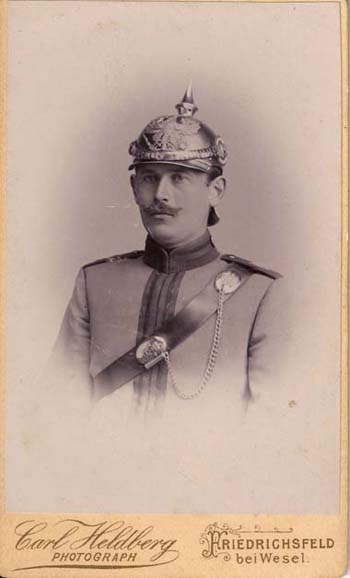
Meldereiter
Meldereiter
Joseph Robinson
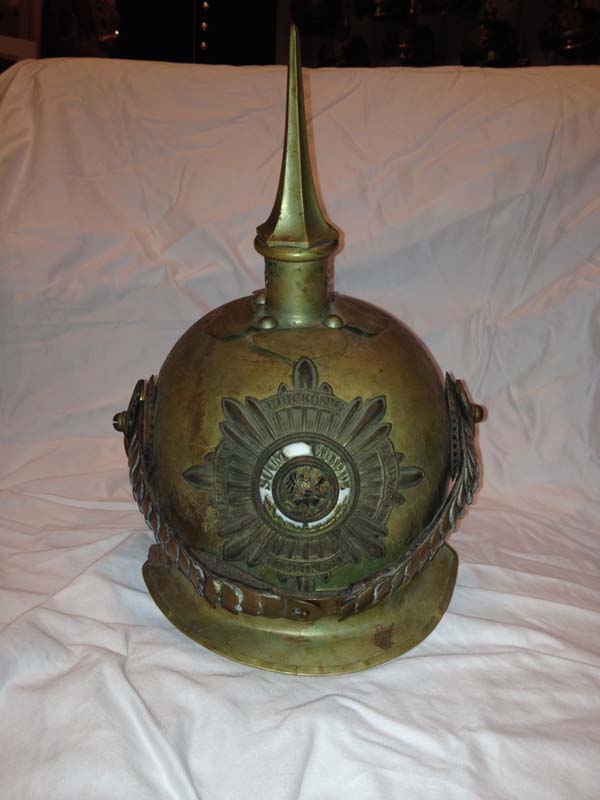
This article has its genesis in a helmet that came into the possession of Randy Trawnik. It came out of the estate sale in Arkansas and was sold on eBay. Glenn Jewison and Marshall Daut both shared information as we tried to determine what this helmet was. It is clearly not Jäger zu Pferde as the Wappen is clearly from a guard unit. It is an officers helmet and is extremely lightweight. The originality is not questioned. Prior to the formation of the Jäger zu Pferde regiments in 1905 there were several predecessors. So this started a search of the predecessors. As you will find this helmet did not fit cleanly into any hole.
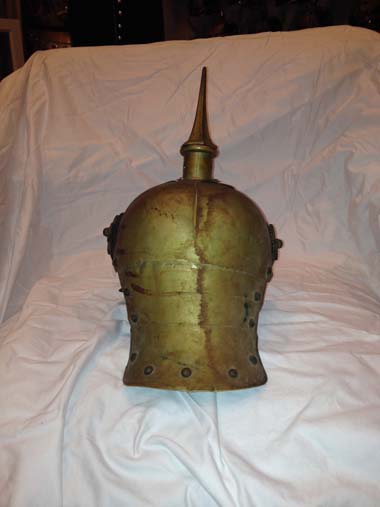
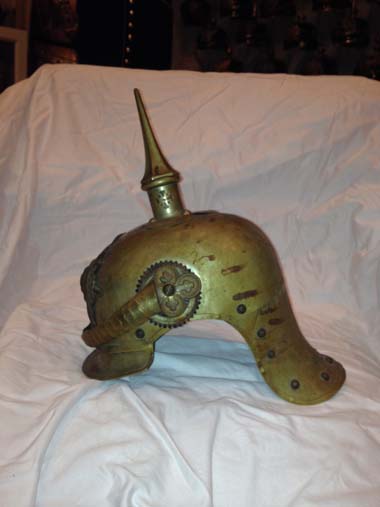
Before anybody jumps to the conclusion that this is a Kürassier helmet take a moment to consider the visors. Kürassier is round, Randy’s is square.
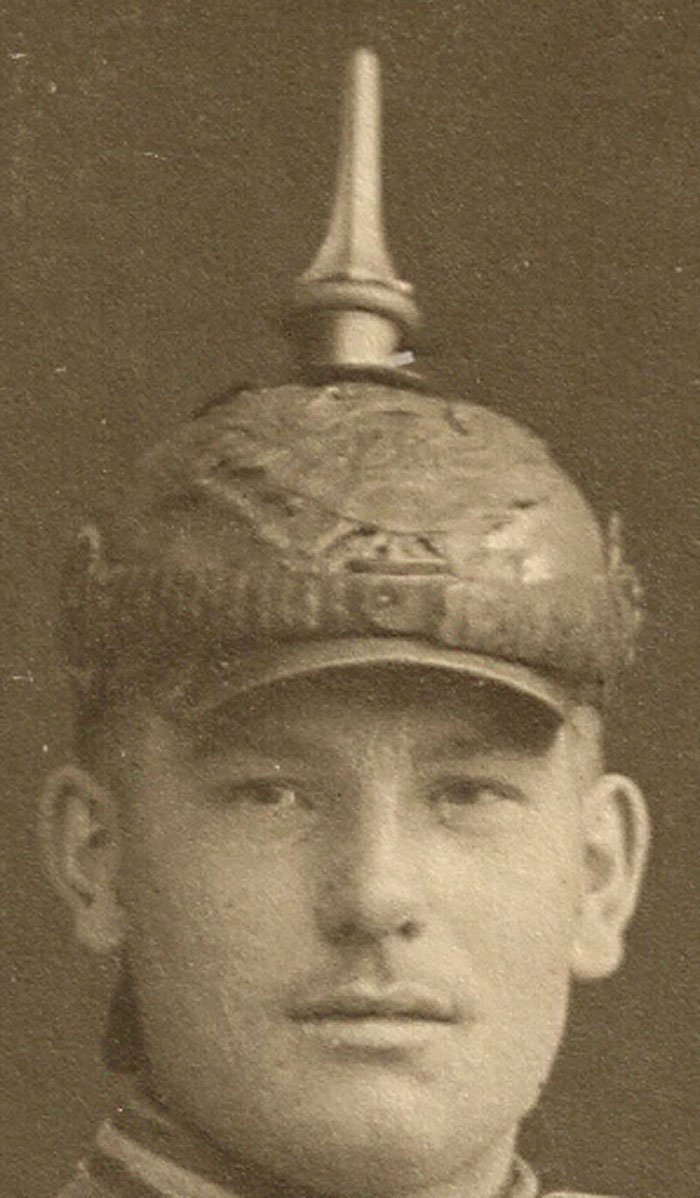
From an organizational standpoint there were 3 distinct time frames for the Meldereiter/ Jäger zu Pferde :1895-1899 Meldereiter Detachments–1899-1905 Jäger zu Pferde Squadrons -1905-1918 Jäger zu Pferde Regiments.
They were established by the AKO of 30 March 1895 an excerpt of which is shown below. You can see that in that establishment there were originally 4 officers per detachment. Therefore there should have been 4 officer helmets with a Garde star at some starting point.

As we are most interested in a helmet that came from the Garde we can track that organization directly. The Eskadron Garde-Jäger zu Pferde was formed originally as the Meldereiter-Detachement des Gardekorps on 1 October 1895. They were renamed as the Detachement Garde-Jäger zu Pferde on 31 March 1897 and as the Eskadron Garde-Jäger zu Pferde on 25 March 1899. On 1 October 1905 they became 3./Jäger zu Pferde Regiment Nr 2.
However, there is a problem with the timing of the uniform regulations. The uniform regulation for the officers was written in 1895 before the unit was established and changed in 1911 a long after the time we’re interested in. There is however an annex in the AVB detailing an AKO of 24 August 1897. An excerpt of which is shown below dealing with the helmet . As the original officers of the Meldereiter were not uniformed as such but wore the uniforms of their parent regiments, a Garde star could only have been worn between 1897 and 1905.
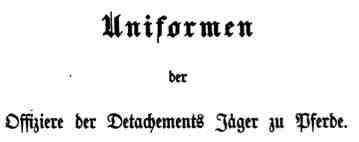
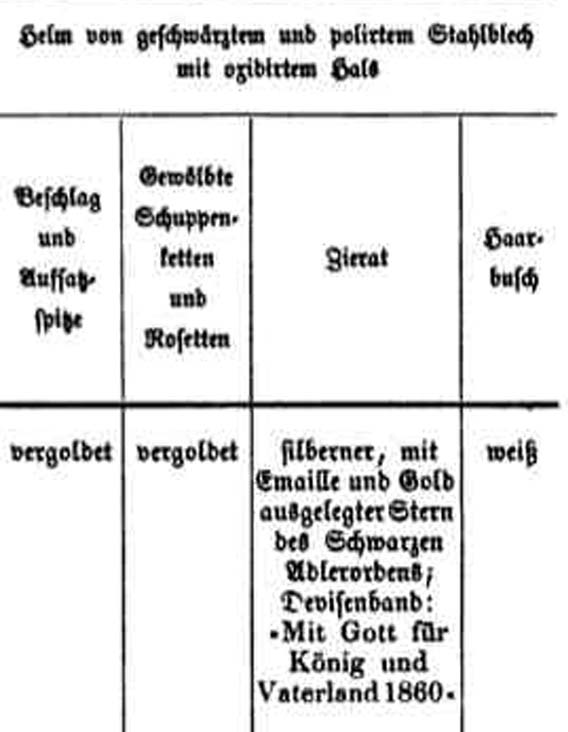
So according to the establishing regulation that helmet was blackened when it was a detachment in 1897. This is backed up by color painting of an officer identified by Glenn Jewison as Major Frhr. Thumb von Neuburg of the Eskadron Garde-Jäger zu Pferde. This picture is copied from page 23 of the book The Kaisers Army in Color by Charles Woolley. The painting is a reproduction of the work of Carl Becker. Made somewhere between 1890 and 1910 the illustration matches the regulation.
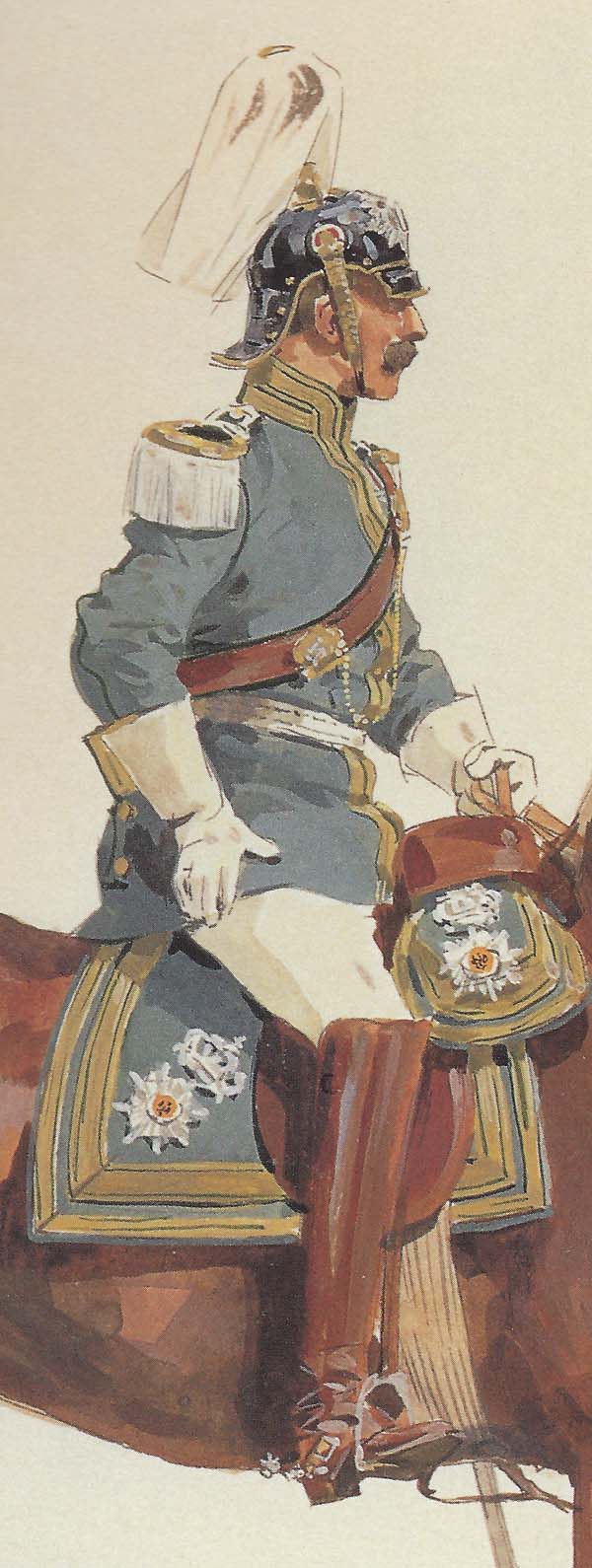
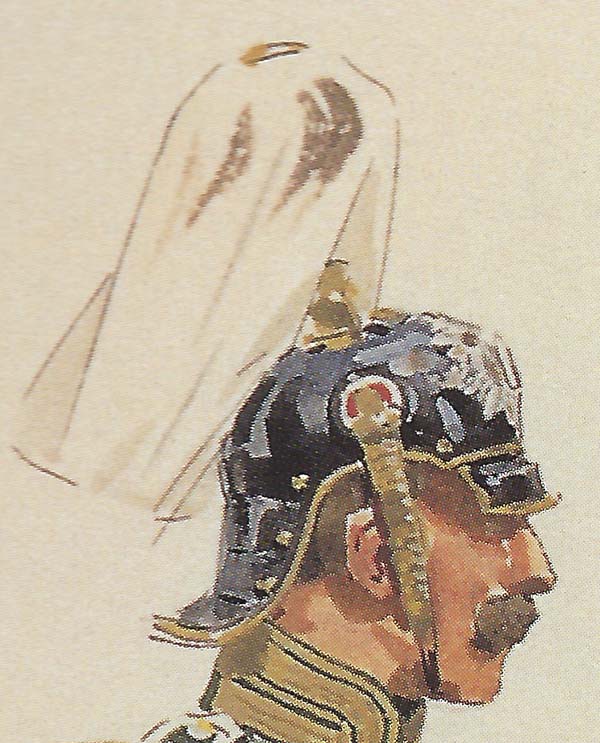
There are photographs of Major Frhr. Thumb von Neuburg found in the book “Unten den Fahnen der Alten Armee’ by Brackmann and Schmelzer. Especially the one on page 448 which is a blown up copy of the reservist picture on page 447. He is clearly wearing a blackened helmet. Not all of the pictures in that wonderful book are that clear some showing very very small reservists pictures of helmets that could be silver. Really tough to say but there are certainly a lot of pictures and no question about the Garde Star. You could actually buy a black helmet from a retailer as is shown by this excerpt of page 19 of the Neumann catalog.

Then there is this 1900 print by Knötel that also shows black helmets. As you can see from the establishment directive there were only 3 detachments originally in 1895. 4 are listed in the 1897 uniform regulatiion. This grew to 5 detachments by 1899 when the name changed to squadrons. Bavaria and Saxony also possessed Jäger zu Pferde squadrons until 1905, at which time they were assimilated into the 7th Chevauleger and 21st Uhlan regiments.
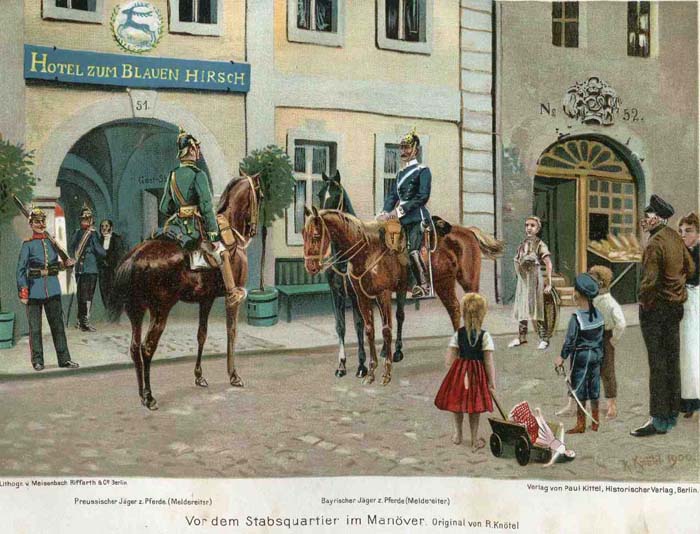
Senior ranked officers from Brigdekommandeurand higher in command of troops had a mounted staff orderly known as Stabsordonnanzen at their disposal. I know of no optical method to distinguish the helmets between them and the Meldereiter however, there were no officers uniformed as Stabsordannanzen.
Now where this helmet falls short in the explanation department is that it is all silver. Regardless of how the pictures might look in tint every single thing is silver. The chin scales, the spike, the spike base, the shell, the trim, the star. Everything. The star is original to the helmet and you can see the attachments in the pictures below. So what is it?
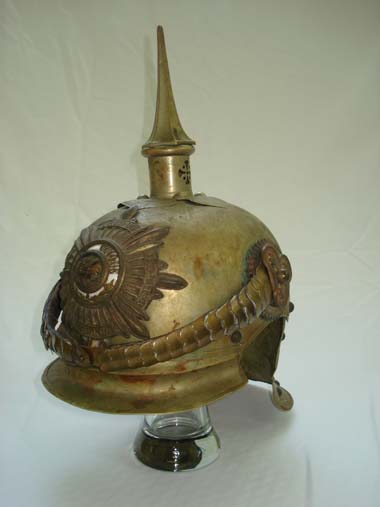
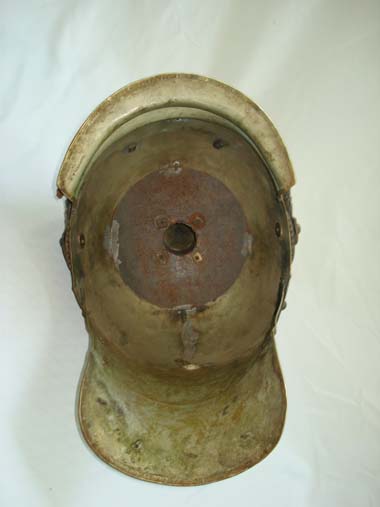
The regulation that formed this unit also formed the detachment for the I Army Corps. They also wore a blackened. helmet. Here is a picture of an enlisted man from that unit.. You can see what a blackened helmet looks like in a picture. Very clear.

Here is another picture from the same timeframe of a gentleman in the same unit. This one happens to be a one-year volunteer.
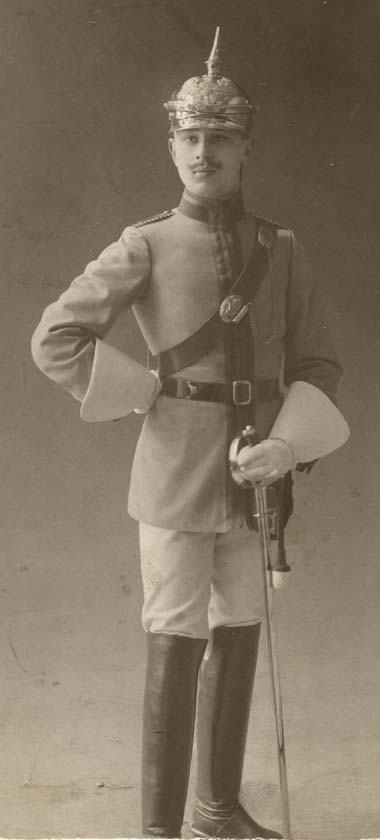
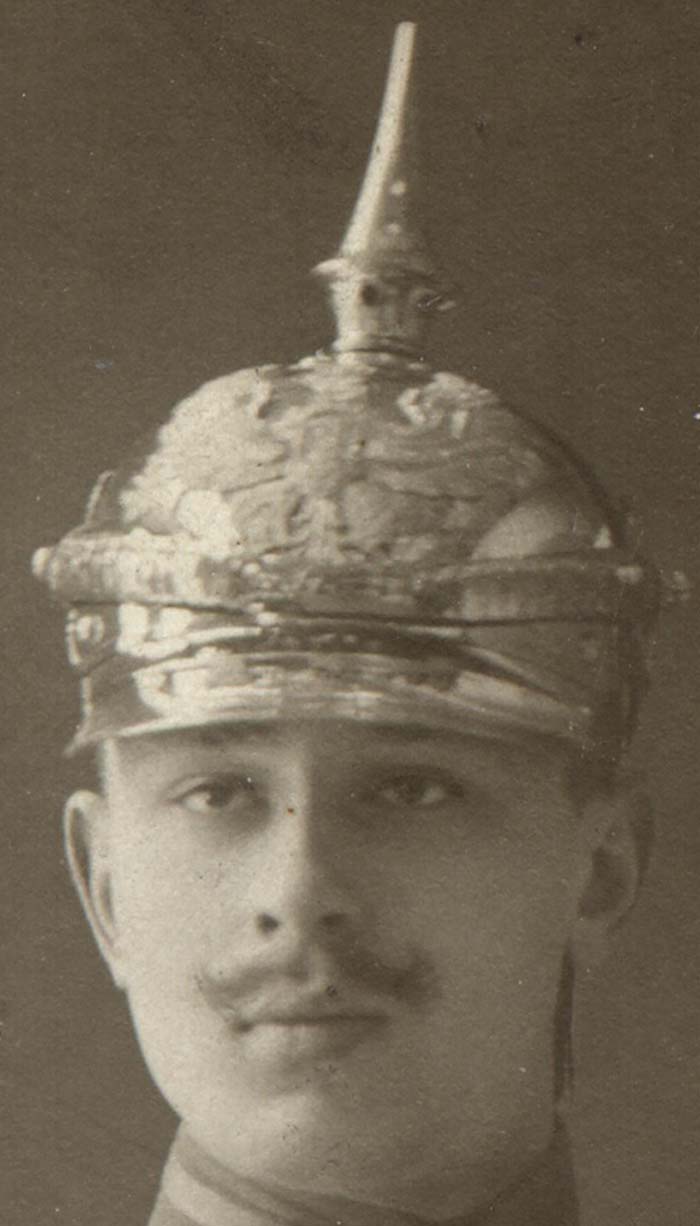
Now wait a minute this one is silver. Actually the Germans called it nickeled. So there are pictures with blackened helmets and pictures with nickel helmets. But the regulation seems very clear–black. So what is this?
A nickel helmet is shown clearly on page 480 in the book “Unten den Fahnen der Alten Armee’ by Brackmann and Schmelzer. Picture 559 has the caption: “the so-called Fähnrickshelm differ from those of the enlisted men in that it had two pronounced steps in the visor and through its nickel plated body.” If you compare the visors of the nickel picture with that of the black picture you can see the difference. All of the metal parts on this helmet in the picture are silver. It has an enlisted spike. Randy’s has an officer spike and Kleebatten. Picture 538 has a caption: “According to dress regulation, the helmet was supposed to be frosted black. However, often it was polished and nickel plated.”
The metal furniture was gold in some and silver in others. But the consistent reality is that black and the nickel helmets existed side-by-side despite the limitation of the regulation. In addition, there were huge timing issues. The easiest of which to see are the uniforms of the XV Army Corps. In the early years the Meldereiters of this Army Corps wore a distinctive Husar looking uniform. This was eliminated legally in 1897. So one would expect not to see this uniform far in the future. However there are at least 2 dated pictures in the book “Unten den Fahnen der Alten Armee’ by Brackmann and Schmelzer that show that uniform in use in 1902 and 1904. It seems as though for certain ceremonial reasons the old uniform would be trotted out. It is easy to extrapolate that the same thing could possibly be attributed to the Garde Corps.
It is not clear who could have these nickel helmets or when they could be worn. It seems to be either full dress parade–walking out uniform but definitely private purchase. Clearly officers had them as well as some other ranks. My best guess on Randy’s helmet is that it is one of these nickel plated helmets from the Garde Corps. Set up for a full officer and probably dated before 1905. There seems to be a lack of direct photographic evidence for that specific Army Corps. However, by using photographs of other Army Corps there is no reason to believe that these did not exist in the Garde. In fact there is solid proof. Below is an excerpt from page 20 of the Neumann catalog. If you look at item 247 you can see this retailer offered renovation of Randy’s type helmet with a nickel body.

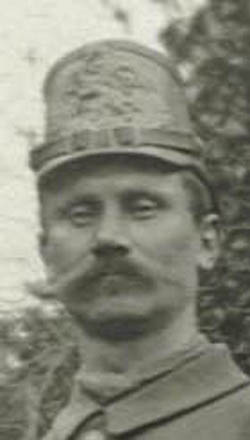
Hessian Shako
Hessian Shako
Joeseph P. Robinson
| There are no answers that I know of in this monologue. So if you have an opinion or any other information please share it. This is just confusing and I thought I would share some of my confusion and try to explain it. Quick conventional wisdom says that really there were no Hessian shakos during the war and that anyone encountered is Landsturm may be Landwehr but any shako quickly went away. |
|
|
| This is the oldest picture I have of a Hessian shako.The general consensus was that this was for the train organization. If indeed this is from the German Austrian wartime around 1866 it is not clear to me what size organization that was. I have the official history of the war written by the great general staff and diagrams of the order of battle. However, it seems to be entirely silent on this point. Larcade in volume 2 indicates that a company sized organization was originally founded in 1869. This picture has a Hessian Wappen on the shako. Even though there is a lack of pictures there seems to be a significant difference between infantry models which have some sort of cross, and train models which have the Hessian Wappen. |
| The standard Hessian Infantry shako (in the photo)is quite a bit different than the standard 1860 mode (below) l. The back visor seems to be exaggerated. An air vent looks to be present. Also, the Landwehr cross looks to be much larger than the standard 50 mm. According to at least one source this is an 1856 model but it has squared edges on the front visor.. (Jaeger and Schutzen, Kinna and Moss, Bellona Publications, Argus Books,Watford Hers., 1977.pg.4) In the reference the German Infantry by Herr and Nguyen, volume 2 p. 746, there is a picture of an 1854 model but it also has squared edges on the front visor. |
|
|
| Larcade explained that the Hesse Kassel Jaeger Battalion became Jaeger Battalion 11 so that is no big confusion. However, he goes on to state on page 129 that there were two Jaeger battalions that wore shako from Hesse Darmstadt. These were supposed to wear a model 1860 with a scaled down or reduced version of the Prussian Wappen. It is not clear to me what exactly that is. In volume 2 he says that Landwehr and Landsturm are dressed as infantry. These guys did not wear a pickelhaube so I am not sure what he meant. |
| Prussian Landwehr were authorized helmets in 1899. In October 1899 through an AKO the Landwehr was allowed to wear helmets. However, they were instructed to maintain the shakos. Larcade Volume 2 which is about mounted troops talks about the infantry of Hesse wearing a pickelhaube starting in 1903. My poor French language skills seem to indicate that the shako went away for the train units also in 1903. |
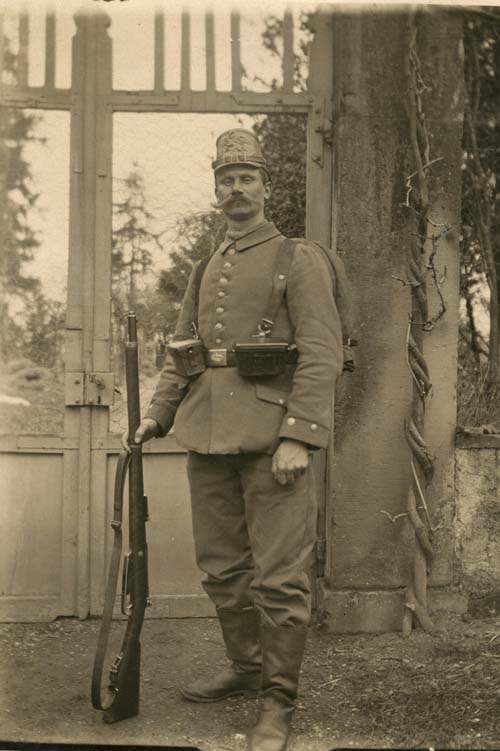 |
| When mobilization began in 1914 the shakos that had been stored in 1899 were pulled out of the closet. There was a significant expansion of all elements under arms including reserves, Landwehr, Landsturm and train units. Some soldiers in 1914 received the shako. The question becomes, to what end? Is there a way to recognize the function of the soldier wearing a shako from the picture alone? It seems as though Hessen followed a different drummer than other units in the Prussian army. |
| This individual like the picture above, is also wearing a shako with a Hessian Wappen. Are these two individuals in a train unit? Why is he wearing a JR115 uniform? Is this an M1860 type shako? |
|
|
| This from Louis Mila’s “Uniformirungs-Liste” of 1881. Provided by Glenn Jewison.
|
| Here is another picture of an individual wearing a Hessian Infantry shako however, wearing the uniform of the active unit JR 115. You can see the bottom of the cipher on his shoulder strap. If this individual was in the Landsturm there would be nothing on the shoulder strap. There is a notation on page 525 (volume 1 of Kraus) about I/LJR 116 wearing the uniform of JR 115. |
| This from the Dress Regulations of 1905 provided by Glenn Jewison.
|
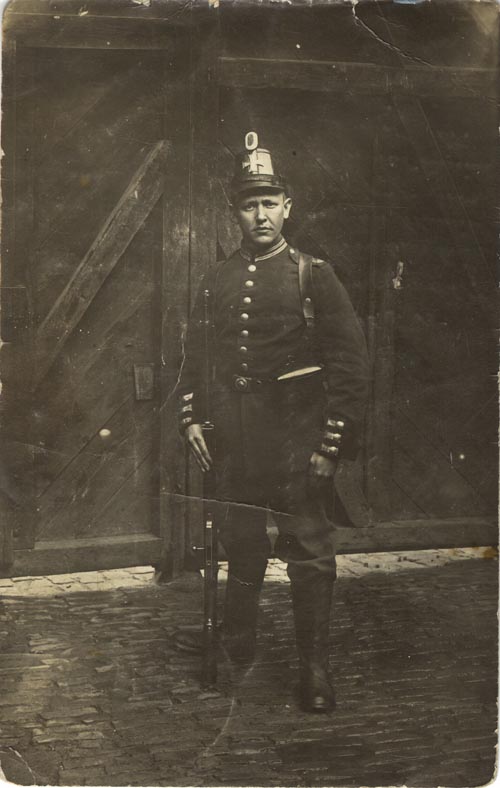 |
| Here is another picture with a standard Hessian shako that is clearly in the Landsturm based on the brigade designation. The brigade had 2 Bezirkscommandos, Gießen and Friedberg both in Hesse Darmstadt. |
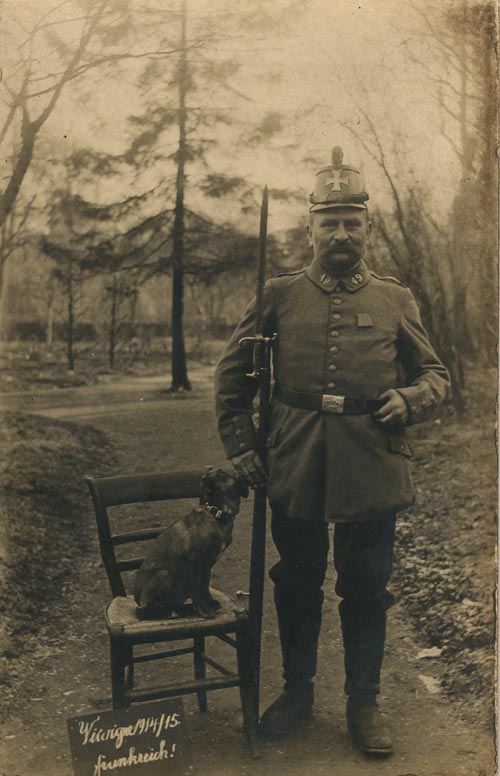 |
| Here is another picture with a standard Hessian shako and the number 116 on a shoulder straps. Is he from the Landwehr? The reserve infantry Regiment? Both regiments are from the Hesse Darmstadt area. |
|
|
| Here is another picture of RJR 116 wearing the uniform of JR 115. Notice the mix of Hessian and Prussian Wappen. |
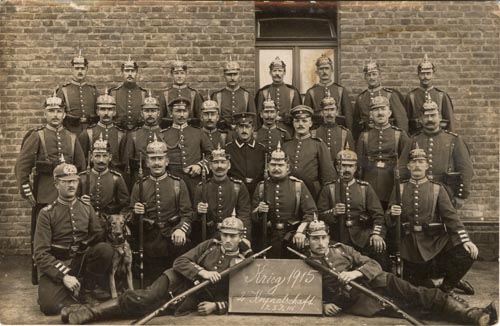 |
| Here is another picture of an individual with what seems to be a model 1860 Prussian type shako. He clearly has the number 57 on his shoulder boards. This guy can only be from the reserve infantry Regiment as a Landwehr Regiment of that number did not exist at the time the card was written. Clearly Hessian belt buckle.
Reserve-Infanterie-Regiment Nr. 57 (+MG.-Kp.) (Only two battalions) Is this near Hessen? No. |
|
|
| This from the Trawnik collection. Shows Landsturm, Litzen and Hessian wappen! Not train. |
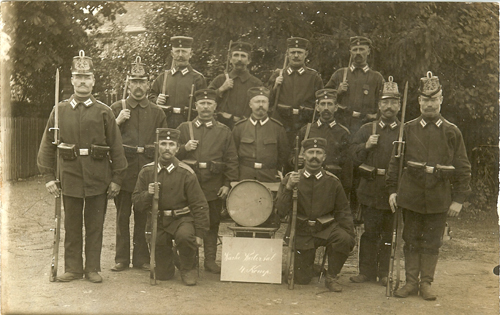 |
|
|
| Not a shako. However, this is a fantastic example. The unit is clearly identified from the collar insignia. Ldst.-I.-Ers.-Btl. Dillenburg (XVIII. 41). So we know exactly the city where the soldiers served and he has a Hessian pickelhaube. The problem is the city is not in Hesse. It is not in what is considered Ober Hesse. It is in fact located in the old Duchy of Nassau. You can see by the map below that Hesse is on the far right. There is a Prussian enclave around the city of Wetzlar and Dillenburg is far to the west. Why is he wearing this helmet??
|
| So what does this all mean? It seems obvious that in the case of Hesse shako were used for other purposes besides Landwehr and the Landsturm. There seems to be some sort of confusion about brigade boundaries and the boundaries of the political entity of Hesse Darmstadt. Some of these reserve units and brigades seem to be outside of what one would consider Hessen Darmstadt. Therefore, it seems as though people thought of themselves as Hessian even though they were no longer citizens of that state. There was doubtless Hessian wappen/buckles used outside of the state. There are lots of questions and no clear answers. |
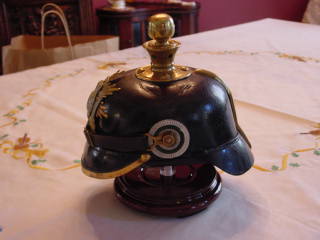
Helmet Stands
Helmet Stands
Joseph P Robinson
There are TONS of options to use as helmet stands. Antique spools are sold all over eBay. Styrofoam heads abound but I think look poor. Coffee cans, candles and other homemade items can work and can be inexpensive. The idea is two fold.
1. KEEP THE HELMET FROM RESTING ON ITS 100 YEAR OLD STITCHES
2. MAKE THE HELMET KEEP ITS SHAPE/FORM
3. LOOK GOOD
There has been a lot of comments about foam in helmets. The foam is petroleum based and can react with leather or any organic matter. The question is how inert the foam is. Some foam reacts in 3-5 years, some not in a long long time, and some very quickly. Watch to see if the foam turns brown as oxidation is the key. If in doubt or to be safe you can cover the foam with linen or (gasp) tin foil.
Most stands fail somewhere. This is what I use. I buy these. A plastic base. Plastic rod of any desired length. A Styrofoam half head. I think heads fail #3 above.
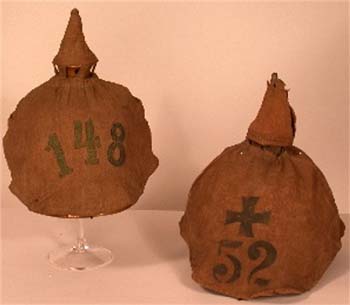
Helmet Covers – Uberzug
Helmet Covers – Uberzug
Joe Robinson
| I have been tracking some information on Uberzugs for a while. There are many holes in this article and research. It is intended to be a continuation of the research in references. As was once said in a recent book by Trawnik, no book can get it all without mistakes or holes. I like to think of it as standing inside the fire, at least we are making an attempt to clarify. | ||
| The original covers were allegedly authorized by an AKO dated 8 May 1884. The purpose of this was to have some way of marking sides during maneuvers. The solution that was used was to equip one side of the maneuvers with a white cloth cover. There is an example of this cover located in the museum in Rastatt. |
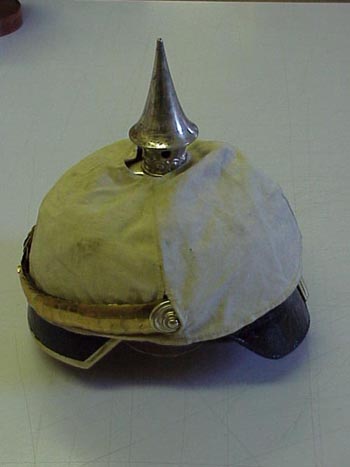 |
|
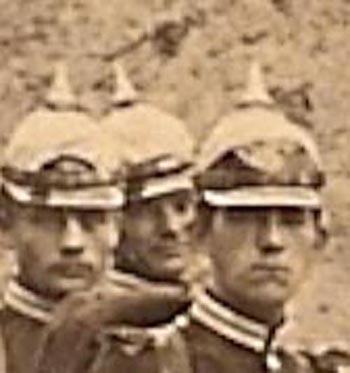 |
The problem is that there was no AKO in 1884 that authorized these Uberzugs. Therefore, I do not know whether the authorization extended throughout the army, just for the Kaiser maneuver, or only for a specific group. They surely existed, and they surely were for maneuver purposes, but there was no AKO. | |
| On 17 May 1892, there was supposedly an AKO that authorized the creation of an Uberzug. It does not however exist. This would be the Uberzug, as is generally known. There were some color changes to the body color as the probe items improved, and at this time there are no markings or unit designations. This new style cover was made of gray green cloth that covered the entire helmet to include the visors. It was used by all branches of the German army. The cloth cover used for leather pattern spiked helmets was shaped in the form of the helmet. The rounded front and back halves were sewn together along each side. The top had a hole through which the spike protruded a cone shape (or round shape for artillery units) bag that was linked to the cloth body by four cloth bands covered the helmet spike. Issue covers were fitted to the edge of the front and rear visor with five metal hooks, three front, and two in the back. These fit over the visors edge. It was very common to find the issue marks on a cover similar to helmet depot marks. Cover hooks came in many styles. Hooks were attached with separate cloth and was attached to the helmet. Hooks were generally made of white metal or brass. Most Bavarian hooks were made of steel, lacquered black and were therefore magnetic. There were generally five hooks for issue Uberzug, with the exception of mounted troops that had four hooks.Slits appeared along the rear spine of some for ventilation starting in 1895. So somewhere between 1892 and 1897 soldiers started wearing unmarked Uberzugs on a regular basis. | 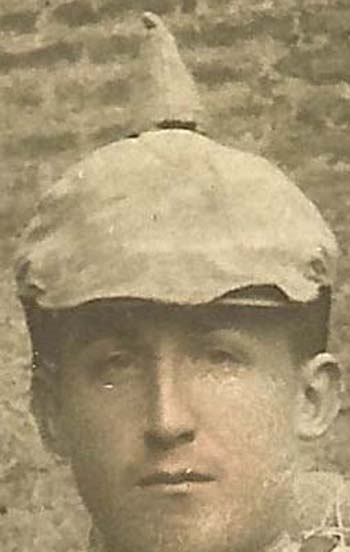 |
|
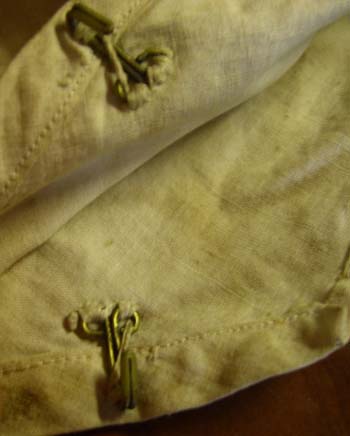 |
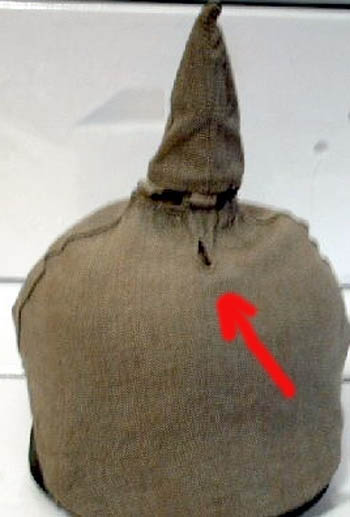 |
|
| There seemed to be a large number of different ways that hooks were attached to the cover. These methods seem to have changed with time and corps areas.
|
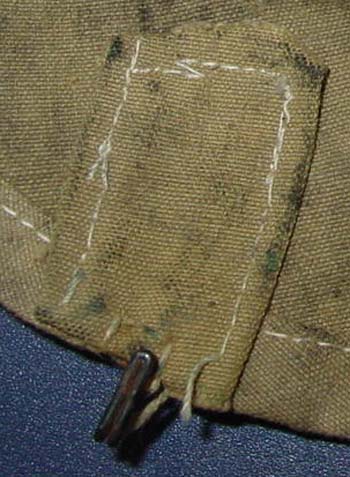 |
|
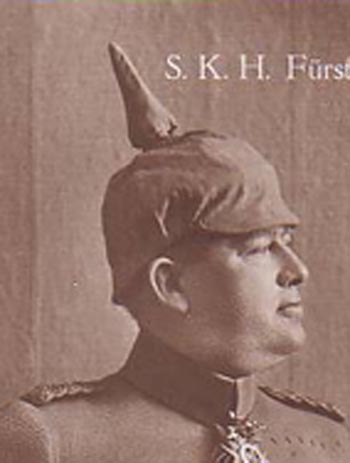 |
Most private purchase covers were available and were form fitted. No hooks were used but rather the visors were fitted into hardened pockets. A common marking found on private purchase style covers or the letters DRP, which stands for Deutsches Reich Patent or DRGM, Deutsches Reichsgebrauchsmuster. Some private purchase helmet covers had hooks. Remember at this time there were no numbers or markings on the outside of the Uberzug.
|
|
| There was allegedly another AKO of 28 January 1897 that supposedly authorized numbers and letters to be placed on the Uberzug. A copy of the AKO is included to the right. Nothing is mentioned in the AKO about letters or landwehr crosses. It does not detail the color of the Uberzug; however it does authorize numbers to be worn by line infantry regiments. Regiments of the Prussian guard, Grenadier Regiment 89 from Mecklenburg, the Bavarian Lieb Guard Infantry Regiment, and the 109th Baden Guard Regiment reportedly did not wear numbers on their helmet covers but it is not specific in the AKO.This special “rule” for guard units is oft repeated in references, does not hold up to scrutiny and is not part of the AKO.
There are many wartime pictures of the 109 Regiment with numbered helmet covers and at least one of the 89th. I have a Bavarian Lieb Guard picture with a unique private purchase cover containing the unit’s symbol.
|
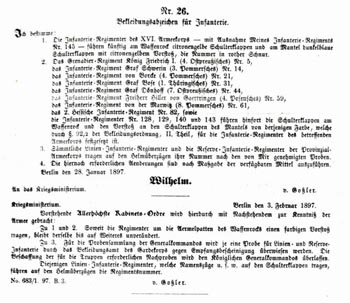
This example from the Peault collection shows numerous problems with our understanding of the AKO and Probe system. Not only is this cover from JR 109 matched to a similar helmet. But the numbers are stenciled instead of cloth. Many sources state emphatically that all red numbers are cloth. The misunderstandings seem to trace all the way back to the 1930s, where an article by Doctor Klietmann and Pietsch in a renowned journal seems to have made several errors in fact. Nonetheless this is still somewhat controversial as modern references continue to cite Pietsch in error, and others consider this to be an a priori argument based on a lack of understanding of Probe during mobilization. The opinion of this author is that the existence of pictures and examples provide prima facie evidence that the selected Probe examples did not always follow the AKO. This becomes even more obvious if the critic were to consider the AKO that gives Probe guidance on 3 February1897. |
|
 |
||
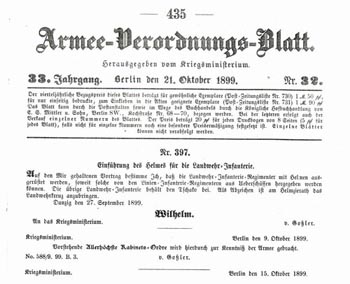 |
The Uberzug was marked clearly with the regimental number for infantry regiments and reserve infantry regiments starting in 1897. There is no specific mention of other branches or helmet types. The assumption is that they were authorized at the same time. There is a general understanding that the letter R was used for reserve units. Without reserve units existing in peacetime there is no need for a helmet cover. There are many questions about what is on the helmet of landwehr or Landsturm. We have to remember that Landsturm did not have a helmet authorized and therefore needed no Uberzug. The landwehr did not have a helmet authorized until September 1899. The “L” was authorized first in Feb. 1900. This is in direct contravention of the 1930s article by Doctor Klietmann and Pietsch which attributed this change to the AKO of 28 January 1897. | |
 |
||
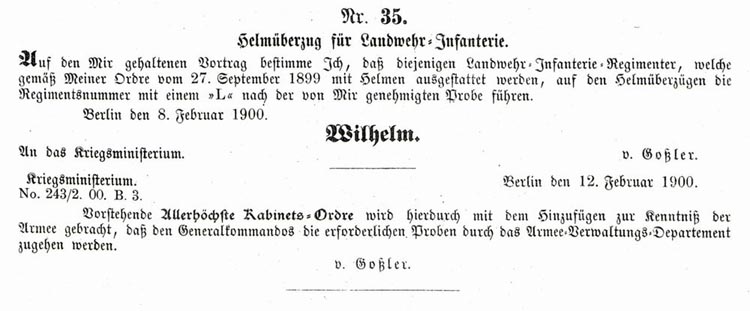 |
||
 |
From 1897 until 1914 red numbers were in vogue. These numbers were either sewn on with some sort of red cloth or stenciled with paint. Remember that reserve units and Landwehr units existed only for a short time and not in all regiments. These units appeared to get the hand-me-down’s. Here are two different examples of private purchase JR 119 covers. On the one below, you can clearly see the square corners of a Württemberg officer’s Uberzug. and a patch that covered up the old JR 123 markings. | |
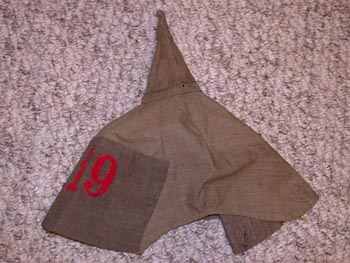 |
 |
|
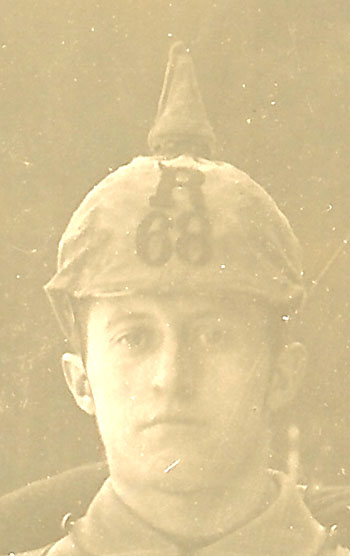 |
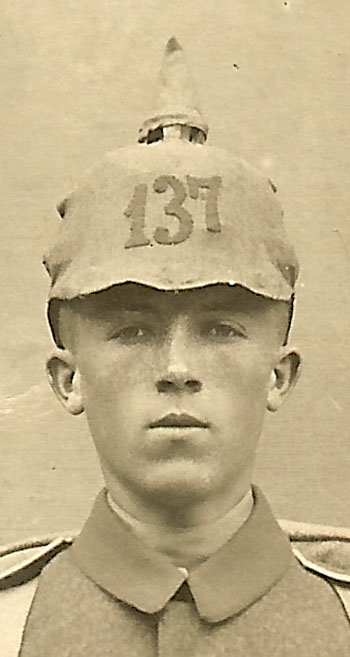 |
|
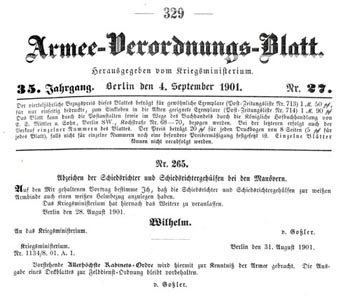 |
In 1901 umpires at maneuvers were authorized white armbands and helmet covers. The picture below shows the maneuvers of IX Corps in 1900. Clearly the white armbands were used in this instance prior to the AKO. |
|
 |
||
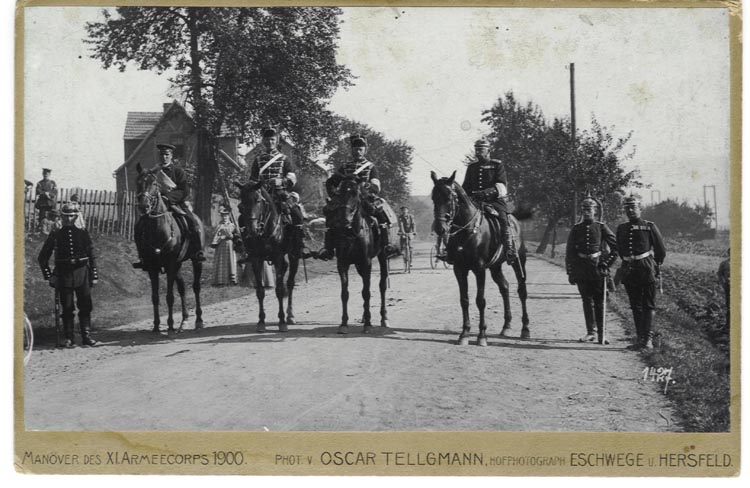 |
||
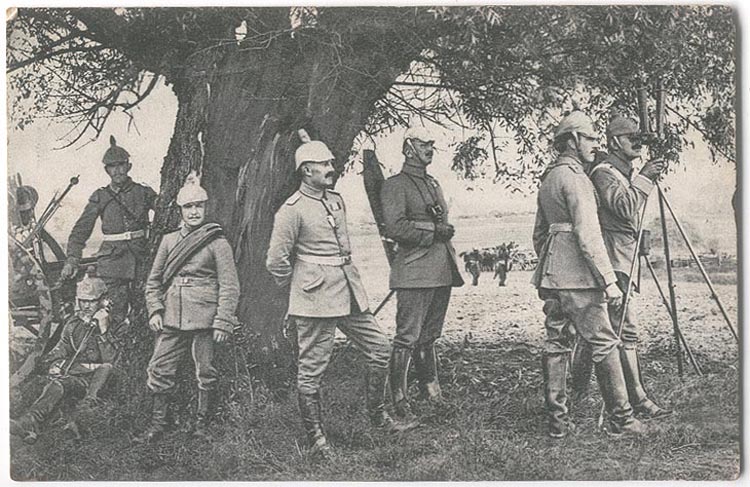
|
||
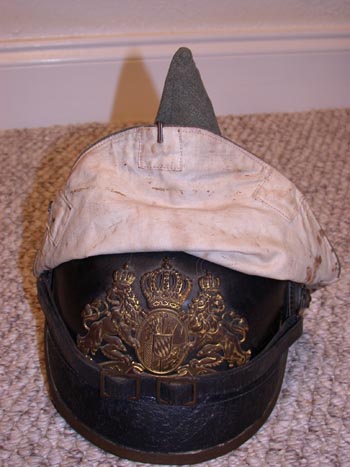 |
This Bavarian is reversible with an umpire whiteside and a normal, wear greenside. There are two sets of hooks one for each direction. |
|
| Maneuver bands were provided for the participants in the Kaiser maneuver in 1908. This denoted the “red team” and was so successful that it was extended to the entire army in 1909.
|
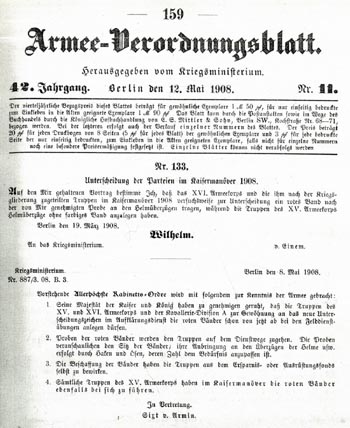 |
|
 |
||
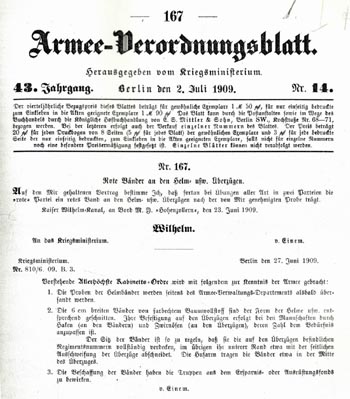 |
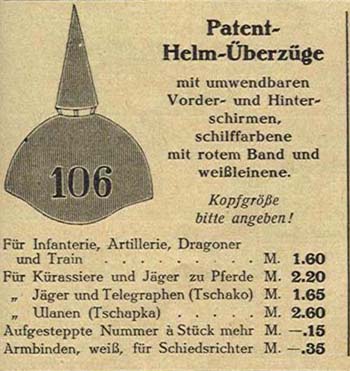 |
|
 |
||
| So for maneuvers you had one team with an uncolored Uberzug, the red team with a red band around the Uberzug, and umpires in a white Uberzug. | 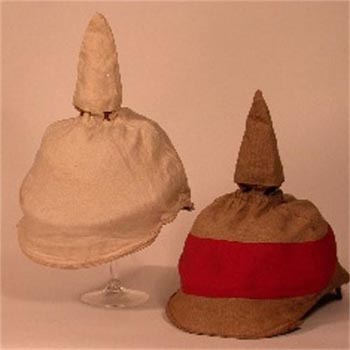 |
|
 |
The red bands came in two distinct types. They were either permanently attached to the cover or applied temporarily through a separate loose band. Some of the private purchase helmet covers were reversible and had the band sewn on one side. The example below has hooks to attach the maneuver band to the helmet cover. It connected to small threads on the outside of the cover.
|
|
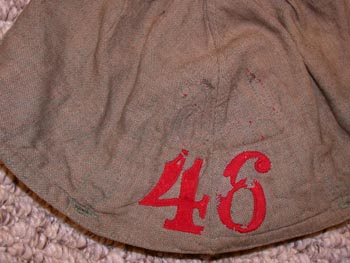 |
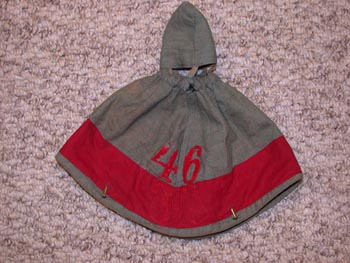 |
|
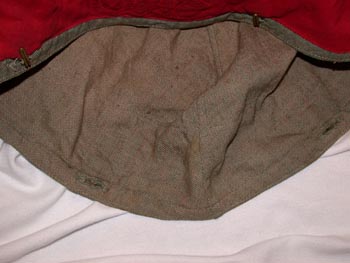 |
This example of FAR 46 comes from the Trawnik collection and is a private purchase cover that has hooks. While the maneuver band is built-in and reversible, there are buttonhole type adaptions that you can see to the left that allows the hooks themselves to be reversible. | |
| Red bands applied to other types of head gear. | 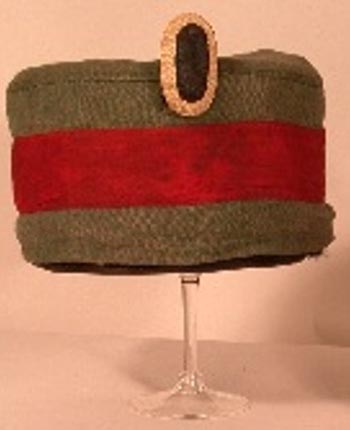 |
|
|
WAR
|
||
|
|
In addition to the massive mobilization required in August 1914, almost immediately the red numbers fell out of favor and were replaced by green numbers. This happened so quickly that it is worth putting it into perspective. The map on the left reprinted with permission of the West Point history department shows the advance into Belgian with the German red lines marked clearly on the 17th. They had barely entered Belgian at all. The left most red arrow is from the 20th of August at the city of Brussels. The AKO below changed the numbers to green on 15 August 1914 and the red eliminated on 19 August 1914. The driving force was to eliminate the red numbers gave great target locations and intelligence information at a distance to the enemy. | |
 |
||
| Red numbers had to be removed. Of course this did not happen instantly and it was left to lower headquarters to determine how to do it. It is not clear to me how this was done nor how fast. Were patches used to cover red numbers??? |
 |
|
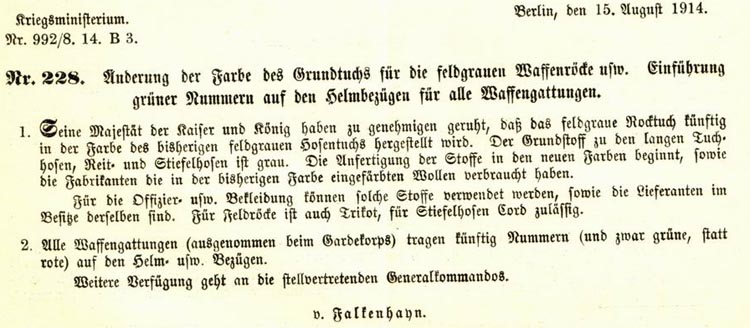 |
||
|
During this short period of time between the start of the war and the onset of green numbers, there were some comical adaptations to remove the red numbers. The helmets shown below actually have the numbers cut out and patch sewn over the hole.
|
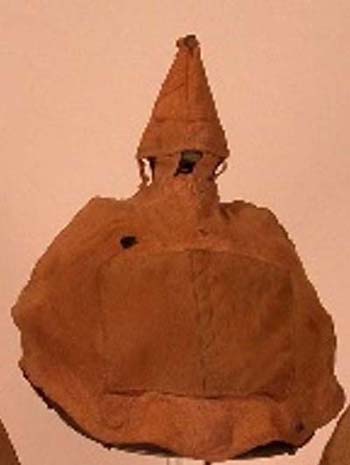 |
|
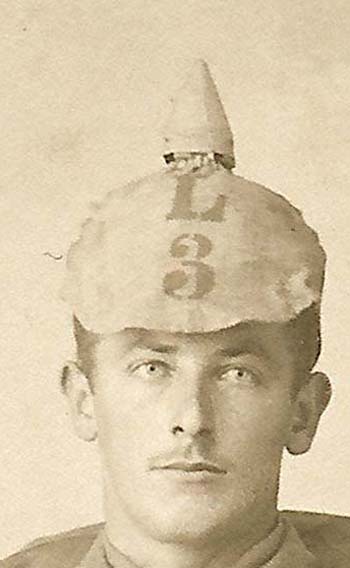 |
Green numbers replaced red as quickly as possible. while green cloth was optimal in some cases numbers were stenciled or even hand painted on. helmet covers with green numbers, reserve helmet covers with green numbers and landwehr helmet covers with green numbers were abundant. Other types of troops to include artillery and pioneers also wore green numbers.
|
|
| A new kind of helmet cover showed up with the letter E on it. These were for the Ersatz Infantry Regiments. While this should be readily identifiable. It was in no way universally used. Pictures of Uberzugs with such a letter are relatively rare. Seems to me to be a Saxon thing. |  |
|
 |
Here you have two individuals from the same Ersatz unit that had different helmet covers. | |
| Here we have an ersatz unit with spikes on their helmets and some with long handled shovels and others not. Are they infantry or pioneer? There is an Ersatz Inf. Reg. 24….Saxon. |
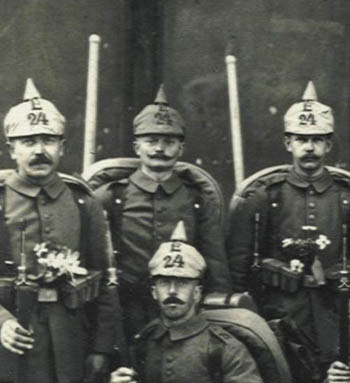 |
|
 |
Landsturm units on mobilization had their own headgear problems. The landsturm was originally supposed to have an oilskin watch cap. Initially there were problems getting this kind of headgear alone. Landsturm troops are often seen in older shakos. There were Uberzug’s for the watch caps. They do not seem to have been universally issued. | |
 |
||
| An AKO of 14 April 1915 seems to be the introduction of the Maltese cross for the Landsturm.
|
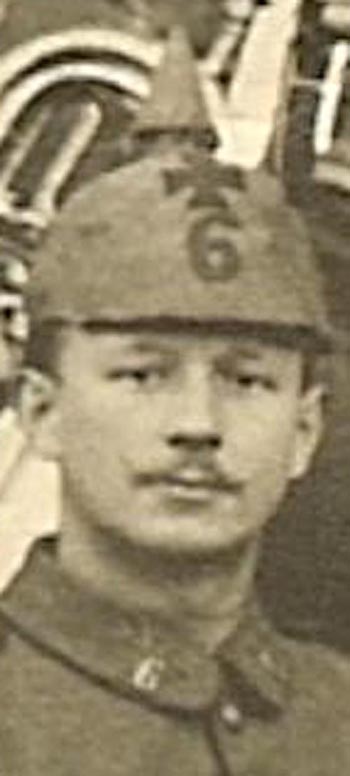 |
|
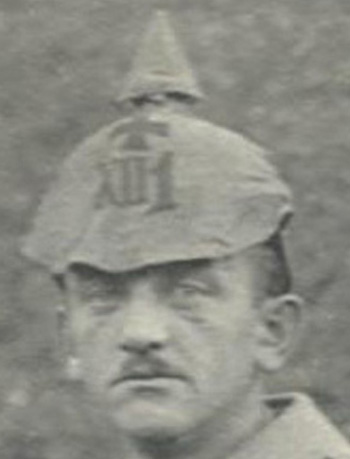 |
This added another layer of confusion to the identification of the Uberzug. Underneath the cross was supposed to be the battalion number. The identification of a battalion, without the identification of the corps makes photograph or artifact identification very difficult.
Landsturm units did not just jump into the cross. There are other landsturm units that have both the corps and the battalion identification on them. |
|
| Corps units that did not have battalion numbers assigned, in some cases, had only the corps on the Uberzug. | 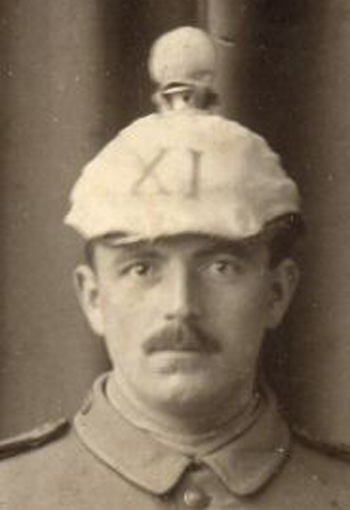 |
|
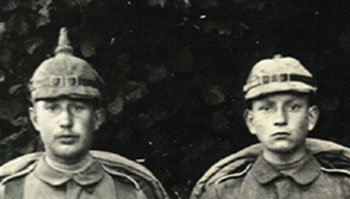 |
28 June 1915, an AKO allegedly changed the field cover to the M15 model with removable spike. This would make a lot of sense and corresponds allegedly to the changing of the helmet itself. The problem is that there was no AKO. This is called a two-part Uberzug. The two parts are: 1. the body with half moon shaped slits to allow the chin strap to pass through and be shown in the front. 2. A removable spike or ball cover that can be placed on the hemet and attached through an elastic type band. Conventional wisdom generally places any helmet strap visible over the cover as a two-part Uberzug. This also allowed the helmet to be worn without the spike and still be covered by the Uberzug. Paragraph 15 of the 21 September 1915 AKO requires all helmets and tschapskas to have removable tops. This is the only AKO in the 1915 AVB that relates to the M15 style helmet. Old myths die hard. | |
 |
||
| Landsturm units continue to wear Corps markings occasionally | 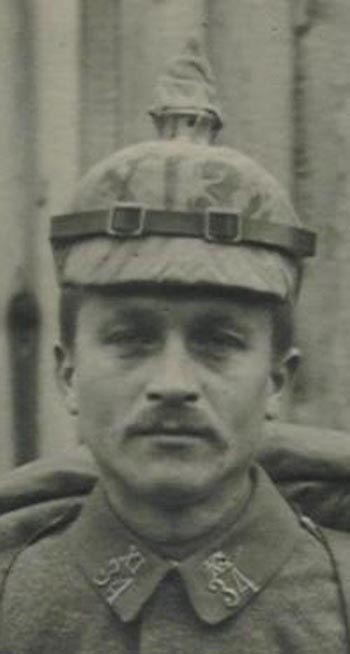 |
|
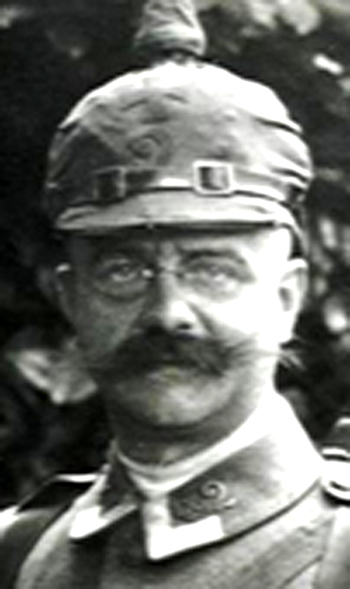 |
Sometimes it was the cross and the battalion number.
As you can see from the two pictures below, patches continued in existence with the two-piece Uberzug and the green numbers. |
|
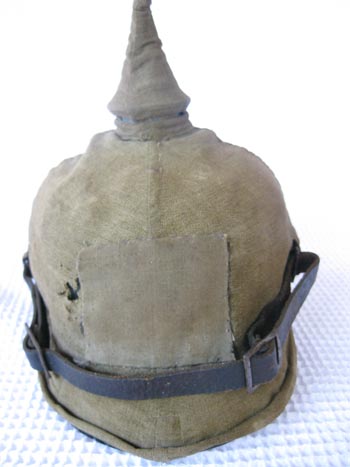 |
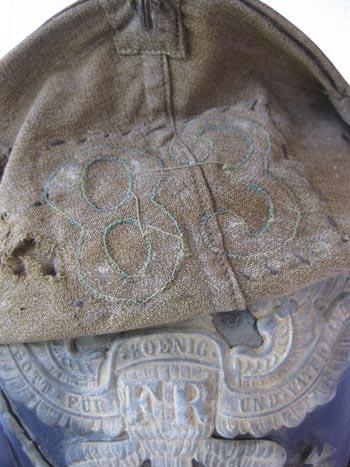 |
|
 |
||
| Helmet covers were often unmarked both in the one piece and two-piece Uberzug. There is an alleged AKO on 27 October 1916, which eliminated all of the numbers and letters except for the cross for Landsturm regiments. As you can see from AKO 735 there was no mention of Landsturm.
|
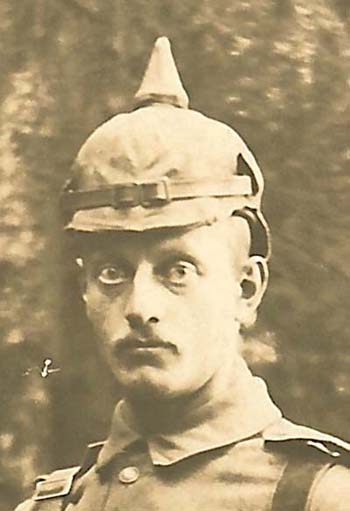 |
|
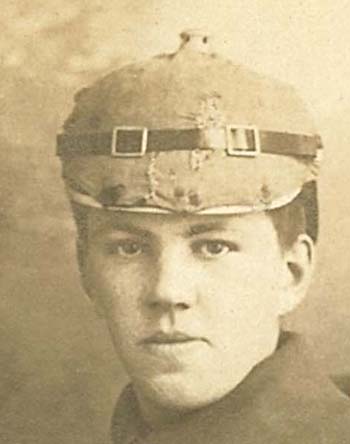 |
With helmets worn without the top, it is not clear whether the spike was never issued, removed before deployment, or stored at some central location. The hole on top of the helmet cover allowed the bayonet stud on the top of the helmet to protrude. You can see the location of the front hooks on this picture. | |
| Reportedly on 3 December 1914, an order from the commander of the 91st Reserve Infantry Regiment placed the green numbers on the back of the field covers. While this was a local order, it is a variation that was done by several units. This unbelievable example from the Trawnik collection shows such a number on the back. Unlike the 91st Reserve Infantry Regiment, this example is a two-part Uberzug used for the M15 helmet. This would indicate that the number on the back was still in use in some units in mid- 1915. You can see that the helmet cover is attached properly and that the ventilation slit is on the back just above the numbers.
Infanterie-Regiment von Horn (3. Rheinisches) Nr.29 Was in the 16th division throughout the war. They were on the Western Front for the entirety of 1914 to 1915. |
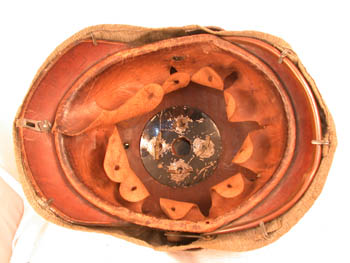 |
|
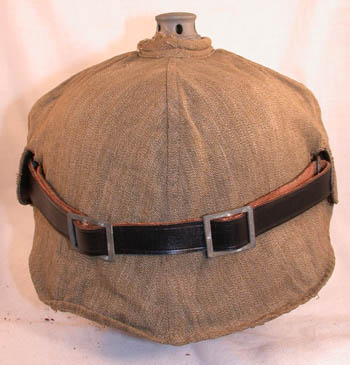 |
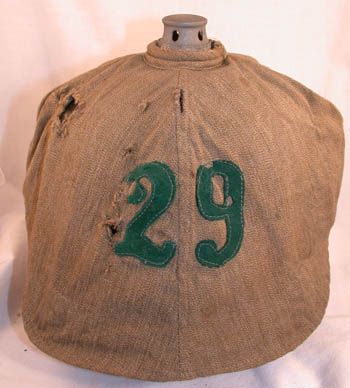 |
|
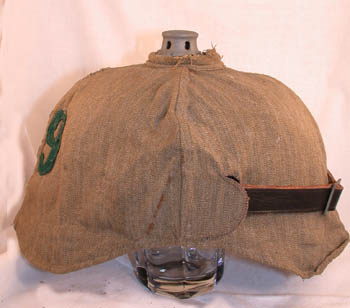 |
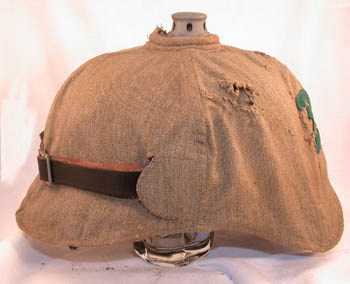 |
|
| Private purchase covers also adopted two piece construction. There were holes for chinscales as well as the standard cardboard slip-ons, however the spike was a separate peace and was totally removable. | 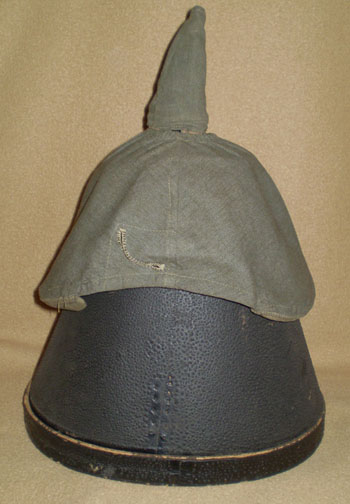 |
|
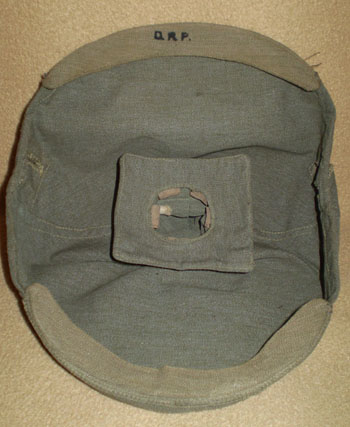 |
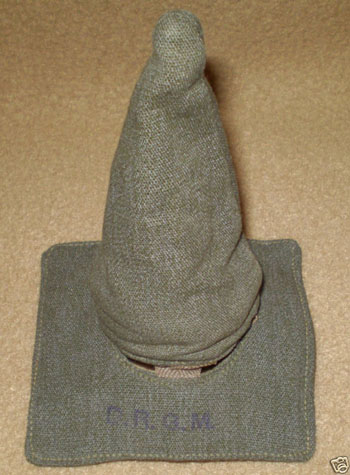 |
|
|
Don’t get comfortable there is always an anomaly
|
||
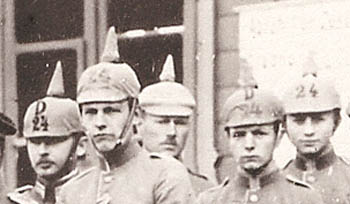 |
Here we have the letter D. used by the Hessian 24th Dragoons. | |
| This looks like an M15 helmet with the chinstrap. The sign then says 1914 and the backside of the card is dated 1914. A very careful search will find that the sides of this Uberzug are rolled up. | 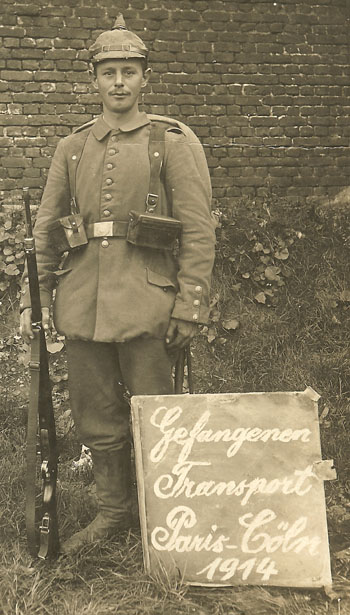 |
|
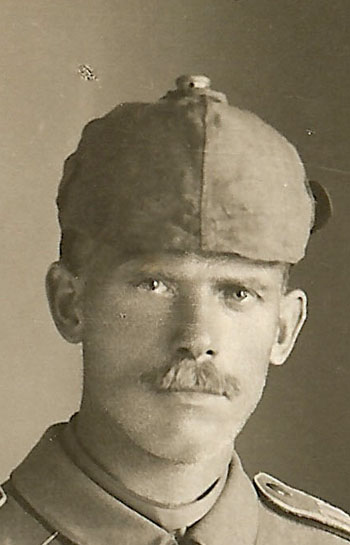 |
Clearly an M15 helmet, but where is the chinstrap? | |
| Three helmets from the same unit. one clearly landsturm one reading 256 and one with no markings. What is the possible connection? Why do they have guard litzen? | 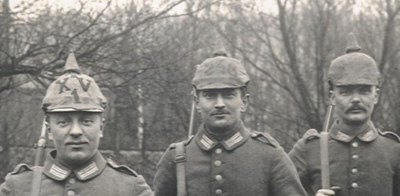 |
|
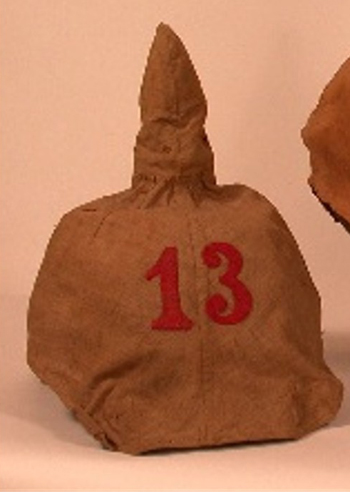 |
Look at the lack of ventilation for this model. There was apparently an early time when there were red numbers but the spike was not attached with four pieces of material. Clearly from a ventilation perspective, this is unacceptable. | |
| Here is another this time from the Loree Collection. Private purchase 61 Arty Uberzug. It has a reversable red band. What is the white cloth and hook for? Isn’t it shown in the picture from the Kostel collection below?
|
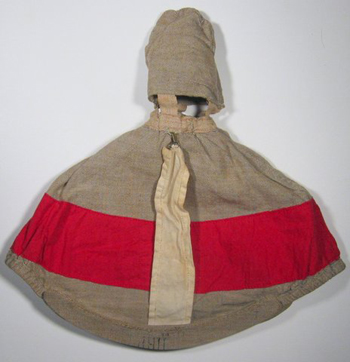 |
|
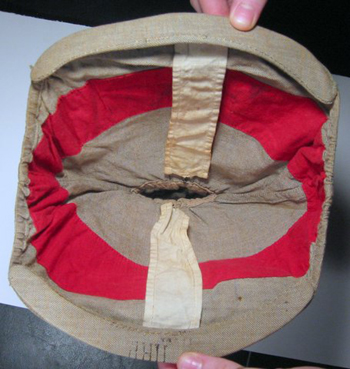 |
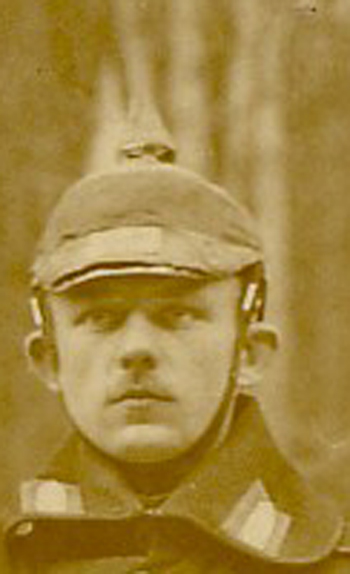 |
|
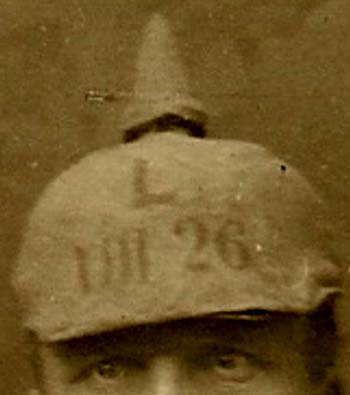 |
This one is quite unusual. This is a Landsturm soldier from Landsturm Infantry Regiment number 13. It had previously been 2nd Landsturm Infantry Ersatz Battalion Ulm. XIII14. Somehow when it was changed to an infantry regiment this Uberzug existed. it uses the unauthorized Landwehr “L” and the Landsturm unit identification. | |
| While letters and crosses were generally placed above the numbers in some rare cases like this picture of a RJR78 soldier from the Kostel collection they preceded the number. You can clearly see how the chin strap is lifted up around the cover not through slits.
There are also the extremely rare pictures of numbers and letters in reverse order.
|
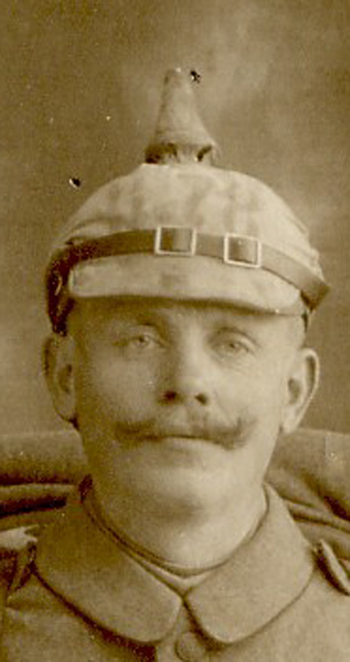 |
|
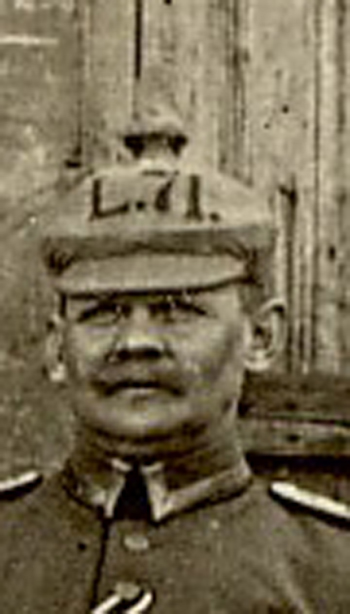 |
Landwehr soldiers also adopted the side treatment in rare cases. | |
| Here we have a Landsturm cross but no collar numbers and no numbers on the Uberzug | 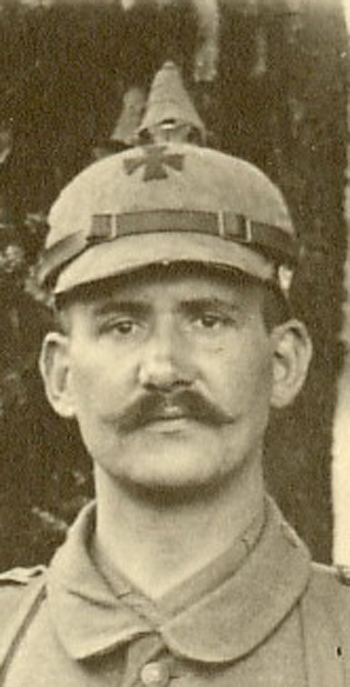 |
|
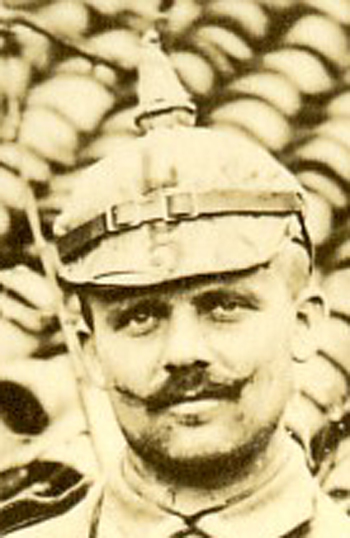 |
Here in this picture from the Kostel collection we get a low low placement of the number. | |
| In the realm of you can buy anything here is a Bavarian Uberzug with a really big number six. | 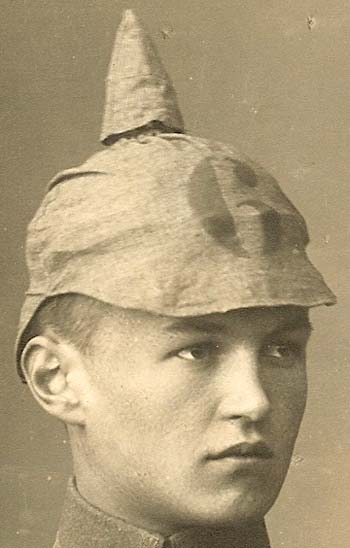 |
|
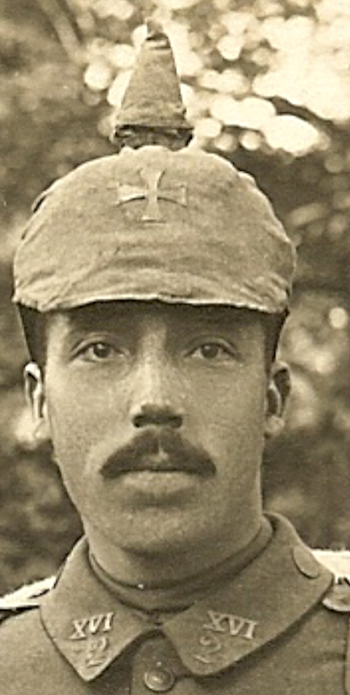 |
This gentleman wears a 50 mm metal Landwehr cross that is normally found on an oilskin cap. The picture below shows a 25 mm Landwehr cross.
|
|
| This gentleman is wearing his Uberzug inside out. You can see the hooks on the front visor, and he chose not to thread the chinstrap through the slits on the side. Was he hiding the numbers? | 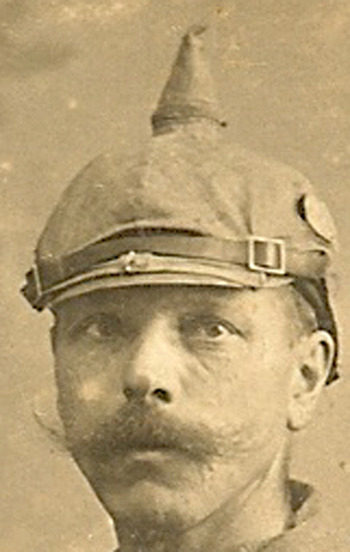 |
|
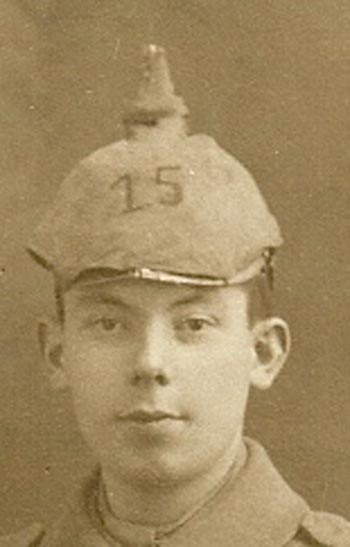 |
This cover has a makeshift number. It almost looks like it was put on with a magic marker. | |
| The numbers on this seem to be something other than red or green — white?A Belgian collector named Karel pointed this one out to me, which I subsequently bought. Yellow! There are air vents on the side as well as the Arabic number six on the left side. There are some black stampings on the back but I cannot decipher them.
For those who will say that the thread has faded from red, there are no cloth or thread markings. There is yellow paint for three different numbers. Why yellow? I have no idea. |
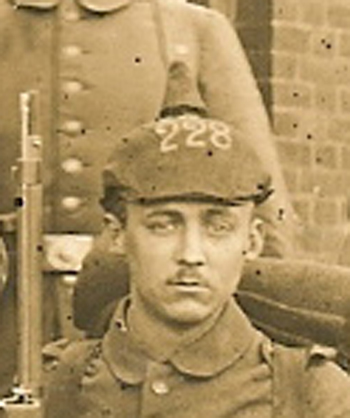 |
|
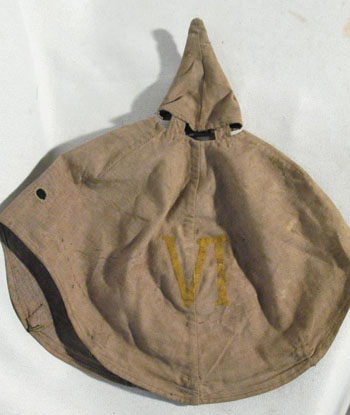 |
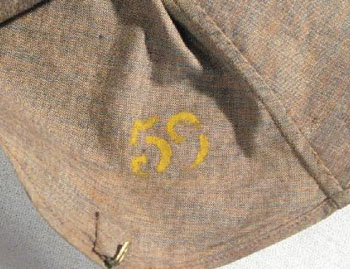 |
|
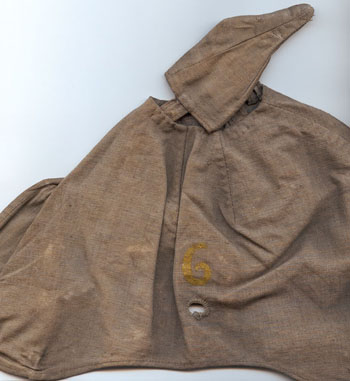 |
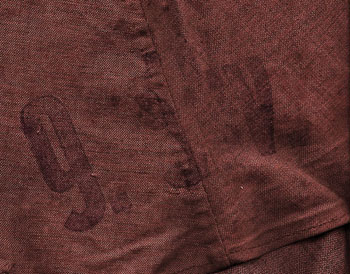 |
|
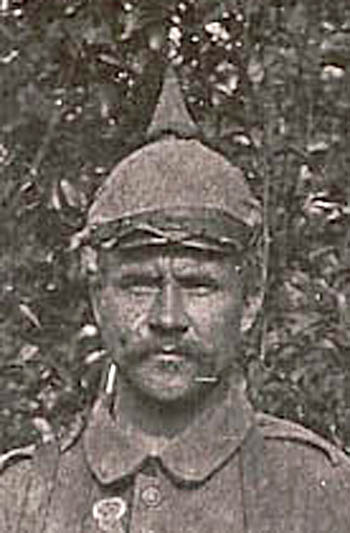 |
Looks like duct tape! | |
| Bavarian Leib Regiment–private purchase. I know of no other example. | 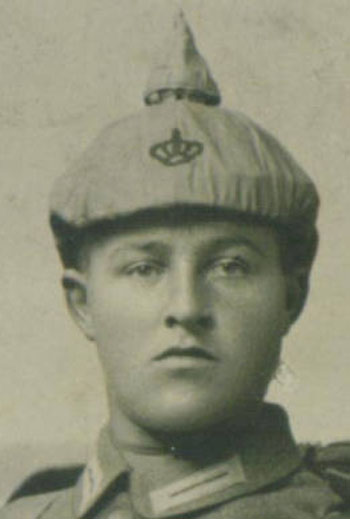 |
|
| The knowledge of use of the Uberzug on the shako seems far less developed then on the pickelhaube. At least one source says that pre-war shakos did not have numbers. They certainly did during the war. However, I cannot tell you when use started. I also cannot give a start date for the numbers. | Somehow they started the war with red numbers. When the change came down to green in August 1914 this was not adapted very quickly by the Jäger and apparently not at all by the other shako wearing troops. The Marines had and continued to wear blue numbers that were very large. Notice the unique number one below.. | |
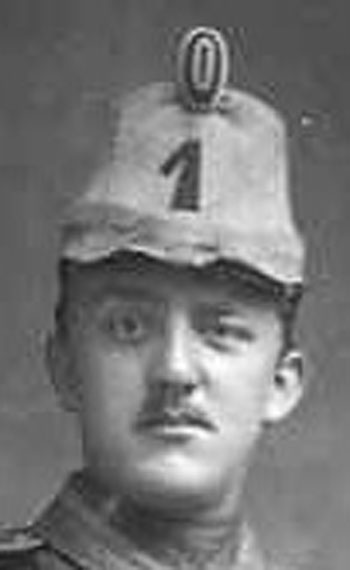 |
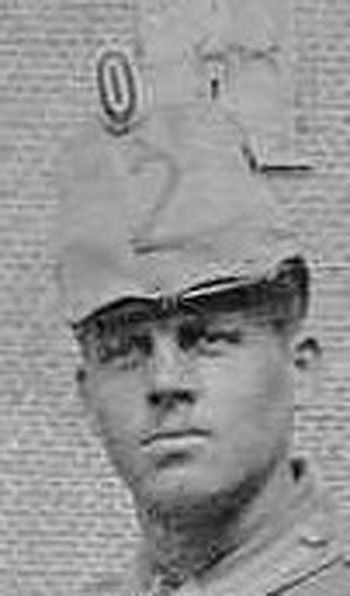 |
|
| There seems to be some confusion about the use of numbers and battalion or regimental designation. While I have some data, I do not know enough yet. A difference between Arabic and Roman numerals??? According to an older article the M60 type shako that came from the Landwehr and was used extensively by the Landsturm was worn without an Uberzug.
|
 |
|
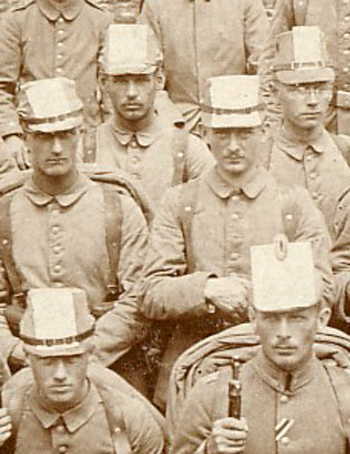 |
Also Security minded the Shako clad troops in this picture covered their unit identification with paper!
|
|
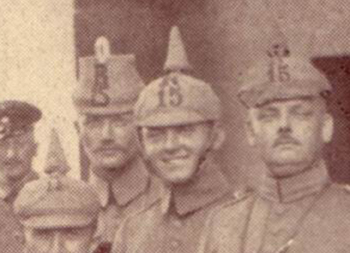 |
The use of numbers is also confusing on Shakos. This picture of the officers of RIR15 includes one member wearing the shako of his original unit. | |
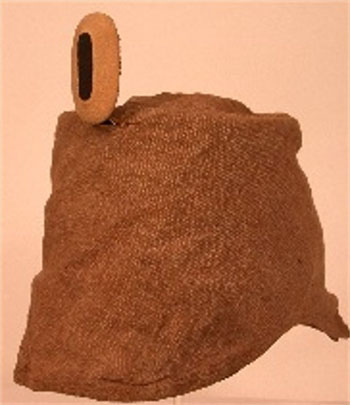 |
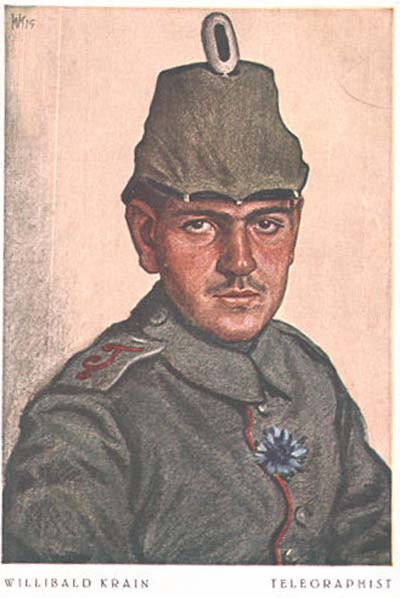 |
|
| Similar to the example above almost all of these covers were in one piece with no holes or the chin strap. However, as you can see from the example below there were some examples with the ear holes. | ||
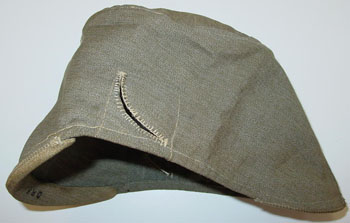 |
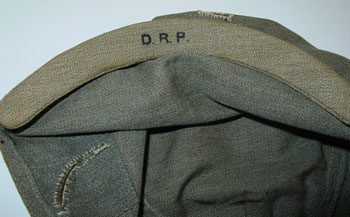 |
|
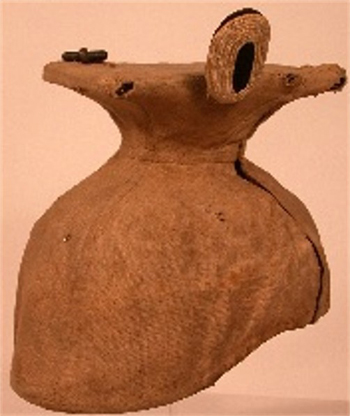 |
||
 |
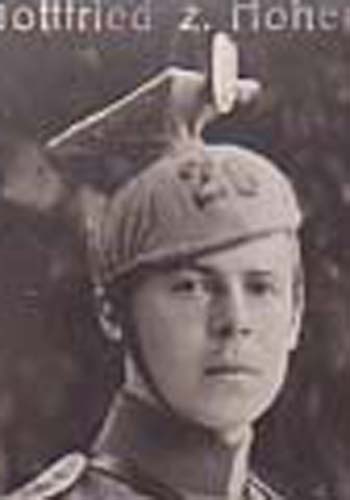 |
|
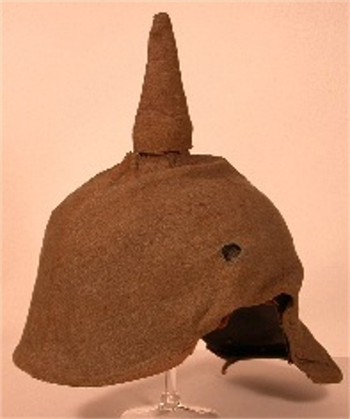 |
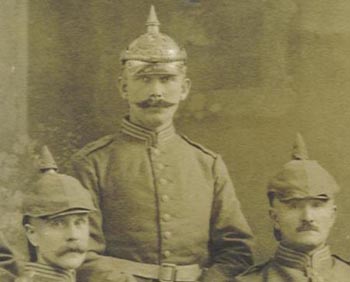 |
|
| Thanks to the teaching of someone named Mr. X. we have an example here of two different Uberzug’s from a Saxon shako wearing unit. One is made of cloth and the other is made of oilskin. | 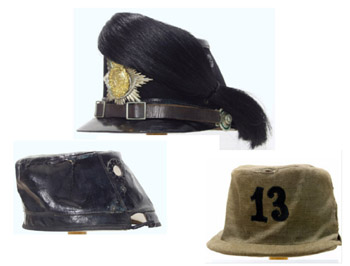 |
|
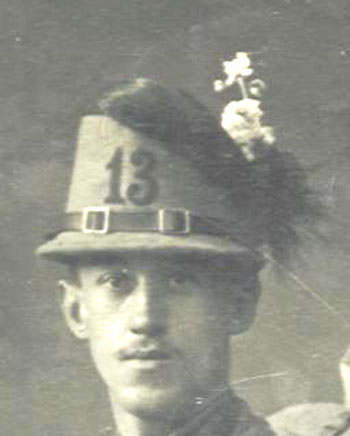 |
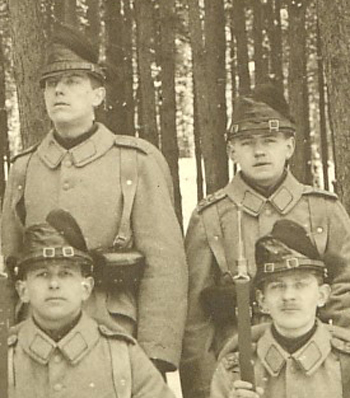 |
|
| I have many people to thank for contributions to this article. Glenn Jewison and Dr. Buchholz provided all of the AKOs and the pictures of RJR 15. Randy Trawnik provided most of the pictures of artifacts, either from his collection or pictures he took at the Museum in Rastatt. He also guided me through series of phone conversations. Mr. X provided the Saxon pictures of a helmet in his collection. Max Chafotte provided a picture of a Uhlan (what else!) wearing an Uberzug. Brian Kostel provided the last picture of the Saxon oilskin and many more. Brian Loree Provided the 61st Arty berzug and the DRP. James LeBrasseur gave a great deal. Without that kind help of these people this project would be nowhere. | ||
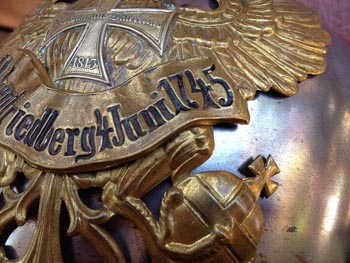
Kürassier-Regiment Königin (Pommersches) Nr.2
Kürassier-Regiment Königin (Pommersches) Nr.2
Kürassier Regt Nr 2 Wappen
Joe Robinson
December, 2014.
| Our latest book is on the battle of Halen. In that engagement on 12 August 1914 four German cavalry regiments charged eight times into glory and disaster. It commonly became known as “The Battle of the Silver Helmets” because of a poem that was written after the battle. Of the four German cavalry regiments only one of them wore a silver helmet Kürassier Regt Nr 2 (KR2). This is a helmet from that regiment. It is an enlisted helmet with a Landwehr cross. While this is wonderful the absolutely original helmet and Wappen have a very unusual bandeau. | ||
| Kürassier-Regiment Königin (Pommersches) Nr.2 Pasewalk was the titular regiment for the Kaiser’s wife. With a regimental home in Pasewalk, there is still an exchange of visitors between this town and Halen.
ps1928 from Wiki Augusta was known as “Dona” within the family. She enjoyed a somewhat lukewarm relationship with her mother-in-law, Victoria, who had hoped that Dona would help to heal the rift between herself and Wilhelm; sadly, this was not to be the case. The Empress was also annoyed that the title of Head of the Red Cross went to Dona, who had no nursing or charity experience or inclination (though in her memoirs, Princess Viktoria Luise paints a different picture, stating that her mother loved charity work). |
|
|
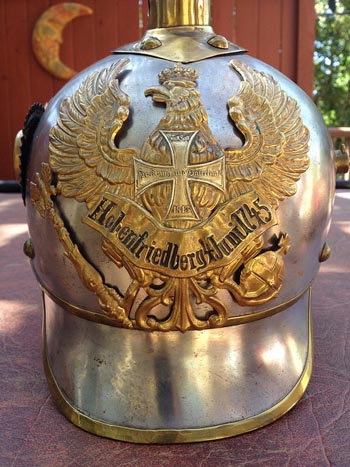 |
The helmet for this regiment carried a bandeau that commemorated the battle of Hohenfriedberg in 1745. This was a great victory for “Frederick the Great”. Later Prussian and German officers studied the charge of the Bayreuth Dragoons as a model for aggressiveness. Also, the encirclement and annihilation of the Austrian infantry and the quick and decisive manner in which this battle played out is also often likened to victory Schlieffen style. This battle showed that the Prussians could crush a numerically equal enemy during the last part of the War of the Austrian Succession.
As lineage and heritage would have it those dragoons eventually became Kürassier-Regiment Königin (Pommersches) Nr.2. They were authorized a bandeau on the eagle by AKO on February 7, 1861. The helmet style changed from a step visor to the rounded style in 1889. This appears to be a 1889 model helmet shell. |
|
| What is different about this and the purpose of the article is the bandeau shape. With the help of several people we seem to have uncovered a difference between active force Wappen and those Wappen that have a Landwehr cross. Specifically we’re looking at the end of the bandeau. The tail if you would. On the active forces you can see the tail going over the legs and extending down towards the feet of the Eagle. Looking at many pictures of active force bandeaus you could see this. For example this sample from the collection of Steve McFarland and compare it to the bandeau on this helme on the lower right. |  |
|
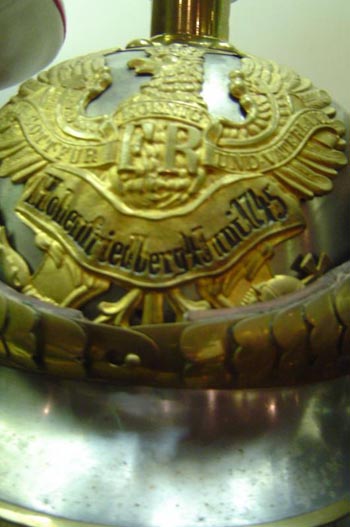 |
 |
|
|
|
Another clear difference between the active and reserve force Wappen is the lack of the motto. That is pretty standard as the motto was found on the Landwehr cross. You can compare that in the pictures above. There are a few other photographs that can deter any doubt. The back of the Wappen looks very good. You can see how the bandeau was put into place at the same time as the rest of the solder.
|
|
| This shows that bandeau was a separate piece. | 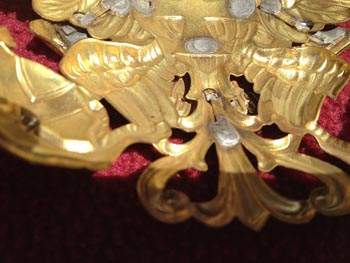 |
|
| This picture of the back of an active officer’s plate from the Schaeffer collection shows that the bandeau was integral to the plate and done in one piece. The reserve one was obviously done in two pieces. | ||
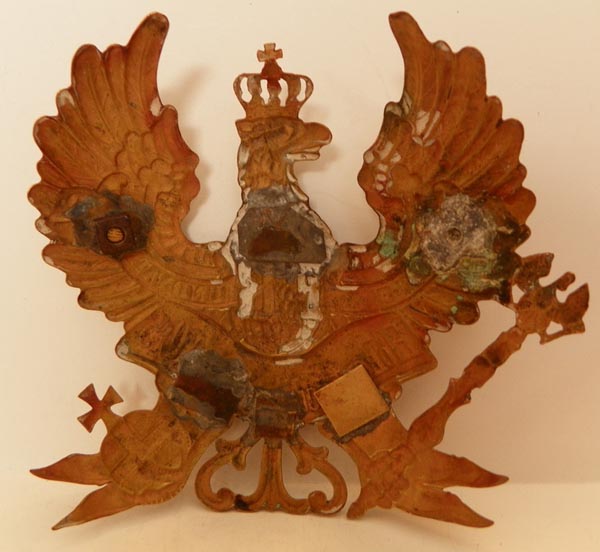 |
||
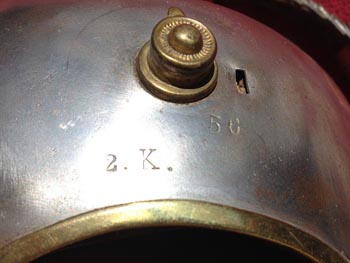 |
Marked to the Regiment underneath the left ear it also has the updated M91 post instead of the old threaded screw attachment as per the directive of 18 May 1894. | |
| But then we have this. What is up with all the holes? One easily gets the impression that this shell has been repurposed. Updated from an earlier model into the current 1889 configuration.
Now there are problems with that theory also. When the helmets changed from the 1867 model to the 1889 model the reinforcing ridge on the back was eliminated. This helmet did not have a ridge. So is the idea/impression wrong? Well here is another idea. The even older models going back to 1842 had a different kind of bandeau all together. The older version as seen from this picture from the Weitze website went around the base of the shell. Though you cannot see from those pictures the method of attachment is that what that hole in the bottom center of the shell is all about? There is no ridge on the back of an 1842 style helmet. Could this shell be from that long ago? |
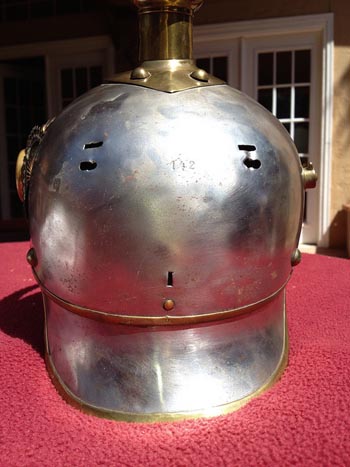 |
|
 |
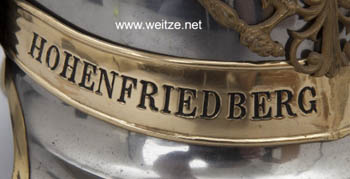 |
|
| Alas no it was a splendid but misguided thought. The flat holes are therefore split rivets to retain the liner band. One in the front and the other ones by the M91 posts. The horizontal slots indicate the use of loops on the back of one Wappen. I guess we will never know why there are two sets of holes for Wappen. A special thanks to R1 who nudged me consistently and kept my crazy ideas from running off the tracks. An interesting study! | ||
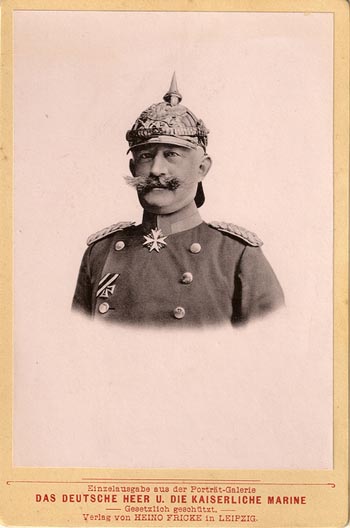 |
Oberst (17.2.03 A) Otto v. Schwerin, Regimental Commander of Kürassier-Regiment Königin (Pommersches) Nr. 2 from 15 December 1900 until assuming command of the 10. Kavallerie-Brigade on 22 April 1905. Oberst v. Schwerin commanded his brigade initially in the rank of a Colonel until his promotion to Generalmajor on 14 April 1907. He retired on 18 February 1908 and was recalled to service in WW1, serving as the commander of the 20. Infanterie-Brigade home command and simultaneously as a sector commander in Fortress Posen. On 8 June 1915 he became a sector commander in Gouvernement Libau and deputy Governor of Libau from 6 August 1915 until 30 November 1916. He received a brevet promotion to Generalleutnant on 27 January 1916. Born on 27 July 1851, he died on 13 October 1939. An absolutely wonderful portrait.
All of this from Glenn J. |
|
| And as a parting shot a picture from all our upcoming book “The Last Great Cavalry Charge.” – An officer from KR2. | 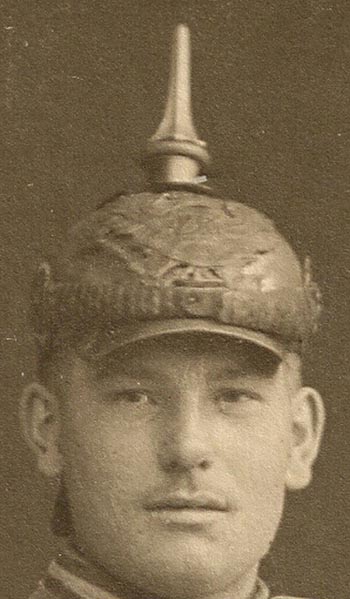 |
|
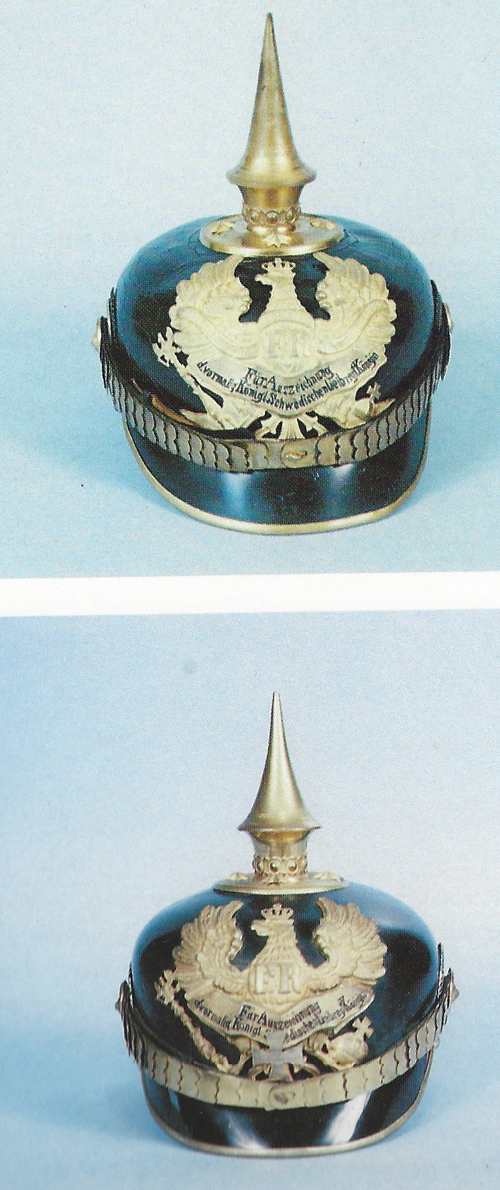 |
The great learning experience from this has been about the Wappen. based on the keen observation of a collector from the West Coast of Canada it seemed as though helmets with a similar type of bandeau Might follow the same pattern – Active Wappen with “tails” and reserve wappen without. This is reinforced by several examples such as this one of Fusilier Regts. 33-34 in Johansson p. 41, Stubbs on pgs. 134-35. There were also some artillery battalions that employed this style of bandeau, but pics of reservist’s helmets are hard to find…
However, there is an example in Johansson on p40 of a Reserve GR9 officer helmet (Colberg 1807) with the tails.What this seems to indicate is that reserve plates with absent tails are merely a variation rather than an official mandate… This is validated by an absolutely wonderful example provided by Bruno Peault showing the exact opposite of the example on the left. The bottom line is that there are two variations on these bandeau and they do not seem to fit any kind of special pattern. I don’t think you’ll find this in any reference book. |
|
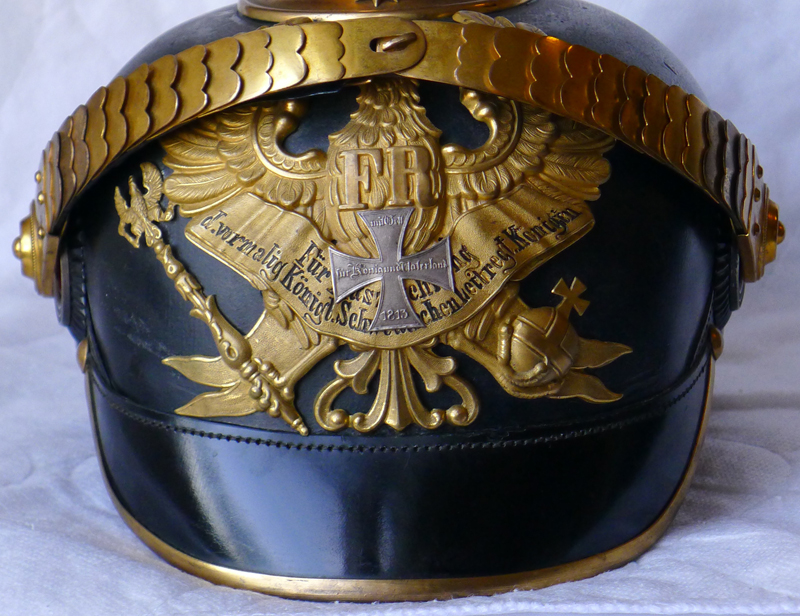 |
||
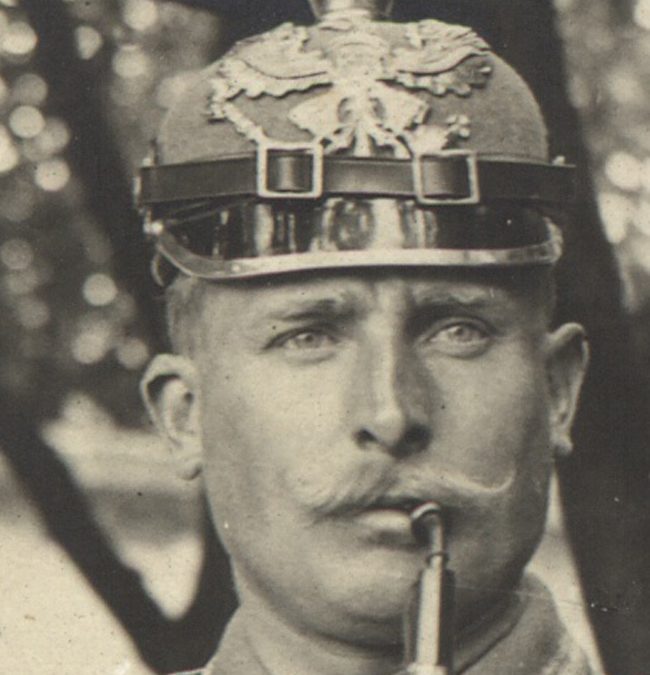
Some Thoughts About Filz
Some Thoughts About Filz
Joseph Robinson
26 May 2005
A few thoughts on filz. This is not intended to be any kind of final word but rather a method of generating discussion on the topic.
We always hear a lot of misconceptions about filz. The old one was that imperial Germany ran out of leather sometime in August of 1914 and substitute material or ersatz had to be adopted because of the shortage. Filz was suddenly discovered and the felt pickelhaube suddenly came into use. This old story died very hard and is still in existence in a few places. However, it is overwhelmingly false.
The real reason for the adoption of ersatz helmets was because the total requirement for helmets totally outstripped the amount of helmets in storage or in the production line. This is confirmed by KM Nr.4315/10.14.13.3 Berlin 20 Nov. 1914. If you look at pictures of 1914 you will see old-style helmets pressed into service alongside newer models. The War Ministry of the various kingdoms leapt into service in trying to fulfill the needs of the created units for helmets. Existing industries and existing technology was best used to fill this need quickly without doing a great deal of retooling. There was an existing filz industry as hats made of filz had existed for quite some time. You can quickly bring to mind some gentlemen wearing a “Bavarian hat”. These were made of filz.
What do you mean by filz? Traditional wisdom says that this is felt. It is often correctly referred to as felt. However, it was not felt in the modern style but rather treated animal fur. Two animals parts gave their all for this industry one was rabbit fur and the other one was sheep’s wool.
Here’s a quote from a hat company (http://www.noggintops.com/page.cfm?p=37):
“Fur felt, made from the fine hairs of rabbits or beaver, is generally thinner, lighter in weight, and more dense than wool felt. Due to the density of the material, fur felt hats can have a raw edge brim (just cut, no binding or welt) while wool felt hat brim edges must generally be bound or welted (turned over and sewn). The greater density of fur felt generally relates to a longer lifespan of the hat (there are Civil War era fur felt hats that could still give good service). Fur felt hats can also be given a smoother finish than wool felt, which is why it is a preferred material for dress hats. Both felts have similar characteristics of water-repellency and breathability (though there are a host of poor quality wool felt hats out there that fall apart when they get wet–none of which are sold here). Wool felt hats have an edge in insulating ability in cold weather.”
In the Bavarian archives there is a substantial listing of the different types of filz helmets offered by one firm–Bruno Sturm of Guben
(Derivative firm still exists making hats.) This was an existing company that produced hats for the colonial troops, religious uniform hats, and for the youth groups. This was an existing industry. A prototype of a helmet had been used by colonial troops in Asia earlier in the century (above 1901). And there had been an experimental Prussian helmet in 1905. Therefore, it was copying an existing technology. Both of these kinds of helmets were built around a filz helmet body with added on leather or fibre visors. The experimental model was withdrawn in 1906 because it did not “shine”. While it might have been withdrawn the stocks were certainly not destroyed and seem to have been reissued in 1914. The best example of this is located Tony Schnurr’s site along with a fine essay. http://www.kaisersbunker.com/dunkelblau/helmets/dbh71.htm This experimental helmet was a leather helmet covered in filz.
Basically there were 2 general types of helmets offered by Sturm. Those that were lacquered on the outside and those that were not — which were considered “finished helmets”. You could get a finished helmet with both a front and back visor made out of either rabbit or wool. Shakos were the same way except that they appear to always come with visors.
Again this is only one company and there were obviously many variations on a theme. The sole purpose here is to show that there were 2 different materials used. I cannot say that they look any different but perhaps collectors with more examples will be able to show the difference. Another letter to Bavarian war minister, G. Benedict. Berlin 30 Nov 1914. BayHStA. Abt. IV M Kr 5103, cautions the ministry about visor trim saying that his firm could produce this however they have been frequently rejected by some other BKA because it had come loose easily. In addition it cost .25 marks more with the front trim than without. Again with this one example it seems as though both kinds of materials could be colored field green or field gray.
There is another document in the Bavarian archives– Bayer. III. A.K. Nürnberg 12 Apr 1915 Bayer HStA Abt IV M Kr 5103. Bayer. III. Army Corps to the Bavarian Ministry of War providing feedback about the various types of ersatz helmets. In this letter, it is claimed that most of the filz helmets were issued to replacement units and troops. They said that the spiked helmets made of filz were both light and comfortable. However, a major complaint was that they were not waterproof, absorbed water from rain and snow, became heavier and stretched out losing their original shape. There was also a complaint that they provided little protection from edged weapon wounds. The author of the letter suggested a solution by using filz helmets that were lacquered and therefore waterproof. There was no existing example however in the III Bavarian Army Corps.
6 days earlier, III Bay Army Corps 6.Apr 1915 BayHStA. St. Benoit Abt. IV M Kr 5103, lamented that the filz took a lot of time to dry out and after they did the filz became hard and broke easily. They also provided little protection against shell and stone fragments. Medically, there were complaints about pieces of filz being driven into the wound causing infection and inadequate healing. The suggested solution of this organization was a waterproof helmet cover.
Then I. Bayer.A.K.12. Apr.1915 M Kr 5103 also responded to this request for feedback saying that they had not had adequate time to make final judgments on them. I Bavarian Army Corps preferred filz to metal helmets because of their comfort but also lamented their absorption of rainwater and that they lacked adequate ventilation to dry out therefore losing their shape.
There seems to have been an entire constellation of various filz helmets. Some with visor trim, some without, some with roled trim, with and without different kinds of rear trim on the spine. Some have filz visors others do not. There are also cavalry helmets made from filz. There also seems to be an entire constellation of providers. It seems to have come from the craft guilds but I do not know enough yet. There also seems to have been a huge difference in pricing. As different army corps and war ministers were seeking products the manufacturers raised their prices. There was a shortage of the replacement hats and the demand was very time sensitive.
Here are some things that I would love to see from collectors who have examples.
1. Can you visibly tell the difference between wool and rabbit examples?
2. What was the relative price of the different models?
3. Was there a production run of leather or fiber visored filz helmets in 1914 or later? Or were all of the leather looking visors 1905 reissues or repair jobs?
4. Can we show various examples?
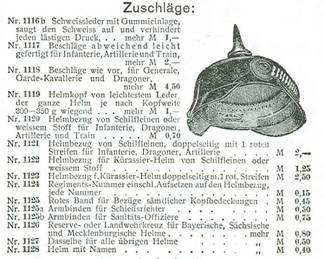
The Relative Cost of a Pickelhaube
The Relative Cost of a Pickelhaube
Joseph Robinson
Draft 2
25 April 2007 update
Bowman in Volume 1 pg 345-348 talks about period values of pickelhauben but offers no sources. He states that Lieutenants made 120 Marks a month and that a helmet was relatively expensive [i]. This intrigued me as I knew it was big industry to make Pickelhauben before WW1. Four generations of German soldiers had worn pickelhauben. [ii] Anecdotal evidence tells me 6% of the German economy was involved in Pickelhaube creation in some way. Bowman gives a much smaller number of 20,000 directly involved in production. [iii] I don’t recall Tuchman making anything of it in The Proud Tower but that is a huge part of the economy. Pickelhaubes were the common gift. Martin in his book gives the impression that a normal officer had 3 Pickelhaubes [iv]. He never came out and said it but the impression was one to wear walking out, one for normal duty, and one for parades. [v]
So I went off to find some data and determine how close Bowman was in his assertions.
The first thing I had to find was pay tables. This proved very difficult as the expected source Fuhrer durch Heer und Flotte [vi] had every possible pay table for travel, housing, and pensions but not the monthly pay. NCO and OR pay was in Das Kleine Buch von Deutschen Heere but not officers and it was dated 1901: too early for other evidence to match. Finally with the help of a German collector I found a source. [vii] While salaries varied by rank and longevity, here are a few samples:
F|r einen Hauptmann, Rittmeister, Stabarzt, Oberstabs- u. Stabsveterindr
- a) vom 1.-4. Jahre 283,33
- b) vom 5.-8. Jahre 383,33
- c) vom 9. Jahre ab 425
F|r einen Leutnant u. Oberleutnant
- a) vom 1.-3. Jahre 125
- b) vom 4.-6. Jahre 141,66
- c) vom 7.-9. Jahre 158,33
- d) vom 10.-12. Jahre 175
- e) vom 13. Jahre ab 200[viii]
So there it is. 125Marks per month in 1913 for a beginning officer. Remember I’m talking helmet costs now not total cost of living let alone equipping an officer. The Mark was about twenty cents and The US Lieutenant made $125 or 5 times the German Officer. [ix]
It is also instructive that NCOs and ORs made significantly less. [x] I point to the entry on Fähnriche to emphasize that these guys made little. Senior NCOs often had private purchase helmets. OYVs had to come fully equipped, so someone shelled out for them. It is curious to note that the Feldwebel in Life in a Garrison Townenriched himself by extorting money from the OYVs. Not only would he hit them as recruits but would accept payment annually during training, from some to lessen the severity of their duties. As a result he lived quite well and could afford fineries.
b.d. Fu_truppen b.d. berittenen Truppen
Gemeine 9,00 Marks 10,50
Gefreite 10,50 12,00
kapit. Gefr. 15,00 16,50
Fahrer wie f|r 15,60
Berittene, f|r
Hobisisten usw.
Fähnriche u. Unteroffiziere mit 25,20
weniger als 5 1/2 Dienstjahren
Sergeanten u. Unteroffiziere nach 39,60
5 1/2 jdhr. Dienszeit
Vizefeldwebel, Sergeanten u. 47,10
Unteroffiziere nach 9
jdhriger Dienstzeit
Feldwebel, Wachtmeister 62,10[xi]
The next step was to determine the cost of a helmet. For this I have four catalogs. The prices used for this article are from the Deutsche Officer Verein (DOV). The one I will use is dated April 1913. Tumhe other is an undated extract. [xii] Bowman alludes to another catalog in volume 1 but gives no source material. [xiii]
I’m not pricing uniforms or anything else. This is helmets only. The paucity of catalogs leads us to use a construct that is probably not universal . In the DOV catalog the first thing to notice is that all helmets have three levels you could buy at. I put them out as good, better, and best. As quality increased to did the cost. Lets look at an example of a line infantry helmet.
This construct of three levels is obviously not universal nor easy to show. However in the Neumann catalog and the Wunderlich catalog there are also three levels. There could easily be 10 levels with custom pieces etc. High value plate, low value leather etc. The only real way to determine is to have a catalog like DOV and three representative examples from the same year as the catalog. Each catalog differs. Each retailer claimed that his item was tremendously good. Differences in furniture is difficult to capture and even very nice plates suffer from 100 years of dirt, UV light, abrasive cleaners and who knows what. So it is very difficult to say: ‘This helmet is a low quality example. Some plates are better than others and as the war progressed the level of detail suffered. Part of this is a result of thin materials but it could also come from the wearing out of the dies. Helmet plates were die struck. So as the die wore out the plate would have less detail.
The uniform regulation of 1911 is very specific about sizes of fixtures. How big the chin scales had to be etc.[xv] There was nothing however, that differentiated the thickness of material. As the war went on all metal fixtures got thinner. Steel or zinc replaces brass prior to gilding. All of these were supply related and I have no evidence that it was price driven. As things became scarce I’m sure helmet price inflation kicked in but I have no data.
The one constant that you can compare on helmets is the quality of liner. Lots of gradient differences here so I will choose three distinct types for my construct.
BEST
It always seems that the maker Awes-Marke had really good helmets. Not all of the same quality, but the examples I have seen are a cut above. So our top grade example will have a premium liner with a tightening band through the leather and some embossing.
Better
Another Awes-Marke helmet, this one without the premium markings. Very fine helmet in all respects. This is my representative mid grade. At least I can compare two similar but not equal Saxon helmets. If you look at the picture in the DOV catalog under Zuschläge it shows a liner similar to this.
Good. The lowest of the three. Standard private purchase liner. The top cloth can run the gammut from cotton to silk and the underside of the visors run the gammut from painted paper to leather.
So there are three grades. There is much fault in this and of course anyone can take exception to it. These three are merely a construct. The Neumann catalog proved the existence of a Diensthelme or a service helmet. Diensthelme was a major type in the Wunderlich catalog. A Diensthelme is a privately purchased helmet for work or daily use. Without question the Diensthelme was the lowest quality and the least expensive. Both officers and one-year volunteers could use a Diensthelme to defray wear on the good helmets
OK so here we are a brand new Lieutenant of line infantry of a unit that had a busch and trichter. Our Sample LT we will put into Infantry Regiment 25. Lets buy a middle of the road helmet #1921 from the catalog. Looking pretty good and only down 19.50 Marks.
Ok so now a cover and other upgrades.
Cover 1120 =.70 Marks
Put my regiment # on the cover cost per digit 1124=.15Marks so =.45 Marks
Maneuver band.1125= .45 Marks
Put your name in it .1128 (Seldom used I don’t know why) =.40 Marks.
1116b offers Swiss leather liner with a rubber lining to absorb sweat and reduce pressure= 1Mark
1117 Seems to be a labor charge to change fittings for Infantry, Arty, or train. I don’t know how you avoid doing something. = 2 Marks
1118 Seems to be the same thing for a cruciform base and a much higher cost.
1119 makes it feather weight = 1 Mark
1120 is the white material in the skullcap. We will pass.
1121 A Liner…. got to have one =2 Marks
1124 Charge per letter to put your unit number in. I’ve only seen this once – we pass.
Armbands reserve crosses and names we can do without. But we have still added 8 Marks a total now of 27,5Marks[xvi]
Now comes the parade stuff. A Busch and Trichter. Again not all units had these really reducing the expense (16.1 Marks). It would not be a unit we would cherish to be in.
Three categories again. Notice how white is not only less common but also more expensive. We will go for top of the line black which costs the same as bottom of the line white. 15 Marks. Our total is now a whopping 42.5Marks. A couple of interesting points. One is the lack of standardization in the spike threads. This disclaimer clearly warns the buyer that if you didn’t buy the female end of the spike base from the DOV you had to leave the base to match up the threads. The second point of interest is how much cheaper horsehair trichters were. A third or less! Look at this table for Fähnriche.
Just when you thought you were done the box the Pickelhaube came in costs 10.25 Marks and the tube for the Haarbusch =1.10 Marks[xx] This adds 11.35 Marks to our original 42.5 for a total of 53.85 Marks.
So what does it mean? This was no small expense. No wonder they were common gifts given a 54 Mark price tag. Much to give. It was easy to add to our costs and elite units cost way more. If the new officer made 125Marks per month then 43% of a month’s salary. When you start adding in uniforms and horse furniture you needed another source of funds. There is little doubt that the debt load of a young officer without another source of income would be huge. The notorious book Life in a Garrison Town detailed the story of officers seeking loans and money constantly. While uniform costs were not singled out in that banned book, You can see how uniform costs could drive up total cost and one can understand how marriage became the financial salvation. DeBeers, diamond sellers and wedding planners today recommend the groom spend two month’s salary on an engagement ring. Pickelhaube were not that bad but if you needed three of them?
Did you need three of them? No. Especially as a One Year Volunteer (OYV) I doubt if you had three. But a line officer I cannot imagine having less than two. You could lose one or it could be damaged or wet. Wet leather helmets would be fun as Pickelhauben are not waterproof.
One of the most practical comments generated by an early draft of this article was that there must have been a thriving business in used Pickelhauben. You wouldn’t throw something that cost this much away. They also had a service at the DOV for rebuilding helmets on pg 40. Seems like a new one might be almost as cheap but for 15 Marks you could reclaim an old helmet. rebuilding and converting helmets was a major source of revenue for retailers. Conversions of old-style helmets, one-year volunteer helmets, and helmets for different regiments were made available through different sellers. Repairs were offered. This COULD explain a bunch of professionally plugged double holes. It also shows minor state helmets here. You could mail order a helmet so to speak.
[i] Bowman, J.A. The Pickelhaube Volume 1, Line Infantry, Imperial Publications, Lancaster, England, 1989, pg 345.
[ii] Bowman, J.A. The Pickelhaube Volume 2, Wartime, Ersatz,Reserve & artillery, Imperial Publications, Lancaster , England , 1992, pg 27.
[iii] Ibid.
[iv] Martin, A.G., Mother Country Fatherland, Macmillan & CO, London , 1936.
[v] Op cit, Bowman V2, pg 27.
[vi] Freidag, B. Fuhrer durch Heer und Flotte , Verlag J Olmes, Krefeld , Germany 1914.
[vii] Rabenau, von Die deutsche Land- und Seemacht und die Berufspflichten des Offiziers, Mittler u. Sohn, Berlin 1913 (Pg. 20-21)
[viii] Ibid.
[ix] Clemente, Stephen, For King and Kaiser, Greenwood Press, Westport , CT , 1992, pp. 161-162.
[x] Ibid.
[xi] ibid
[xii] Deutsche Officer Verein, Preislist 27, Armeehaus , Berlin , 1913.
[xiii] Op cit Bowman, Volume 1 pg 345.
[xiv] Ibid pg 25.
[xv] Behleidungs-Vorschrift für Offiziere und Sanitäts-Officecere des Königlich Preussischen Heeres , Berlin , 1911, Mittler & Sohn.
[xvi] Op Cit tDOV pg27
[xvii] Op cit DOV pg 27.
[xviii] Ibid. pg. 29
[xix] Ibid.
[xx] Ibis pg. 38
 Look at this picture. When one thinks of the invasion of Belgium we think a wide open plains. Easy terrain for both cavalry and infantry. No hills. Some rivers. But looking at the picture of the 30 or so kilometers between the German border and the fortress at Liège you can see that this is pretty rough country. This terrain had to be covered before anybody started attacking any forts in Liège. In addition, and more importantly, the railroads leading from the homeland through Liège had to be open and free to move along with large amounts of supplies. Supplying the German army was a function of railroads cars. Therefore, we would expect that the Great General Staff of the German army would ensure that their plan included clearing these railroads. But that part of the plan proved to be too tough of a nut to crack. So the Germans kind of ignored it and hoped for the best. This alone should be reason to run out and purchase the book.
Look at this picture. When one thinks of the invasion of Belgium we think a wide open plains. Easy terrain for both cavalry and infantry. No hills. Some rivers. But looking at the picture of the 30 or so kilometers between the German border and the fortress at Liège you can see that this is pretty rough country. This terrain had to be covered before anybody started attacking any forts in Liège. In addition, and more importantly, the railroads leading from the homeland through Liège had to be open and free to move along with large amounts of supplies. Supplying the German army was a function of railroads cars. Therefore, we would expect that the Great General Staff of the German army would ensure that their plan included clearing these railroads. But that part of the plan proved to be too tough of a nut to crack. So the Germans kind of ignored it and hoped for the best. This alone should be reason to run out and purchase the book.
In this rough terrain along the railroads were four tunnels that the railroads ran through. If the tunnels were not there the Germans would not have any choice but to build a bypass which could take months. So the Germans in the original Handstreich plan sent cavalry squadrons to secure the tunnels. Yes that’s right. The only plan was to assume that there would be no enemy resistance and send a few horsemen galloping many kilometers to secure this absolutely crucial point.
The Belgians were not stupid. They planned on dynamiting these tunnels prophylactically. While all four tunnels were rigged with explosives, they had serious problems with the age of those explosives and their vitality. Only one tunnel was permanently blocked through the use of these explosives. This picture shows the Trois-Ponts Tunnel.The plan was to create an obstacle in its middle. Six of the eight charges detonated caused an obstruction such that on August 11 the Germans started constructing a bypass track. They finished on August 30. Meanwhile, trains stopped on one side of the tunnel, and their cargo transshipped. German accounts said that on August 11 the line was cleared up to the tunnel of Trois-Ponts but with a break of forty-two meters in the middle it would take months to reopen. In consequence, the Germans then opted for a 1.75-kilometer bypass to span the River Salm, building a 120-meter long and twelve-meter high wooden bridge. That work lasted until August 28.
After that tunnel repair was entrusted to a private German company, Grün und Bilinger, which started work on August 30 and cleared the passage on one track by November 26. In early 1915, the Germans decided to rebuild the tunnel for two tracks while maintaining traffic on a single track. That work ended in December 1915.

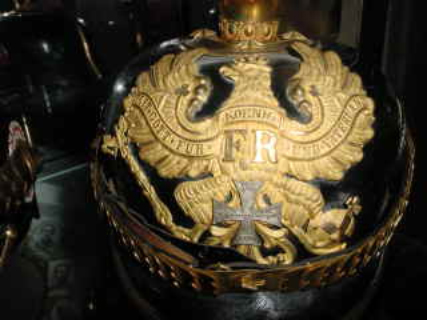
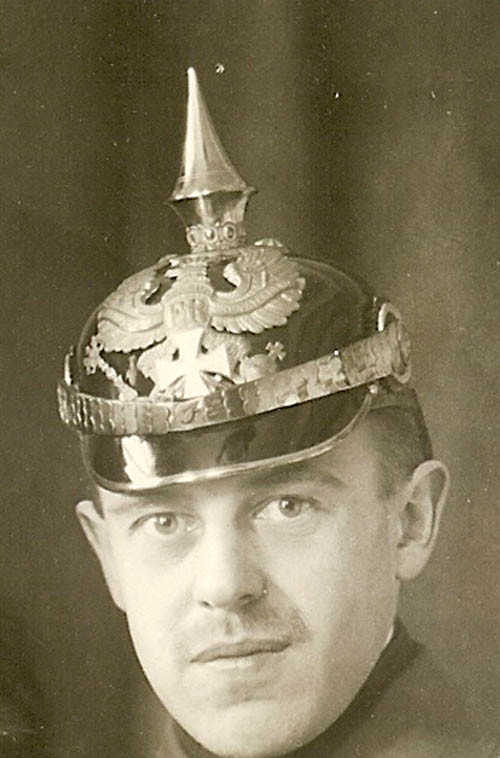
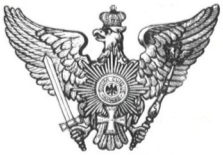
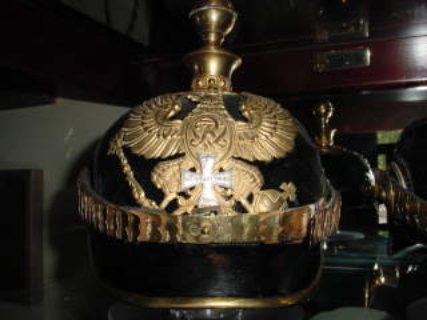
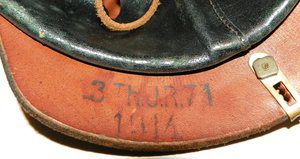 without going into the code. So if you have some great solution let me know otherwise standby to take a long time.
without going into the code. So if you have some great solution let me know otherwise standby to take a long time.